You could spend today making a special Sunday Sauce for a large pot of pasta — or you could spend today taking this personality quiz and finding other ways to procrastinate from the grind of adult responsibilities. Doesn’t the latter sound a lot more fun! But lo, I have made myself hungry by merely typing the words Sunday Sauce, and now you must all come on this culinary journey with me of answering a bunch of pasta-themed questions in order to find out what lesbian pasta shape you are. Ready? Let’s eat take a quiz.
1 Comment
Satanic Slasher Series ‘Hell Motel’ Has Lesbians and Blood Sacrifice if You’re Into That Sort of Thing
Sometimes your younger girlfriend convinces you to purchase a haunted hotel where, thirty years before, a bunch of people were brutally murdered as part of some classic 1990s blood sacrifice ritual that would have the satanic panic crowd frothing at the mouth. And sometimes she convinces you it’s a great business idea, actually, to reopen the roadside motel as a curio museum and immersive experience for the true crime obsessives. And hey, how about whipping up some viral marketing campaigns by inviting a bunch of influencers and low-level celebrities in the true crime space to an exclusive opening weekend event where you lowkey torment them for social media content?
At least, this is what occurs leading up to the events of the new straightforwardly titled Shudder original slash series Hell Motel. Brynn Godenir and Michelle Nolden play Ruby and Portia, two opposites-attract-style queer women (Ruby wears blue lipstick and all black witchy clothes, leans goth with a passion for the macabre; Portia is an older blonde mommi in cream turtlenecks and sensible slacks) who are partners in life and in business, co-owners of the titular motel from hell. We don’t know much about their backstories other than the fact that Ruby wanted to buy the motel and Portia did not, thought she’s eventually convinced by Ruby and their realtor (delightfully played by Canadian drag queen Icesis Couture). When history starts repeating itself and a masked killer called Baphomet brutalizes the special guests invited to the hotel for its grand opening, it becomes clear Portia kind of had a point.

My friends and I recently posited a theory that some shows are “fever shows” — not shows that feel like a fever dream but rather shows that would perhaps be best enjoyed with a fever, which somehow feels distinct from a show best enjoyed high. Hell Motel is a perfect example of a fever show. It’d be best watched when feeling slightly outside of reality and your corporeal form.
Slasher tropes are fulfilled satisfyingly, and Hell Motel sprinkles in some specificity that keeps it from being pure pastiche, but the script is often ludicrous, and the women are written bizarrely. Hell Motel also falls into the strange trap of some lower-budget horror fare where it wants to be both horny and Puritanical about sex all at once. The show itself is often suggestive and takes stabs at incorporating the erotic but ultimately feels weirdly sexless. Perhaps the most convincing erotic element of the show is the killer couple who are horny for satan. Good for them, keeping the romance alive through ritualistic blood sacrifice. (Sadly, this is not the lesbian couple.)
One of the special guests to the hotel is a woman who has made a name for herself by sleeping with serial killers. She’s portrayed as damaged, dangerous, delusional, a man eater and a slut. Some flashbacks are intended to flesh her out but don’t really add much more to the show’s flat portrayal of her. Sexuality in Hell Motel feels dampened. It’s like the show wants to be horny but also is too scared of over-sexualizing the characters.
I don’t need too much depth to the characters in a slasher, but it’s like Hell Motel mistakes thick exposition for character depth. I don’t need their backstories so much as I need them to have clear and discernible motivations. We get some of that in the series’ second episode, one of its strongest, as it leans into the disturbing idea that anyone immersed in true crime has the potential to become violent. When Hell Motel wanders into commentary on true crime culture in general, it’s at its most cogent and compelling. But it often feels just like that: aimless wandering down the dim corridors of a hotel, neglecting to pry the doors most calling to be opened.
AF+ Crossword Has a Few Tricks Up Its Sleeve
Will Everyone Always Seem Second-Best to My Ex?
Are you allowed to miss your ex while dating new people?
Q
“Allowed” isn’t quite the right word, but you get the gist. It’s been almost 10 months since my ex broke up with me suddenly. The relationship itself was beautiful and kind and pure. We dated for two years and had plans for many more.
When they ended the relationship, I was left with very little closure and a mind spiraling trying to figure out what happened. I’m learning to accept that I’ll never get that closure, as horrendously painful as that is.
As awful as this heartbreak has been, that relationship checked all of my boxes. I wish I could say I was exaggerating, but I’ve gone back in my mind so many times to try to figure out why the universe has decided this relationship wasn’t right for me, but I always come up empty. I miss them in every way, and as much as they’ve hurt me deeply, I still love them deeply.
We’ve been no contact for about eight months. I’ve stopped holding my breath hoping they will reach out to me, but I still think about them and miss them every single day.
In the meantime, I’m doing my best to move on with my life. I’ve been doing lots of therapy and hobbies and I’ve also been dating. I’ve met some interesting people, but no one that gave me the same feelings I had when I first started dating my ex.
I recently started seeing someone who comes close though. I like them a lot, and I can see this developing really well. A big part of me was hoping that getting truly excited about someone new would help me disconnect from this unrequited love for my ex, but that hasn’t been the case. I’ve been enjoying this new person and I’ve been open with them about how I’ve been grieving my last relationship. The thing I feel awful about admitting out loud though is that I still wish I could be doing all of these things with my ex instead. I’m worried that anyone I date for the rest of my life will be second-best to my ex, and that feels so unfair to my future partner(s).
A
Eva: Healing is not linear. We cannot control the feelings that heartbreak brings us. What we can control is our actions that stem from our feelings. That said, if you really feel that your past heartbreak is hindering your current relationship, I would take some time to yourself. As someone who has dated multiple people who were still deep in the grieving stages of past breakups, it’s a rough position to be in. I ended up leaving those relationships because I could only take so much. These aforementioned exes compared me to their past partners on multiple occasions and were quite depressed from various instances involving their past partners. As much as they tried to reassure me that all was well, I went with my gut and walked away. I bring this up in case you find yourself doing similar things. This is not to deter you from continuing to pursue a relationship with this new person. You very well may heal sooner than you think. I just implore to be self-aware and to really ask yourself where you’re at in your healing journey.
Despite my own past traumas of exes who were not over their exes, I do not necessarily fault them for being where they were. It is what it is. Life is messy, and our feelings are even messier. We never know where we are emotionally until we’re in a situation that challenges us. I encourage you to keep asking yourself the hard questions. One of those is, why are you holding onto this person who left you? I have found myself yearning after someone who does not want me on many occasions. I once was so caught up on someone that I jeopardized several facets of my life. The day I let them go was one of the most difficult moments of my life, but it was so worth it. I realized that no one who really cares about me would put me in a position to hurt as badly as I did, especially not without an honest conversation. I hope that you come to the same conclusion.
If you find that you don’t have the space in your heart to fully pursue this new relationship because nothing and no one compares to your ex, then let this new person go. However, if you can get to the other side of this heartbreak–without using this new person as an avenue to healing–then you’ve unlocked something special within yourself. And that’s better than any relationship. You know what that is? Growth.
Summer: Short answer: yes. Long answer: yeeeeeeeeeees.
There is no cut-off time for relationship grief. Everyone has to work at their own pace and just because you’re grieving for a past love doesn’t make you an inherently bad person for stepping back into the pool. What matters here is how you choose to work through your grief and how you involve new partners for it.
To me, you’ve checked basically all the boxes for reasonable behavior. You’ve given it time and therapy. There’s no contact between you and the source of those strong feelings. You’re rebuilding your life (which includes dating again). And you’ve informed your new partner about your feelings and they should have a place to make their informed decision. I don’t see anything wrong with your approach and need to try dating again. And just between you, me, and the entire AS+ readership: You’re doing this in a much more mature and stable way than I did.
Laneia: Your grief belongs to you, and you’ll hold it and process it and learn from it for years and years to come, because it really fucking mattered! Your love mattered, and so the loss of it matters. What you’ve done in the wake of this breakup — how you’ve made space for it, how you haven’t let it lead the way, how you’ve reached out for support — that’s what I hope you’re most proud of: the trying, that effort. You can miss them and still believe in today, and tomorrow, and even yesterday tbh. You can keep wanting what you had with them, and it doesn’t need to be a slight to whomever comes next. It’s just more information about what you now know you need in a relationship.
You set that bar, not them. Be so easy on yourself.
Should you shave my genitals for someone else?
Q
I’m a bisexual woman who has dated a variety of men and women and nonbinary people. I just started more seriously dating a guy, who asked me if it would be okay for me to shave my genitals because that’s what he prefers. This has never been asked of me before by anyone. I don’t really know what to think of it. I’m not against doing it, but is that a weird thing to ask? I wonder if I feel weird about it just because it’s a guy asking.
A
Valerie: I personally think it’s extremely weird to ask someone to change part of their physical appearance when their opinion was not asked in the first place. Like if you had asked if he wanted you to shave and he said yes, that would be different…but declaring it his preference when you hadn’t mentioned it? Very odd behavior. Also I think there’s a difference between requesting a trim if it’s getting in the way of…activities…vs asking you to shave it completely. Honestly I think that would be a red flag to me from anyone; like WHY is that your preference? Is it a texture/sensory issue situation, or is it an aesthetic preference? Because if it’s the second thing…I have concerns, frankly.
Sa’iyda: It’s a weird thing to ask, regardless of gender. Like Valerie said, if you had brought it up, I could understand offering up his preference. But to just ask unsolicited? Weird behavior. I went fully bare down there for years for my own reasons, but that was MY preference. Only you can decide how much or little hair you have down there. If you want to go bare, go for it. If you want a vajungle, then he better learn how to navigate it. Just make sure YOU feel comfortable with the choice.
Summer: Ooooh. This one’s complex. I don’t think it’s inherently a ‘weird’ thing to ask, because intentions and approach can re-contexualize anything to be great or awful. However, there’s a long, problematic history of men making aesthetic demands of women to suit men’s interests. Society itself is organized this way. You see it in office dress codes, homes, parenting… everywhere. A person who is emotionally aware of their partner’s would only make such a request if they understood the potential gravity of what they’re asking and are completely fine with their partner asserting their bodily agency.
I don’t think it’s weird that he asked. But what you need to answer for yourself are some underlying questions that relate to aspects of a happy and healthy relationship. Like reciprocity. Would he be open to you asking for him to make a change primarily to please you? Intent. Why does he want this change from you? Is it practical (sensory issues, skin reaction to hair) or rooted in emotional and social interests? Approach. Did he approach the topic sensitively with a willingness to take ‘no’ for an answer, or is it a flat expectation? I could go on, but I’m sure my fellow AS authors will have plenty of opinions too. Especially if they have a sterner ‘don’t do it’ approach, which I also understand.
Submit your own advice questions right here!
AF members get the benefit of having your advice questions answered by the team. We do our best to answer every question, which is like, 99% of them — very rarely do they stump us. Questions remain anonymous!
You can send questions on any topic, at any time. Submit those questions into the AF+ Contact Box which we’ve also embedded here:AF+ Contact & Advice Inbox
28 Best LGBT TV Shows on Peacock
Ahh, Peacock — the last in a long line of streaming services to appear and make us all wonder, “do we need this?” Well, you should know that surprisingly enough, Peacock’s slate of original content is extremely lesbian-inclusive — Peacock has queer characters in nearly all of its original and co-produced TV shows and movies. However, these shows rarely get a second or third season pickup. Sad! Anyhow, let’s dig into the best Peacock shows with lesbian, bisexual or queer women characters or trans people!
Queer as Folk
Peacock Drama, 2022
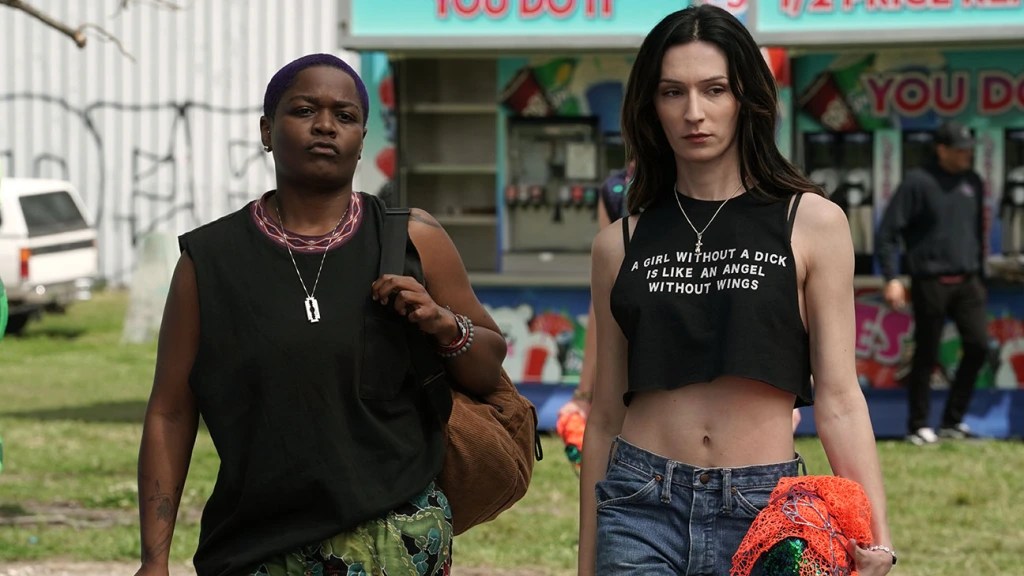
Unlike the deeply white, cis and able-bodied original characters, all of the new QAF’s mains are people of color or trans or disabled or all of the above, including Char, a non-binary Black masculine-presenting person and their partner, Ruthie, a trans woman who’d grown up with the series’ star, gay party boy Brodie. Queer as Folk gave us groundbreaking and incredibly hot sex, a Craft-inspired drag show, a sex party catered towards people with disabilities and a joyful portrait of chosen family coming together in the face of shared trauma. Stream Queer As Folk.
Bel-Air
Peacock Drama, 2020—
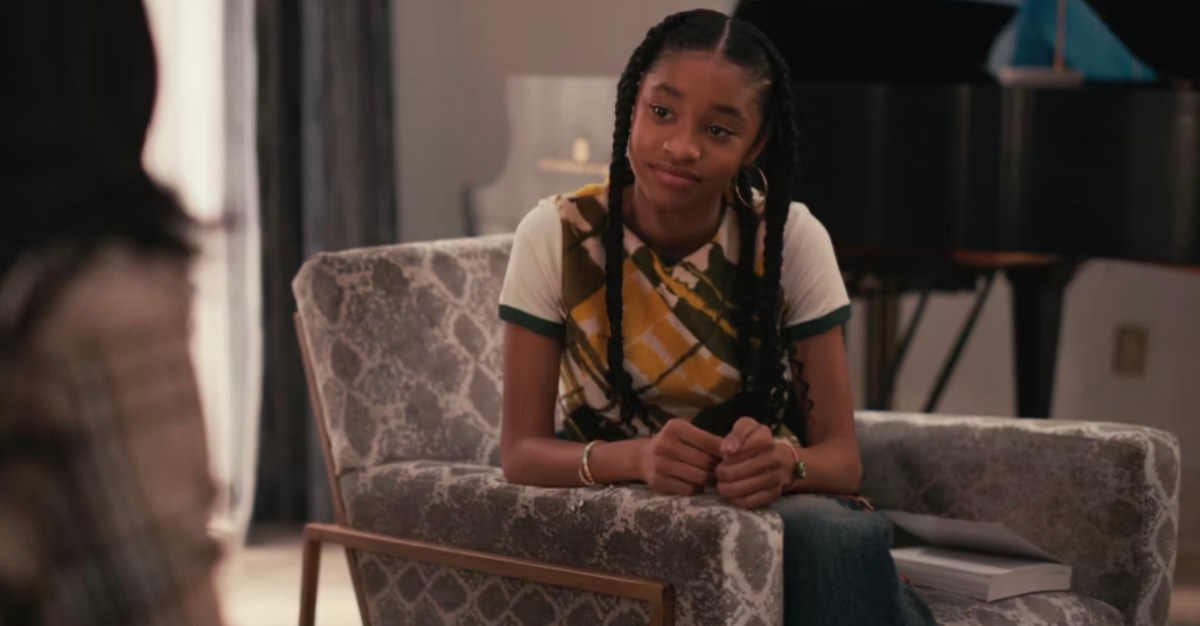
This re-imagining of The Fresh Prince of Bel-Air as a drama was Peacock’s biggest initial investment, and it’s delivered some mixed results while also leaning hard on the charisma of its lead. But we love it! The new Ashley Banks, a pre-teen when the show begins, has a gradual discovery of her queerness that begins in Season One, and it’s really cute! Stream Bel-Air.
We Are Lady Parts
Peacock Comedy, 2020-
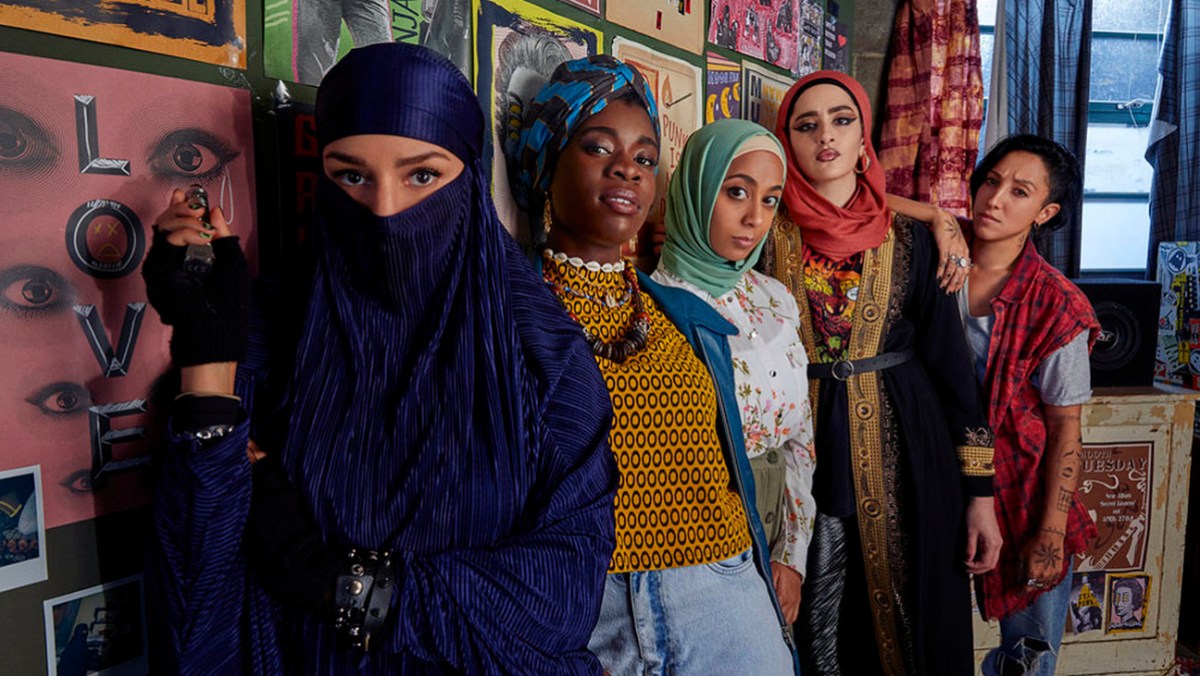
(Photo by: Laura Radford/Peacock)
“The storylines of We Are Lady Parts echo stories that we’ve told about ourselves. They fill an often undervalued aspect of representation: offering a reminder that inside each of us, is all of us.” writes Natalie of this critically acclaimed series that finds geeky biochemical engineering Ph.D. student Amina Hussein as the unlikely lead guitarist of Lady Parts, an all-female Muslim punk band. Ayesha is a queer Muslim woman and the band’s drummer. One could argue that We Are Lady Parts is the best bit of Peacock original programming with a queer woman character. Stream We Are Lady Parts.
Her Story
Independent Drama, 2016
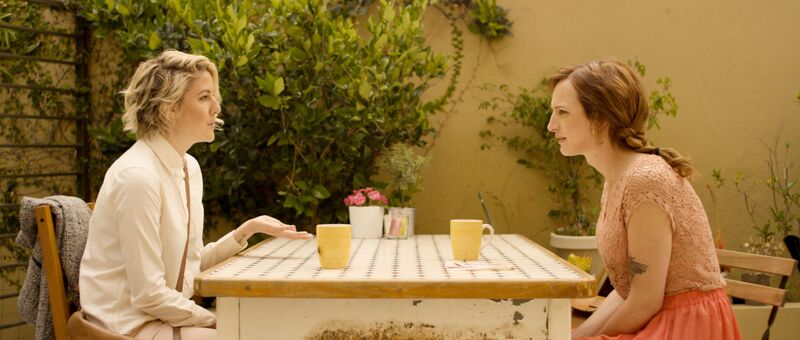
Laura Zak’s Allie and Jen Richards’ Violet.
When Her Story debuted in 2016 there was nothing else like it. Starring Jen Richards, Angelica Ross and Laura Zak, this understated webseries follows two trans women dating in Los Angeles, confronting transphobia and a trans misogynistic lesbian culture. “This isn’t just a new frontier, this is a bright and wonderful one. This is the kind of trans TV show that we’ve been waiting for,” wrote Mey. Stream Her Story.
The Real Housewives of New York: Season 14-15
Bravo Reality TV, 2023-
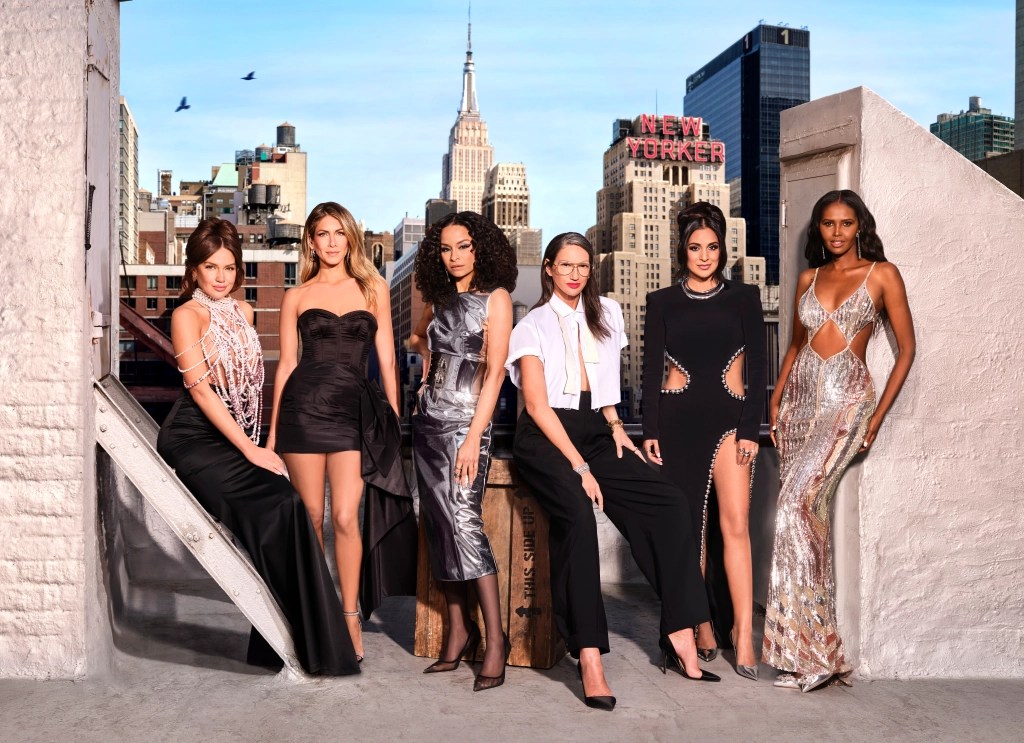
Fashion genius Jenna Lyons joins the series for this reboot of the New York franchise, wherein we have the opportunity to relate deeply to the experience of being the only lesbian in a group of straight women who are always yelling at each other about cheese and cell phones and airplane flights. In Season 15, model/ gallerist Racquel Chevremont and her hot girlfriend join the cast and it all gets even gayer.
Saved By The Bell
Peacock Comedy, 2020-2022

This underrated gem of a reboot featuring a new, diverse Bayside where the original students are grown up administrators and parents features Alycia Pascual-Peña as Aisha, football team quarterback and budding wrestling champion who comes into her bisexuality. Trans actress Josie Totah plays trans character Lexie, the queen bee of Bayside. Carmen wrote that the reboot “ultimately drives home the importance of trans and queer communities, and our joy, especially for teens.” Stream Saved by the Bell.
The Traitors
Peacock Reality TV Show Competition, 2023-

Queer icon Alan Cumming hosts this unscripted competition series described as “a nail-biting psychological adventure in which treachery and deceit are the name of the game” in which 20 contestants compete in a series of challenges to earn a cash prize — but three contestants coined “the traitors” are devising a plan to steal the prize. Amongst these contestants in Season One was Andie Thurmond, a non-binary Director of Music Services from Reno, Nevada! Season Two brought us Peppermint and Survivor-famous Parvati Shallow, and Season Three’s ICONIC AS FUCK season has delivered Bob the Drag Queen, Bachelorette‘s Gabby Windey (in a true star turn), Survivor’s Carolyn Wiger and Selling Sunset‘s Crishell Stause.
The Top Chef Cinematic Universe
Bravo Reality Competition Show, 2006-

Kristin Kish. Josie Smith-Malave. Melissa King. Joy Crump. Ashley Merriman. Jamie Lauren. Top Chef’s 21st season, which aired this year, invited every possible lesbian world to collide in a Kristen Kish hosted season with lesbian chef Rasika Venkatesa gushing to guest judge Clea Duvall about But I’m a Cheerleader. Listen: Top Chef is Still the Most Lesbian Reality Show on TV. Shit gets really gay on this show you guys.
Leopard Skin
Peacock Limited Series Drama, 2022
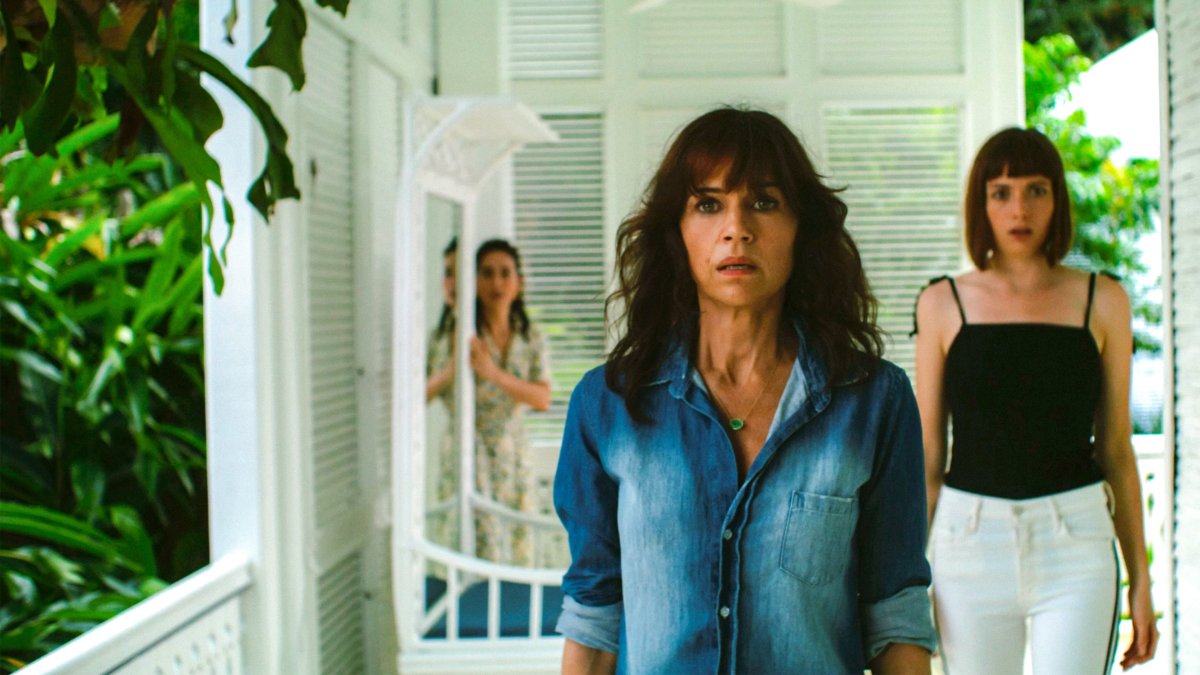
A botched heist is the entry point to a messy, lurid, bizarre and atmospheric journey that never quite manages to make sense, but does include some compelling sexual antics and Carla Gugino as a Mean Queer Psychic Domme. It’s hard to say no to that. I couldn’t tear myself away to be honest. Stream Leopard Skin.
Girls 5Eva
Peacock Comedy, 2021-2022
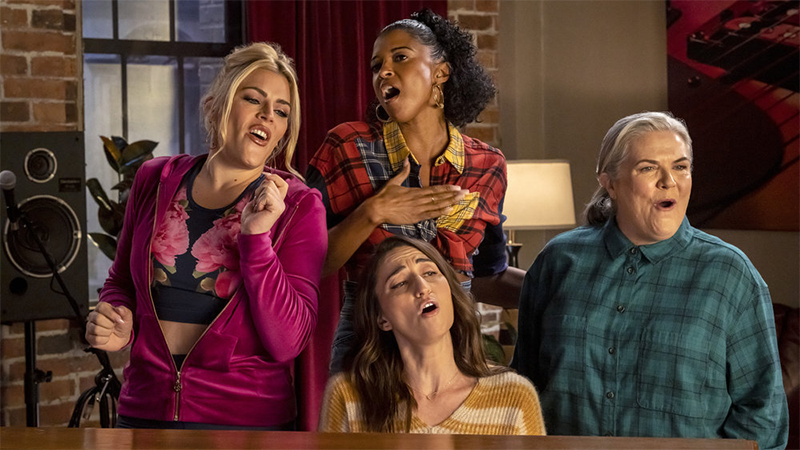
A one-hit-wonder girl group from the 1990s reunites to give their pop star dreams another shot, but this time they’ve gotta balance spouses, kids, jobs, debt, aging parents, and shoulder pain too. Lesbian comic Paula Pell is a freshly divorced lesbian dentist in this delightful comedy that also stars Sara Bareilles, Busy Philipps and Renée Elise Goldsberry. But if you wanna watch Season Three, you’ll have to switch to Netflix! Stream Girls 5Eva on Peacock.
One of Us is Lying
Peacock Thriller, 2020-2022
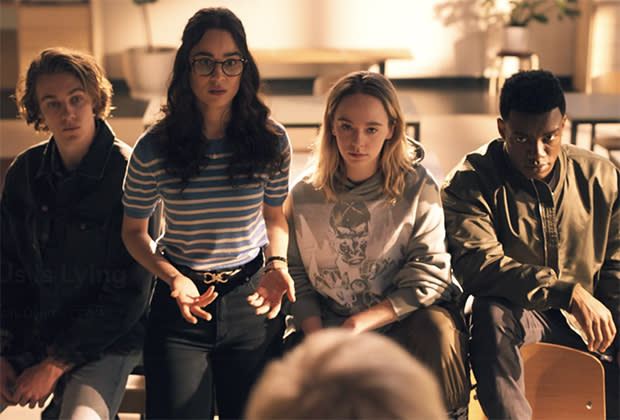
Based on a buzzy YA thriller, a disparate group of students find themselves under suspicion after online gossip scourge Simon suddenly dies while they’re all in detention. Simon’s best friend, Janae Matthews, is the unlikely outsider who finds her way into this clique, and who comes into her own as queer and non-binary. Stream One of Us Is Lying on Peacock.
New Amsterdam
NBC Drama, 2018-2023
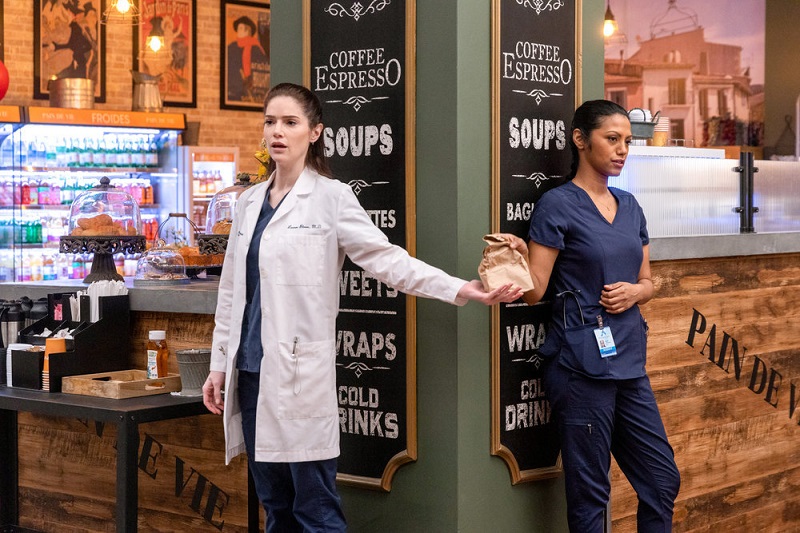
As medical dramas go, New Amsterdam doesn’t necessarily have anything extraordinarily new to offer, but it’s got heart and some endearing characters and some progressive ideals about the value of public hospitals and innovative ways to make medical care accessible. Also: Lauren Bloom as a messy genius bisexual head of the Emergency Medicine ward. Stream New Amsterdam on Peacock.
The Undeclared War
Peacock / Channel 4 Cyber-Thriller, 2022
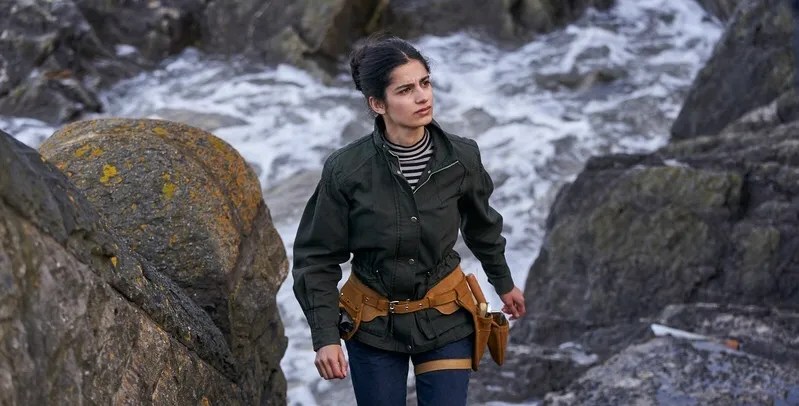
It’s 2024 and Saara Parvan is a student getting work experience in the malware department of GCHQ in the run-up to the British general election when a security breach on her first day thrusts her into the middle of a data war with Russia with worldwide implications. She has a romance with an American from the NSA brought in to consult with the case, Kathy Freeman (queer actor Maisie Richardson-Sellers), which is a highlight of this surprisingly compelling thriller. Watch The Undeclared War on Peacock.
Vigil
Peacock/BBC One Thriller, 2021-2024
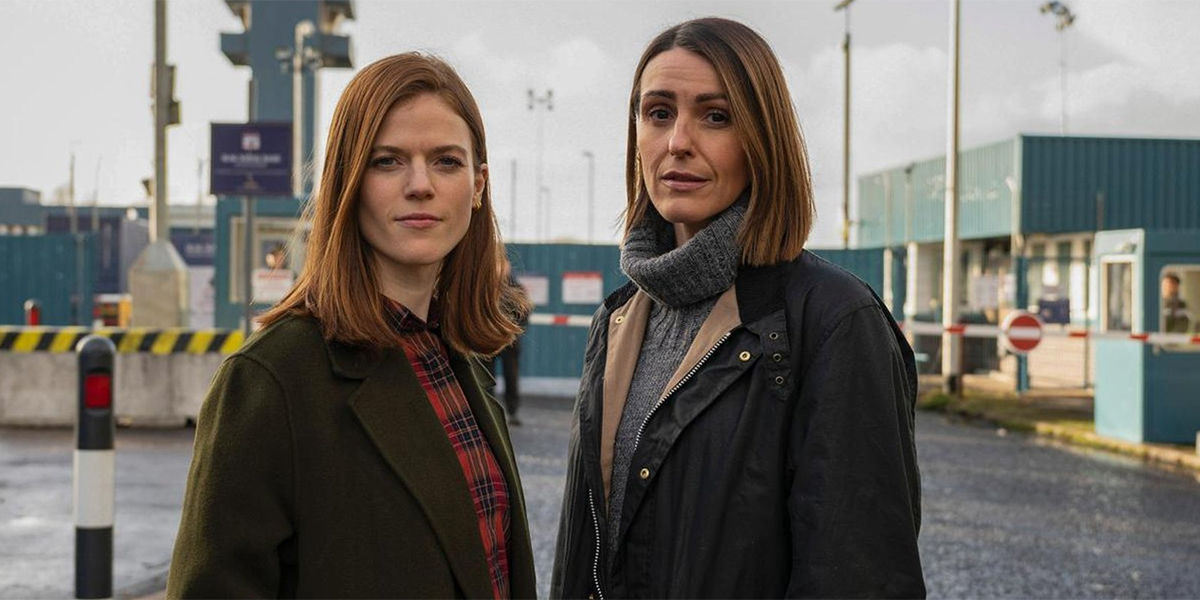
A crew member is found dead on the nuclear submarine HMS Vigil and the Scottish police send Detective Amy Silva (Surrane Jones) onto the ship to blend in with the crew on board and investigate, while her girlfriend Kristen Longacre (Rose Leslie) pursues leads on land. You want to see these two women kiss, right? Of course you do! Season Two takes place in a fictional Middle Eastern country following the killing of several soldiers by an errant drone, and also manages to somehow separate Amy and a very pregnant Kristen. Stream Vigil on Peacock.
Brooklyn 99
Fox/NBC Comedy, 2013 – 2021
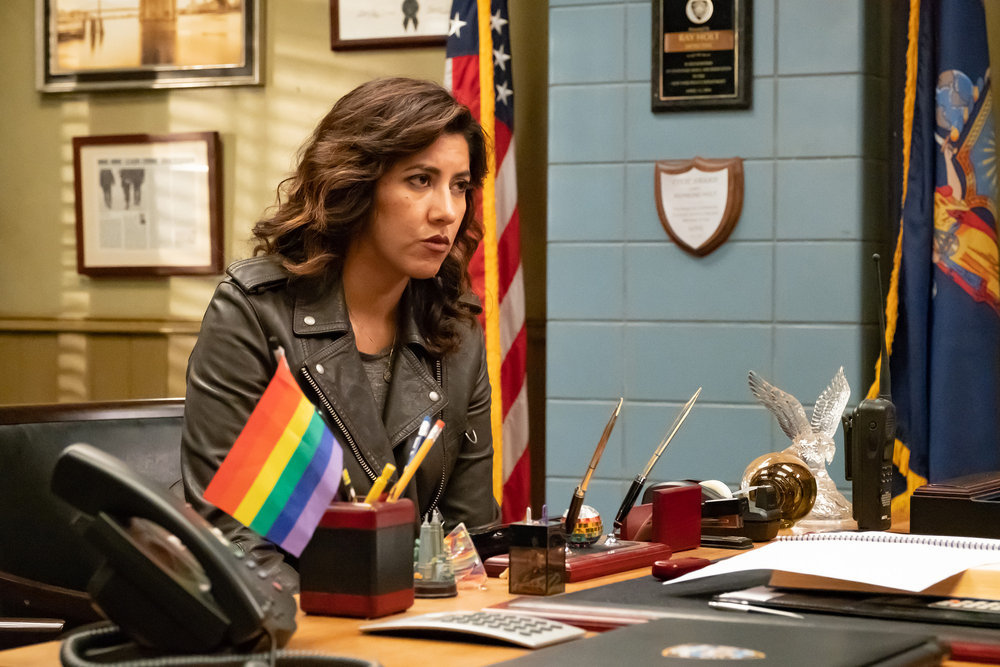
(Photo by: Vivian Zink/NBC)
A comedy packed with talent, set in a New York City police department, following the exploits of Det. Jake Peralta and “his diverse and lovable colleagues.” Most relevant to us here, of course, is Stephanie Beatriz as Rosa Diaz, who comes out as bisexual in Season Five. Watch Brooklyn 99 on Peacock
Poker Face
Peacock Mystery, 2023-

Poker Face, a “delightfully absurdist Murder Show with the best guest stars,” is not the queerest show on Peacock, although its protagonist Charlie (Natasha Lyonne) isn’t that passionate about being straight, either. It follows the inverted detective story format popularized by Columbo, but Charlie’s not a cop, she’s just a person with a supernatural ability to detect liars. Each week is a new case with a new cast, and the guest stars are just delightful (Cynthia Erivo, Alia Shawkat, Taylor Schilling, Gaby Hoffman, Cherry Jones, Chloe Sevigny, Stephanie Hsu, Clea Duvall, etc). The episode with the most explicitly queer women was a frustrating one in Season One, but Season Two delivered a lot of queerness throughout and its best episode was gay as fuck. Stream Poker Face.
The Girl in the Woods
Peacock Thriller, 2021
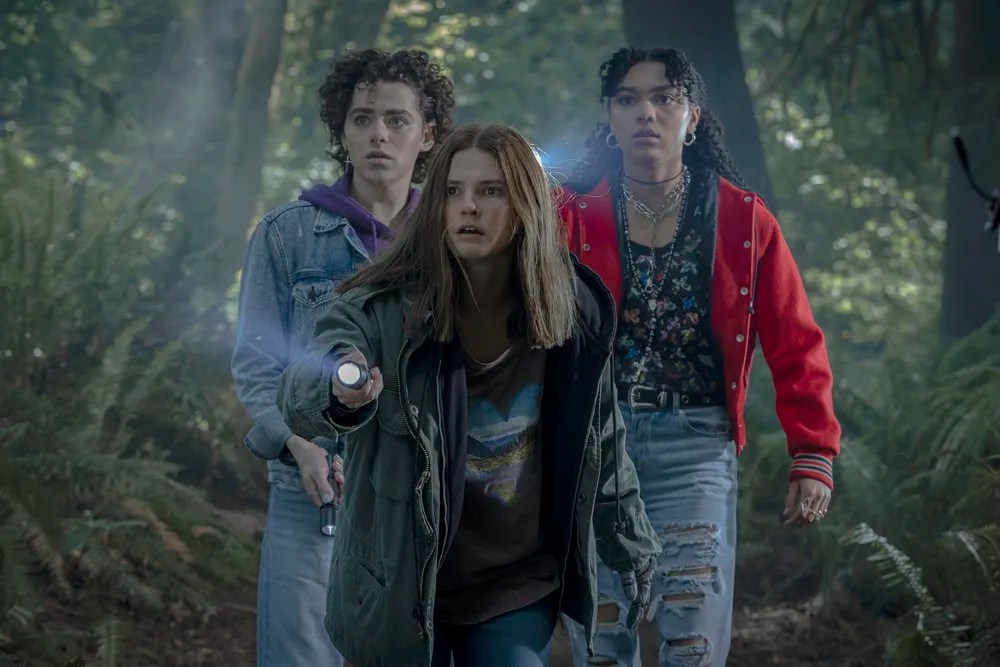
The Girl in the Woods mashes together dystopian YA and supernatural-horror tropes in a story about a small town disrupted by monsters and the powerful teen girl who teams up with a couple weirdos to stop them. There’s also a queer love triangle, a queer and messy backstory between our titular girl in the woods and her ex, and grief and trauma and friendship and love, infusing a familiar supernatural story with some freshness. Read more in Kayla Kumari’s The Girl In The Woods” Delivers a Complex, Queer Horror Hero and stream The Girl in The Woods.
Rutherford Falls
Peacock Comedy, 2021 – 2022
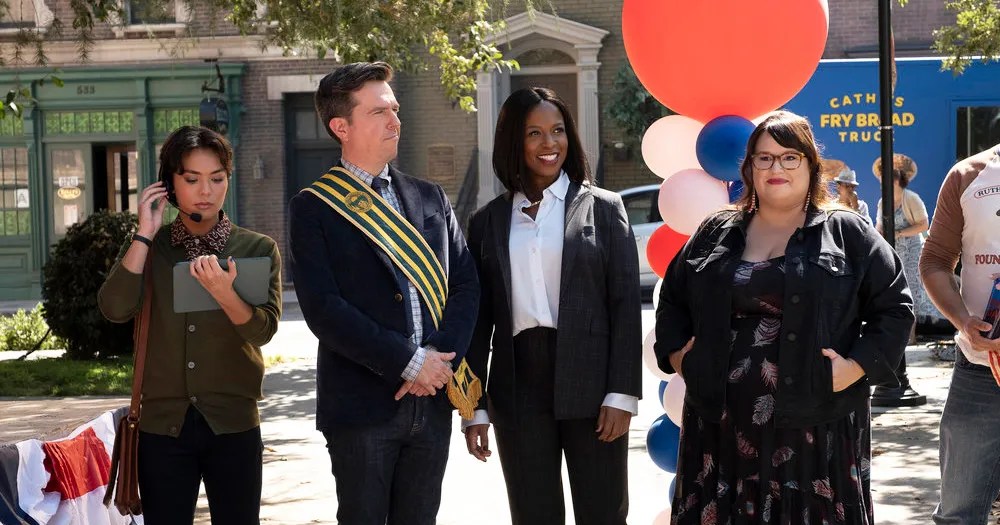
Two lifelong friends, Nathan Rutherford (Ed Helms) and Reagan Wells (Jana Schmieding) find their friendship tested when a conflict begins in their small town over its colonial legacy and the indigenous community native to the area. Non-binary actor Jesse Leigh is non-binary character Bobbie Yang, a high school student and Nathan’s personal assistant. Vulture wrote that the show “skillfully braids discussions of serious sociocultural issues with character-based comedy in ways that seem neither forced nor overly didactic.” Stream Rutherford Falls on Peacock
Intergalactic
Peacock Sci-Fi, 2021
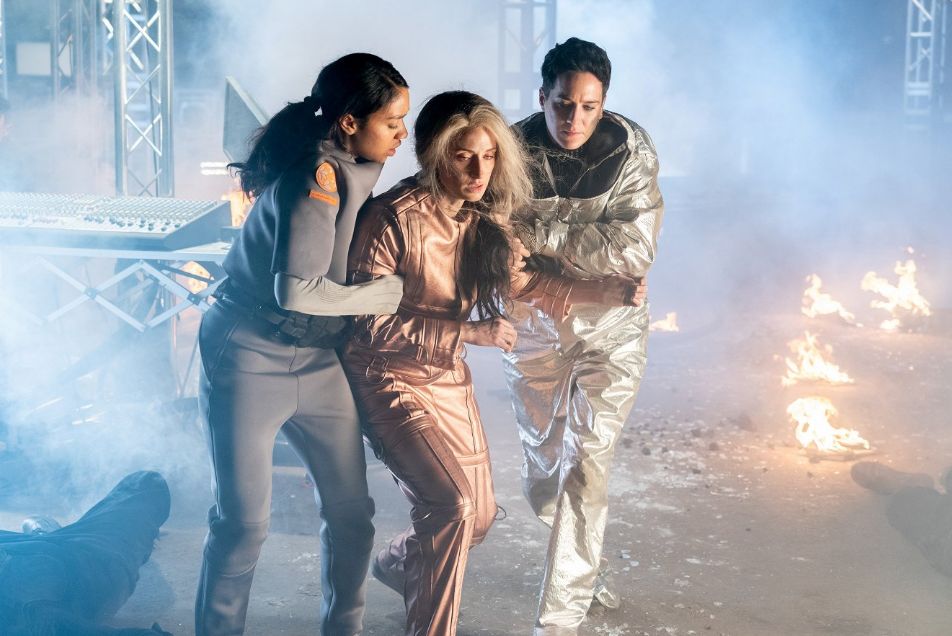
It’s 2143. Climate change has destroyed most of the planet and most humans are now living in structured cities controlled by a pseudo-democratic government called the “Commonworld.” Harper (Savannah Steyn) is a “sky cop” who ends up onboard a prison ship during a mutiny when she’s framed for a crime she didn’t commit, and well, things get very wild from there. There’s a bit of a slow-burn queer romance involving a butch lesbian lead character, Verona (Imogen Daines) that has its ups and downs! Stream Intergalactic.
Chucky
SyFy Horror, 2021 –
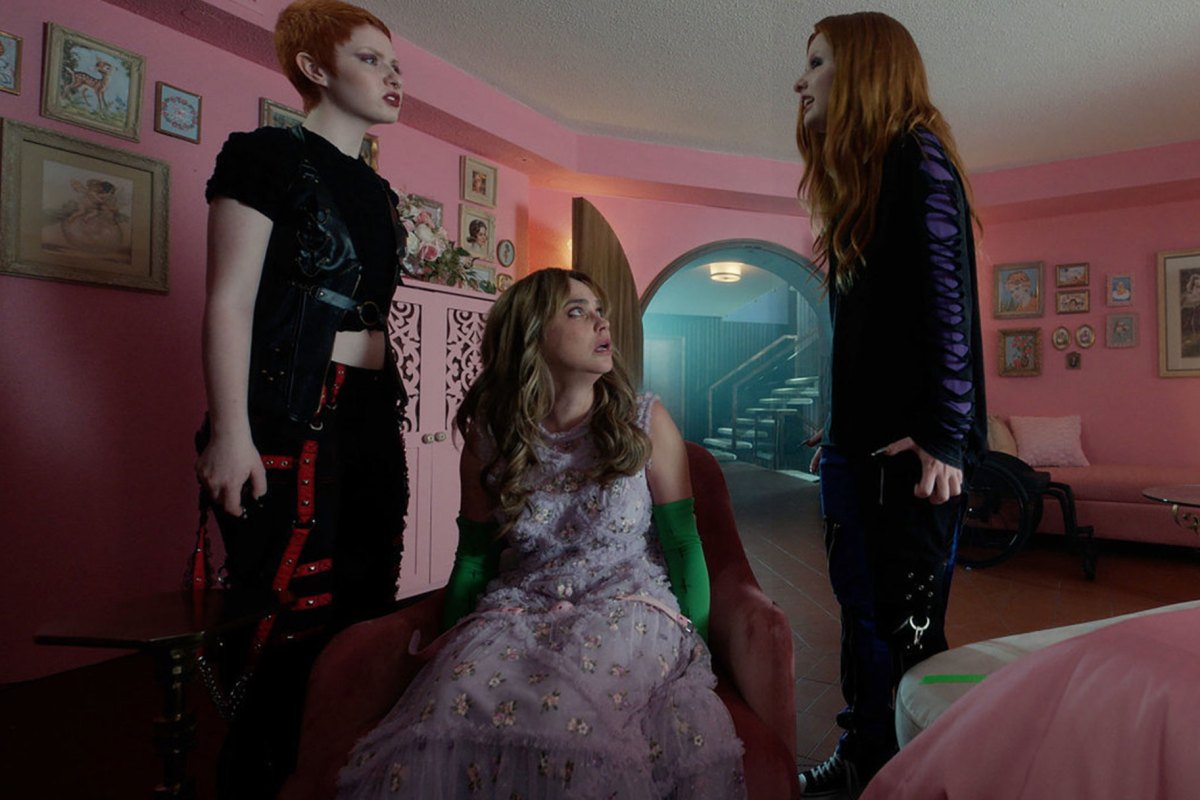
A 14-year-old gay teenager purchases an iconic Chucky doll at a garage sale only to find the doll is possessed by the soul of a serial killer who is ready to start murdering people in Hackensack, New Jersey. There’s lots of queer stuff in here — Tiffany Valentine (Jennifer Tilly) is pansexual and we also get Chucky’s nonbinary child Glen/Glenda, played by nonbinary actor Lachlan Watson. Stream Chucky on Peacock.
Punky Brewster
Peacock Comedy, 2020
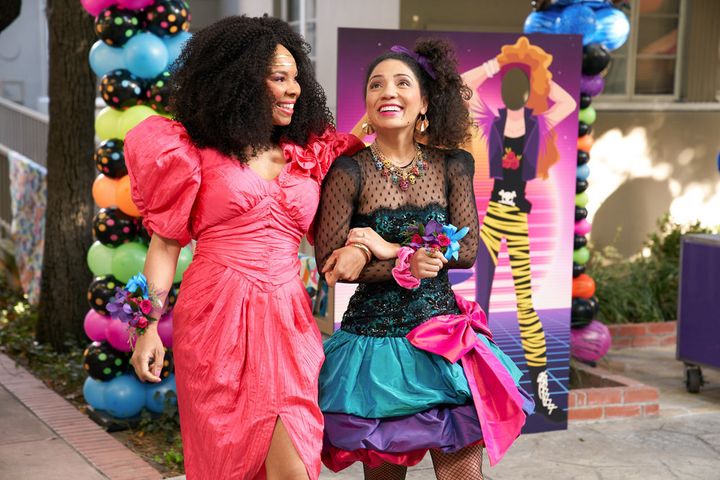
In this reboot, Punky’s a freshly divorced photographer with three kids. Her best friend, Cherie, is a social worker who convinces Punky to foster a kid and now they’ve got four kids and an ex-husband and a dog and most importantly, Cherie is queer now, and her girlfriend is played by our very own deeply deeply beloved queer actress Jasika Nicole. Stream Punky Brewster
Banana
E4 Drama, 2015

Banana is Russel T. Davies’ sister series to Cucumber, which focused on gay male stories. Banana’s focus is on a broader spectrum of LGBTQ+ identities and youth specifically, some from the periphery of Cucumber and some new folks, too. Leticia Wright plays a young lesbian who falls in love with a straight, white woman who works at her local grocery store. Deeply beloved queer actor T’Nia Miller is Kay and iconic comic/writer/actor Charlie Covell (who also wrote and directed a lot of Banana) is her partner Amy. In episode 4, Trans actor Bethany Black is Helen, besieged by unwanted attention from an ex. Stream Banana on Peacock.
The Best Man: The Final Chapters
Peacock Drama, 2022
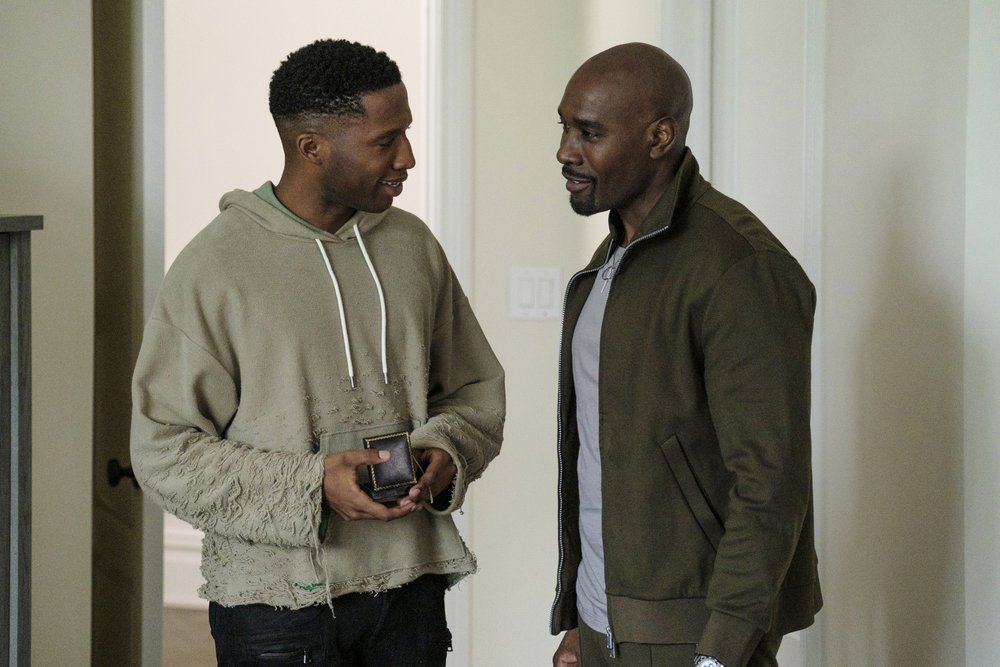
Photo by: Matt Infante/Peacock)
The Best Man: The Final Chapters is an eight-episode conclusion to the beloved Black rom-com film series The Best Man, now expanding into its third decade. In The Final Chapters we get to know LJ (Eric Scott Ways), the eldest child of football superstar Lance Sullivan (Morris Chestnut), now in his late teens. Lance always hoped that LJ would follow in his cleats, but the smart, fashion obsessed teen has other plans. They come out as nonbinary and watching the adults of The Best Man crew adjust is a little paint-by-numbers, but it’s also so rare to see a Black family embrace their trans kid on television, which ultimately makes it sweet and worthwhile. — Carmen, Stream The Best Man: The Final Chapters
Those About To Die
Peacock Historical Drama, 2024-
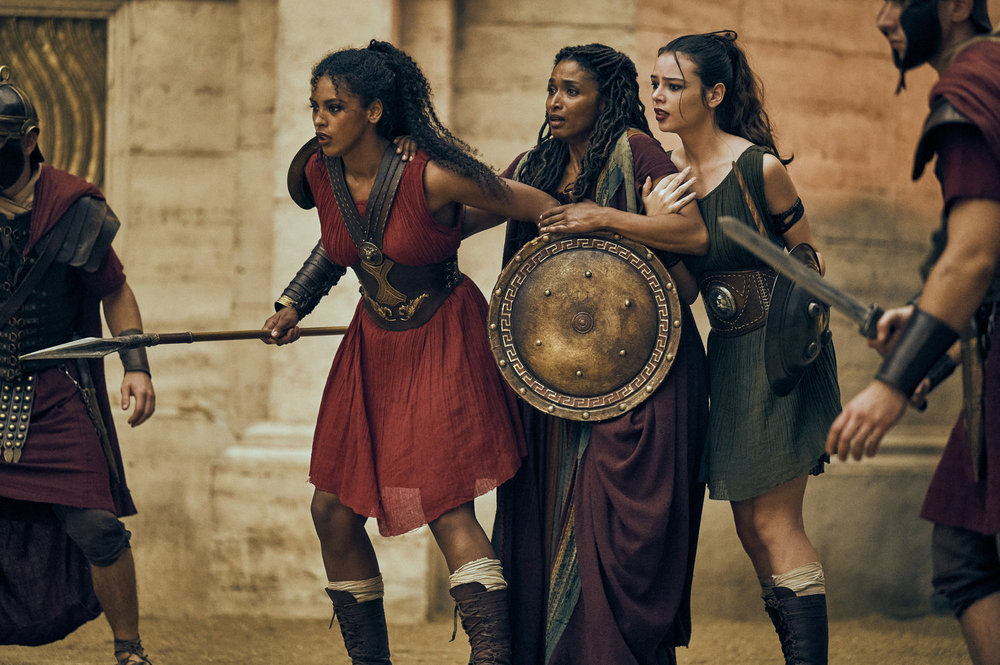
Photo by: Reiner Bajo/Peacock
Set in and around the Colosseum of late Imperial Rome, I found this program nearly impossible to follow, but easy enough to fast-forward through to find some kind of lesbian subplot involving a main character and full frontal nudity that I suspect might have some redeeming moments if I was better at understanding the rest of it. It’s a spectacle; there are lavish period costumes, a stadium packed with CGI people witnessing great beasts of men battling each other for sport (some are about to die, obviously, thus the title), and then there are women who are in these dark rooms and there are markets and maybe brothels? People are trying to negotiate things and also banging. Including women banging each other! The Spectator said of it, “It hurries breathlessly from incident to incident as if terrified that the viewer might find the most blood-spattered, sexually licentious, intrigue-ridden period in the history of the world ever so slightly dull.” But it’s a hit, so! Stream Those About to Die.
Apples Never Fall
Peacock Thriller, 2024
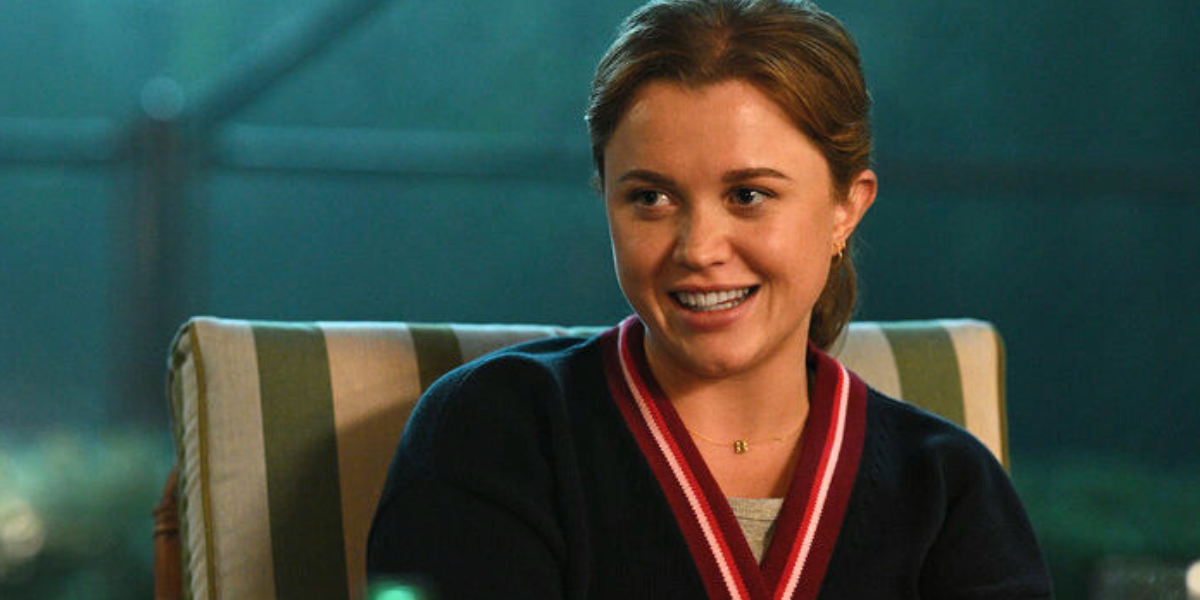
While it suffers from… pretty bad writing, Apples Never Fall is a Liane Moriarty thriller that might entertain those of us who are pretty easy to please when it comes to that kind of thing. (Me) It tells the story of wealthy West Palm Beach family the Delaneys, headed up by tennis coaches Stan (Sam Neill) and Joy (Annette Benning). Joy and Stan sell their tennis academy and are looking down the gaping maw of retirement when Joy suddenly vanishes, thus leading her four adult children (played by Alison Brie, Jake Lacy, Conor Merrigan-Turner, Essie Randles) to investigate their parents’ allegedly perfect marriage and uncover their family’s darkest secrets. Brooke (Essie Randles) is a queer physical therapist engaged to Gina (Paula Andrea Placido). Stream Apples Never Fall on Peacock.
Couple to Throuple
Peacock Reality TV Show Dating, 2024-
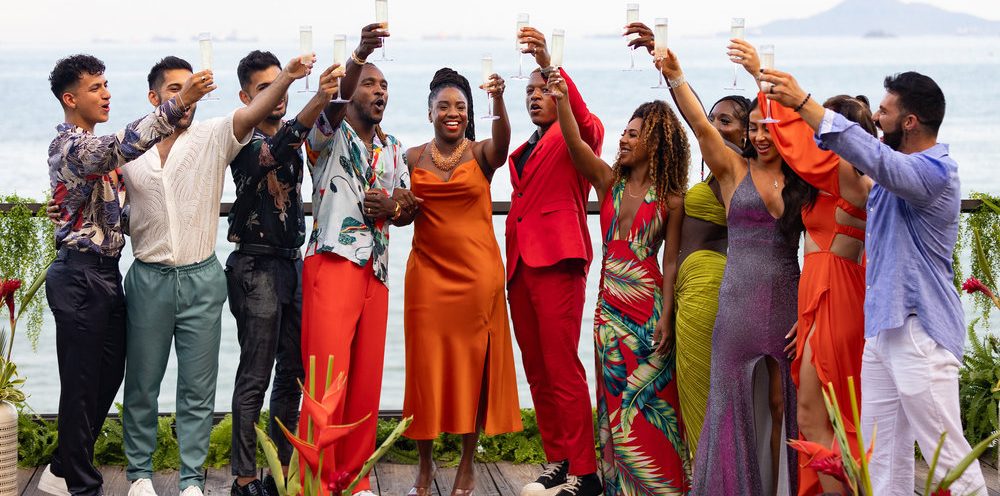
(Photo by: Paul Castillero/PEACOCK)
Four couples explore non-monogamy by spending a month in a tropical resort, meeting and dating potential thirds to bring into their relationship, and then at the end they can decide if they wanna be threes forever or remain a twosome. It wasn’t always the best show when it came to representation, but it had its moments and we’d be remiss to talk about Peacock’s original queer programming without talking about Couple to Throuple. Stream Couple to Throuple on Peacock.
Twisted Metal
Peacock Sci-Fi, 2023 –
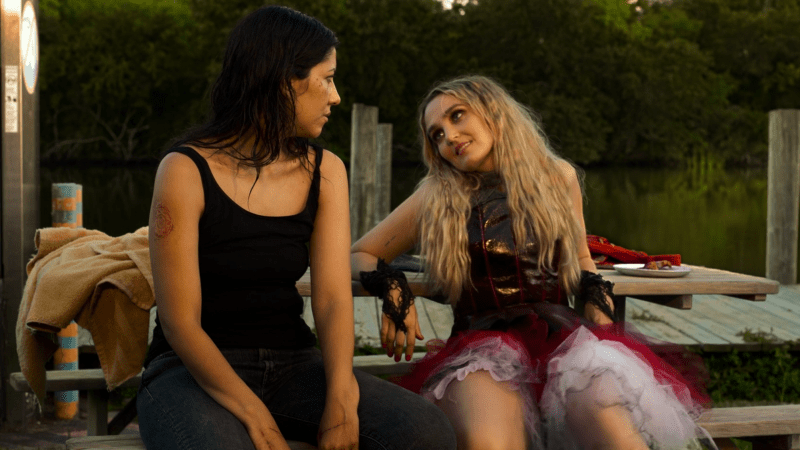
In the game Bloody Mary wears a bloody wedding dress, so I like how this tutu outfit pays homage to that.
Based on a video game, bisexual icon Stefanie Beatriz stars as Quiet, a subtly bisexual character in a dystopian landscape where twenty years after electricity went out worldwide, society has been divided into Insiders and Outsiders, serviced by “Milkmen” delivering things from city to city. John Doe (Anthony Mackie) is one of them, and he becomes reluctant partners with Quiet. Although her bisexuality is never super-obvious, there are some minor queer characters and we’re hopeful for more about Quiet’s sexuality in Season Two. Stream Twisted Metal on Peacock.
Other TV shows on Peacock with regular/recurring LGBTQ+ women and trans characters:
- Ted (2024, Peacock comedy)
- Departure (2020-2023, Global/Peacock thriller)
- Bust Down (2022, Peacock comedy)
- Go On (2012, NBC Comedy)
- House (2004-2012, Fox Medical Drama)
- The Irrational (2023 -, NBC Thriller)
- Chicago Fire (2012-, NBC Drama)
- Being Human (2011-2014, SyFy/Space Sci-Fi)
- La Brea (2021-, NBC Sci-fF)
- Law & Order: SVU (1999-, NBC Drama)
- The Purge (2018-2019, USA Horror)
- Roseanne (1988 – 1997, ABC Comedy)
- The Vampire Diaries (2009 – 2017, CW Fantasy)
- The Way Home (2023-, Hallmark Drama)
Because NBC Universal also owns Bravo, there’s a ton of queer-inclusive reality TV show across the service, including The Bad Girls Club, Project Runway, Summer House, Below Deck and its many spinoffs, and the Real Housewives franchise. There are also a few unscripted shows with lesbian hosts (although not all were out to the world or themselves at the time of filming) — If We’re Being Honest With Laverne Cox, Tabatha’s Salon Takeover, The Amber Ruffin Show, OMG Fashun With Julia Fox, Siwas Dance Pop Revolution and Unidentified with Demi Lovato.
8 Comments
-
We Are Lady Parts is so good! Everybody watch it right now! Then watch Polite Society (movie by the same director, also on Peacock- not gay but excellent, kickass, and fun.)
-
Undeclared war was so good, although some people i’ve talked to didn’t like that you don’t find out what happened to one particular character but personally i think that was kind of the point since they were dealing with shadowy goverment organizations.
I liked girl in the woods though i think they were setting up for a season two they never got.
I couldn’t get into the queer as folk reboot. I really wanted to but i really REALLY took issue with how the new parents just…never had to deal with their babies. Like ever. A newborn is all consuming and they had TWO and they still had time for drama.
-
so great TV!
-
-
Vampire Academy and Emerald City should have been on the list.
Unfortunately, both series were canceled even though they had good quality.
The two series that I was very sad about the cancellation of Peacock were One of Us is Lying and Vampire Academy.
I hope Vigil, Those About To Die and We Are Lady Parts will not suffer the fate of those two series.
Also, I wish that from now on, you would also write the status of the series (cancelled, renewed, finished or unknown) because it is very important to know.
For example, although Teenage Bounty Hunters is a very good series, unfortunately, because it was canceled, the story remained incomplete and ended in the worst possible way. That’s why I usually don’t recommend anyone to watch it. I think watching canceled series is a risk -
I don’t know anyone else watching Twisted Metal but it’s a fun stupid delight. Even if you don’t watch the whole thing, look up the final episode of the first season. First few minutes is an awesome action scene set to “The Distance” by Cake.
-
Undeclared War and Ladyparts are so good! Highly recommend!
I’ll second what a previous commentor said in that girl in the woods was okay but obviously setting up for a season two they never got.
And this will probably not be a popular opinion but i did not like the queer as folk reboot at all. The thing that finally made me quit it was that two characters have twin newborns and then…never have to take care of twin newborns. As a parent the lack of effort put into the TWO newborns to take care of storyline was at first annoying and then later just rage inducing.
Hayley Kiyoko and Becca Tilley Got Engaged in a Body of Water
Lesbian Jesus Hayley Kiyoko — noted pop star and celebrated author — announced on social media today that she proposed to her girlfriend of seven years, former Bachelor contestant Becca Tilley.
“My dream girl said yes to forever,” wrote Hayley in her instagram caption. Photographs capture the duo on a rock in front of a really gorgeous body of water
Becca and Hayley have taken their relationship relatively slow, by lesbian standards. They met for the first time at Hayley’s “Expectations” release party in April 2018, and afterwards Becca tried to set Hayley up with her queer younger sister by arranging a group drinks hang. But the sister bailed, Becca showed up, and the rest is lesbian history.
In 2019, Kiyoko told US Weekly that she was in a relationship and very happy, but they didn’t officially announce the relationship until May of 2022. That announcement served as Tilley’s official “coming out,” after many had assumed her heterosexuality due to her participation in The Bachelor.
Kiyoko, whose been acting, dancing and recording music since she was a kid, skyrocketed to sapphic fame in 2018, becoming the first lesbian pop star signed to a major label to make multiple music videos in which she kisses girls. Her hit “Girls Like Girls” inspired a recent YA novel by the same name, and last year Kiyoko announced that Focus Features had signed on to turn it into a film. “Since I released girls like girls in 2015,” Kiyoko wrote, “I’ve made a vow to myself and to you all to do everything in my power to create hopeful queer content at the largest scale possible.”
Tilley is currently the co-host of “Scrubbing In,” a podcast in which she and her BFF Tanya Rad “fangirl over their favorite shows, work through boy troubles, and hang out with the biggest celebrity guests.”
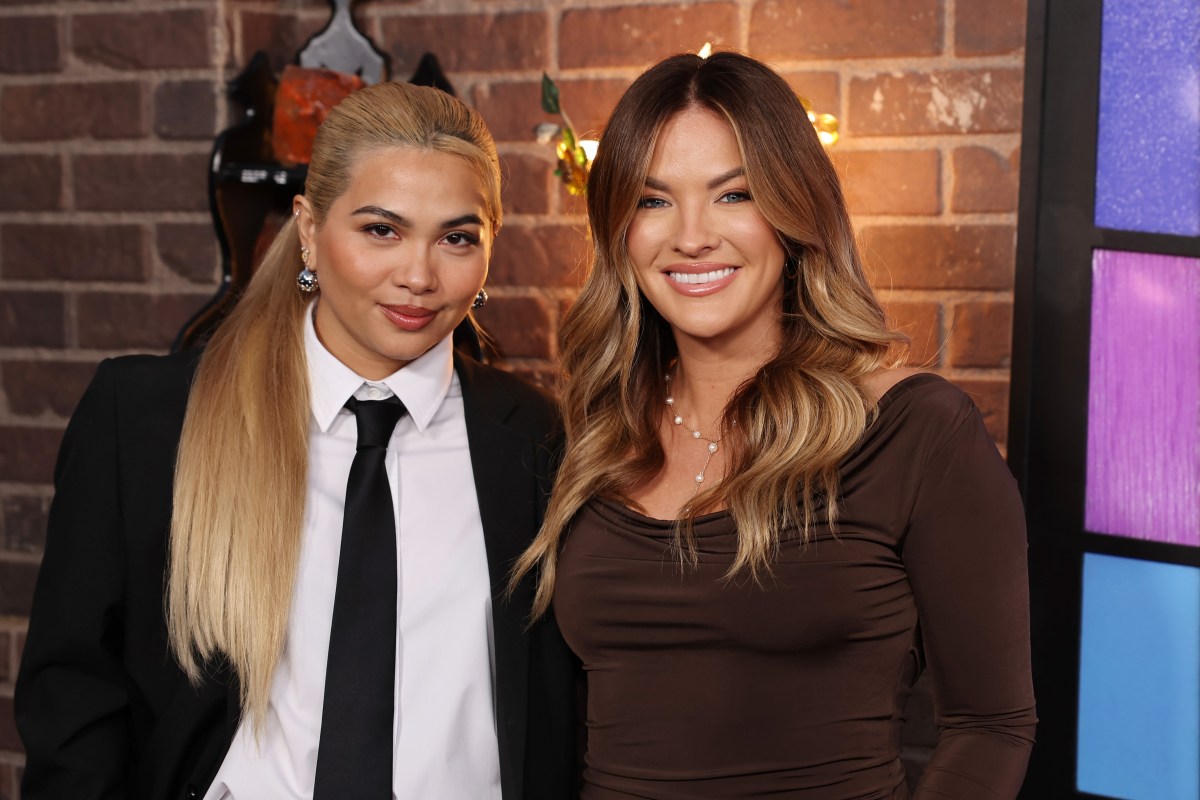
LOS ANGELES, CALIFORNIA – OCTOBER 28: (L-R) Hayley Kiyoko and Becca Tilley attend the World Premiere of Disney’s “Wizards Beyond Waverly Place” at El Capitan Theatre on October 28, 2024 (Photo by Amy Sussman/WireImage)
As a person who watches celebsian social media accounts like a hawk to report on any developments for my job at this website, I must note that Becca Tilley has attended a truly astounding number of weddings over the past two years and every single time I thought it was her wedding to Hayley Kiyoko. I am pleased that we are now ever-closer to the day when a picture of Becca Tilley (who has bridal hair every day, to be fair) in wedding attire will actually be her wedding to Hayley Kiyoko.
It’s important in this day and age for as many former Bachelor contestants as possible to come out as queer and, ideally, marry lesbians. Gabby Windey tied the knot with Robby Hoffman earlier this year, and now Becca Tilley will be doing so with Hayley Kiyoko. Watch out world!
2 Comments
-
Congratulations to them. Hayley has definitely had an exciting few months with the news of her engagement, a new book coming out soon, and the news of her Girls Like Girls song to novel to movie is on its way! Lesbian Jesus indeed
The Top 10 Lesbian Movie Night Club Scenes
Pride Month may be over, but dancing at the gay club is a year-round activity. Nothing compares to that energy on a dance floor surrounded by other queer people with music flowing through you. And sometimes lesbian and queer movies succeed at capturing that feeling!
Personally, I think we need way more gay club scenes in sapphic cinema. I love a quiet talking moment at a gay bar as much as the next person but it’s not the same. That’s why I’ve gathered this list of my ten favorite night club scenes — many at queer clubs, some at straight clubs where queer people make them gay. So inhale those poppers, grind on your crush, and dive in!
Bonus: The entire movie Shakedown

This is a documentary about a club rather than one scene from a narrative film, but how could we talk about night club scenes without at least mentioning Shakedown?? If you haven’t seen this film chronicling the Black lesbian strip club Shakedown from 2002 to when it was shut down in 2004, you should change that immediately.
10. “Fantasy Crush” from Girltrash: All Night Long

I do not believe in guilty pleasures so I will not apologize for this inclusion. While this musical adaptation of a popular web series was disowned by co-creator Angela Robinson, its most charming moment takes place at a lesbian club. Seasoned lesbian Misty is crushing on the fuckboi of the group while newbie lesbian Colby is crushing on Misty and the two sing a duet about their fantasy crushes. Misty and Colby are played by the leads of South of Nowhere which means nothing to me but possibly meant/means a lot to some of you. I just like musicals!
9. The opening of Holy Camp!
Yes, another musical! Originally based on a play, I love the decision to open the movie adaptation with the two leads escaping their summer camp to attend a concert and dance at a club. It opens up the world for the characters and lets us see the night out that makes the next day’s hangover worth it. A film as sincere as it is blasphemous, this sequence sets a town that brings the energy of a night out to the dance numbers and holy romances of its more modest setting.
8. Bad coping mechanisms in The Wedding Banquet (2025)

Not to generalize about our diverse lesbian community, but there’s a reason the next two entries find a queer woman out with their gay guy bestie. Sometimes your lesbian friends are home in bed or busy with a game night and thank God you have a gay male friend to drink too much and go dancing with you! While Andrew Ahn’s reimagining of The Wedding Banquet has many moments of affection across the queer community, my favorite is Chris and Angela going to club to avoid dealing with their separate partner conflicts.
7. Night club day dream from Nina’s Heavenly Delights

From coping with an old relationship to dreaming about a new one, this scene captures that common lesbian experience of standing at a night club, watching your crush dance, and wishing it was you touching her. Nina’s gone to the gay club with her gay best friend and run into Lisa. Amid the swirls of music, alcohol, and a performance from The Chutney Queens, Nina imagines touching Lisa in a heavenly glow. Like many a disappointing night at the club, it won’t happen quite yet, but the thought sure is pretty.
6. Super spy make out from Atomic Blonde

Like many spy movies, the plot of Atomic Blonde is fairly unimportant. What is important is the fight sequences and this steamy make out. Charlize Theron and Sofia Boutella kiss at the bar of a club and then excuse themselves to somewhere more private. But things are never simple for someone in this profession so pretty soon Theron’s character pulls out a gun. But, hey, let’s be honest: This only makes it hotter.
5. Alyssa explores in Where the Wind Comes From

This was my favorite movie I saw at Sundance this year and I’m so excited for it to get released and more people to watch it! One reason is for the incredible club scene in the middle of the movie. Director Amel Guellaty does such a great job creating the magical vibe of the club and that’s before the sequence and the movie even get gay. I don’t want to say too much about this sequence since the movie isn’t out yet but lets just say it combines strangers bonding in a bathroom, a hot femme helping someone with her makeup, flirting via sharing a cigarette, a dash of magical realism, bold formal choices, and a club make out. A perfect moment in a perfect film!
4. Good girl gone bad in Black Swan

Can a white swan become a black swan? What if she does molly at the club? This sequence that largely takes place in the dark with flashes of dance floor shenanigans is equal parts erotic and frightening. It captures that feeling of being out of control at a club which can to lead to some of the best nights and certainly some of the worst. Lucky for Nina as played by Natalie Portman, she makes it home ready for a lezzy wet dream.
3. The opening of Pariah

An Audre Lorde quote, brief shots of people getting into a club, and then… all you ladies pop your pussy like this, shake your body don’t stop don’t miss. A woman slides down a pole upside down to “My Neck, My Back” and then the camera spins around on baby stud Alike’s overwhelmed face. Throughout the film Alike will face challenges of first love and familial homophobia, but the euphoria of queerness felt in moments like this opening are what makes the film so special. It’s a reminder that someday Alike will grow up, return to a club like this, and find a place of total belonging.
2. Separate parties in Eva + Candela


This is arguably the lesbian breakup movie and this sequence is among its best. With distance building, both literal and emotional, Candela and Eva find themselves having separate nights out. At different times, they both try to call the other with no success, but otherwise they actually find joy elsewhere. It’s a bittersweet moment as they both realize they don’t actually need or maybe even want their partner. At this point, they’re better with new people. They’re better on their own.
1. The kiss from Mars One

Okay, you got me. Every lesbian film list I make is just an excuse to try and get more people to watch my favorite queer movie of the last five years: Mars One. From number four on the lesbian movie make out list to number one on the night club list, I’m once again here to write about this perfectly choreographed club kiss. May this scene inspire you to go to the club this summer and actually make a move. The days of lesbian longing are over. There’s no time! Eye contact is fun, but kissing is better. The clubs are waiting. Dance! Kiss! Live!
A Breastfeeding Journey Of a Thousand Miles Begins With a Single Baby Step
Welcome back to Baby Steps, a column about being gay and having a baby. Last time we talked about how our baby throws up 1000 times a day, which is still true!
Gretchen: Let the record reflect that I’m currently breastfeeding on my left boob.
Riese: How’s that going for you?
Gretchen: Right now, flawlessly.
Riese: That’s great. So on a scale of 1 to 10, how would you rank your breastfeeding journey so far?
Gretchen: First of all, I want to say that everybody has to call it a “journey.”
Riese: Nobody should ask, “How’s breastfeeding going?” They should say, “How’s your breastfeeding journey going?”
Gretchen: Exactly.
Riese: It’s like a gender journey! Well, I mean — in a way, it is a gender journey.
Gretchen: Yeah, it kind of is! Because now I don’t want boobs anymore. I never thought about my boobs before and now I want to get rid of them. But if I could rank it — some days it’s like “Hell, yeah!” when I do it successfully. I feel pretty powerful. But overall, I would say it’s a negative a billion, as an experience. But then sometimes I’m like, “It’s a 10,” because of convenience and because it does feel like I am bonding with him when it’s going well.
Riese: How do you feel when it’s not going well?
Gretchen: I feel like we are enemies at war in a hostile state.
Riese: But his only weapon is like… well, throwing up all over you.
Gretchen: But that happens every day anyway.
Riese: So from the start, one thing that people kept saying to me when I told them about you being pregnant was, “Make sure Gretchen doesn’t feel pressured to breastfeed.” So I told you all the time, Gretchen, don’t feel pressured to breastfeed.
Gretchen: Right. But you know my personality.
Riese: Which is you want to be number one.
Gretchen: Yes, in all things, including breastfeeding.
Riese: You’ve said to me that you feel, even though I’m not giving you any pressure to breastfeed, that you feel pressure from society.
Gretchen: You can’t be online as a Mom and not feel pressure. I thought, as somebody that works in social media, that I would be immune to influence.
Riese: Right. Because you understand it on a macro level.
Gretchen: Yeah. I’m like, I know what’s happening!
Riese: You should be able to intellectualize yourself out of it.
Gretchen: Before I got pregnant, besides an occasional, “Oh, I want to want to buy that clothing item,” I wasn’t influenced because I get it, and I know the traps. But when you have zero sleep and your hormones are off the charts, you’re in the most susceptible state to be influenced, I think.
Riese: That’s true! And no-one is influenced too more aggressively than moms.
Gretchen: A mother who’s up at 3:00 a.m., breastfeeding on the newborn struggle bus. That’s when they get you.
Riese: That’s when they worm their way into your brain and scream: “Breast is best.”
Gretchen: Breast is best!
Riese: And you say, “Well, one thing about me is, I’m going to be the best.”
Gretchen: Exactly. Anyhow, I had a lot of lofty dreams about how breastfeeding was going to go, as many mothers do.
Riese: Well, not your mother.
Gretchen: Yeah, besides my own mother who said, “Yeah, that’s that,” one day into it and put me on formula.
Riese: But look at you now!
Gretchen: To her credit, I’m perfect.
Riese: That’s the thing! It’s like really? What will breastfeeding really do for your kid?
Gretchen: Right. Like I wanted to do it to save money, but also wanted to do it because allegedly, it’s better for the baby. But who knows? Does anyone really know?
Riese: We did watch the Netflix documentary about guys buying breastmilk to help them with bodybuilding. So it’s good for them. Allegedly.
Gretchen: Can I prove that it’s better for the baby?
Riese: Well he is walking, talking and reading already.
Gretchen: Yes, he is headed to the LA Olympics. They’ve already contacted him.
Riese: He’ll be doing shot put.
Gretchen: It’s all been worth it. Just to get him to get that gold medal!
Riese: Just kidding everybody — actually he can’t even roll over yet. [update July 3rd 2025: Jude can roll over!]
Gretchen: I asked so many Moms how long they breastfed and was like, “Okay, I’ve got to beat that.” Anyway, like all things motherhood, I’ve been humbled.
Riese: But also, you are straight-up exclusively breastfeeding. We don’t even do bottles, really. You rarely pump. So I feel like you’re on the high end in terms of percentage of times he’s eating directly from your breast.
Gretchen: Yes. But I think that’s a lot of privilege — I’m not working so I have the opportunity to do this. Then that’s even more pressure, honestly, because I’m like, “What else am I doing?”
Riese: But that’ll change when you go back to work.
Gretchen: Definitely. But I thought that this was the best route. I went in thinking that my friends who breastfeed, tend to do it for about a year. So that’s my goal.
Riese: Still?
Gretchen: Well, ask me again in a month if I’m still breastfeeding.
Riese: You’ve had some struggles though, you would say?
Gretchen: Yeah, I would say.
Riese: Beginning with a bleb. I knew about some breastfeeding problems, like undersupply, and also failure to latch, because that’s what happened on The Office with Pam, her baby wasn’t latching. So right away Jude latched and we were like, “Amazing. Score.”
Gretchen: At the beginning, it felt like Jude rocked at this. I had a great nurse at Cedars who walked me through it, and it was easy. And I thought, in my stupor, “I’m crushing this.”
Riese: He is good at breastfeeding! He’s just not good at swallowing and digesting.
Gretchen: Right. Great eater. Terrible digester.
Riese: Because he throws up about half of what he consumes.
Gretchen: Right. The problems started about a week in. First was blebs. Which, when I’ve talked to other mothers, weirdly, not a lot of people knew about it!
Riese: I guess it’s one of those many things you don’t know about until it happens to you.
Gretchen: They’re blisters on your boob, and it makes it feel like every time your baby is latching that you’re getting a nipple piercing. And because I was exclusively breastfeeding and he ate eight or nine times a day, it was like getting my nipple pierced eight or nine times a day.
Riese: This is where another woman would’ve given up.
Gretchen: And this is where I dug in.
Riese: You said, “Oh, it hurts? Good.”
Gretchen: No pain, no gain.
Riese: Life does hurt.
Gretchen: He was underweight at first also, so we had to get the gains! I was determined.
Riese: If there’s anyone who can grit their teeth through the pain—
Gretchen: It’s going to be me. I’m going to embrace the pain. So, I had those for the first three months, on and off.
Riese: That was rough on the home because you kept soaking them in vinegar, so everything smelled like vinegar.
Gretchen: Yeah I was like, “Am I making salad dressing or am I making a cure?”
Riese: That was when I went to CVS three times in two hours ‘cause you kept changing your mind about the cure. The third time I was like, “I’m going to wear a different hat this time.” They’re probably like, “What is going on with you?”
Gretchen: I think when you have a baby, going to CVS three times within an hour is pretty much par for the course. They’re like, “That’s fine. She must have a baby.”
Riese: They’re like, “Did you already eat the Nerd Clusters you had the first time?” And I’m like, “No, I just think we might need more for later.” So we had ice pads, heating pads, cooling pads. The third trip to CVS was when you said to get you a sewing needle and a Zippo.
Gretchen: Okay. I want to caveat that I’m not a doctor and that everything here is not medical advice.
Riese: Nobody should ever do what you did.
Gretchen: But I did get desperate enough and it was painful enough that I did use a sterilized needle to pierce my own boob, and it went away. I mean, other ones came.
Riese: Sometimes I’m like, “If I was a husband, would I have been like, ‘No, you can’t do that’?”
Gretchen: No. Would you?
Riese: I mean, I know it’s not recommended. But as a person who once penetrated my own sty that was millimeters away from my actual eyeball with a needle at home…
Gretchen: That is so dangerous.
Riese: But, Gretchen!
Gretchen: It worked?
Riese: It worked. So who was I to stand here and judge you for what you were doing? What ground did I have to stand on? What glass house was I in?
Gretchen: I talked to actual doctors. I tried sunflower lectin. The whole time I spent on Reddit looking up people’s solutions for blebs is… I’ll never get those days back. Those were rough days. Then I got a clogged duct that immediately turned into Mastitis.
Riese: Which was very bad it seemed.
Gretchen: I woke up feeling like someone had run me over with a truck and I thought, “I guess this is motherhood.” And probably would’ve died thinking that. When I was researching more about the blebs, Mastitis came up and I was like, “Oh, that’s what I have.” It felt like mono. It felt like exhaustion, flu, all the things.
Riese: You’re taking antibiotics for that.
Gretchen: Luckily, my doctor believes women and just called in the prescription. They also tell you to breastfeed through it. So what I figured out for blebs is that eventually it will resolve itself.
Riese: I hate it when they say that. I’m like, “There’s got to be a cure.”
Gretchen: Same, but there was no speeding it along for me. You just leave it. Mastitis, you can sense it, basically feel like it’s coming — the medical advice is outdated. It’s changed, starting in 2022.
Riese: You know this now because you found it in a medical journal article, printed it out, and read it.
Gretchen: I highlighted sections of it. I took notes.
Riese: At some point, our doctor lanced your bleb, right?
Gretchen: Yeah, but it came back. I dreaded Jude eating on my right boob, and no-one should be sitting there dreading their son eating that many times a day. It was awful, but so was pumping.
Riese: But at this time, you’re free of infections.
Gretchen: Yes, I feel like a new person. The other day I played pickleball with my friends. Life-changing.
Riese: It was really brave of you to fight through all of that pain. You have a very strong constitution.
Gretchen: I think that’s just being a mother now. Is you really just have to just suck it up if you want something for your kid. And I really wanted to breastfeed him. I mean, for reasons other than ego. Because it’s affordable.
Riese: At a time when nothing else is affordable.
Gretchen: Exactly. I wanted to breastfeed because I think it is bonding. When I pump, it’s like I am a robot and I’m plugged into a wall. A friend of mine pumped exclusively, and I was like, “How?” I mean, now they have portable pumps and there’s wearables and all these other contraptions. But when she was breastfeeding, there wasn’t anything portable so she was truly stuck. And it’s like eight times a day. A newborn has to eat every two hours.
Riese: He still eats every two hours.
Gretchen: He does. I don’t know what that’s about.
Riese: It could be because every time he eats, he throws up half of what he just ate.
Gretchen: It very well could be! Every morning we’ll wake up. He smiles, it’s very adorable. He does this little hello smile. And then I breastfeed him for 20 minutes, and then he pukes pretty much all over me. I’m usually drenched, the bed’s drenched. Then he smiles, and then we start our day, and that’s just a little christening of the new day.
Riese: Just a little preview of what’s to come as the day continues.
Gretchen: Our doctors say that he’s eventually going to grow out of it. Our pediatrician has him on Pepcid and Prevacid now, temporarily, which hasn’t stopped the spit up, but does make him a lot happier. Then we went to a GI.
Riese: The GI told us to do a soy-free, dairy-free diet. So that’s what we’re doing right now. We’d done dairy-free before, but nothing changed. He said that’s ’cause we didn’t also cut out soy. He said we should’ve done that before doing medicine, “Because giving up soy and dairy, there’s no downside to that, but the medicine, there could be.”
Gretchen: I looked at this man and I thought, “Sir, what have you ever in your life given up? Ever?” He just said it with such a nonchalant, “Just give up dairy and soy.” Like I’m not sleep-deprived, exhausted, just doing my best with my three-month-old. I could simply go home and bake my own bread in a soy-free facility.
Riese: I do all the grocery shopping, meal planning and cooking and everything like that, so I was like, “This will be a lot.” A lot of work but also a LOT of money. And it has been!
Gretchen: You kind of took it on like I took breastfeeding on.
Riese: Well, a much smaller scale. Breastfeeding is much harder!
Gretchen: Right, but you wanted to do a good job.
Riese: I do meal prep all day Sundays now. So that we won’t be desperate during the week.
Gretchen: You’ve been wonderful about it.
Riese: I’ve labeled all the foods.
Gretchen: Everybody in my ‘Mommy and Me’ class thinks you’re just the best.
Riese: It’s because they’re married to men.
Gretchen: Well, that might be so.
Riese: But everyone at home needs to know, you might think, “Soy, okay, give up soy sauce. That’s not a big deal.” The problem with soy is, soy lectin is in everything.
Gretchen: Whatever you’re eating right now, it has soy in it.
Riese: Unless it’s an apple you’ve just plucked off a tree.
Gretchen: And even then, you can’t know.
Riese: And even then somebody may have sprayed it with soy lectin. Somebody might process it in a facility with tree nuts, milk, and soy lectin.
Gretchen: The other day Riese brings me walnuts and was like, “How do these have milk in them?”
Riese: They’re processed in the same facility that has milk. I’m like, “Well, I mean, aren’t we all?” Anyhow, how would you say the diet has gone so far?
Gretchen: I would say my happiness has gone significantly down, and I would say we’ve seen no change with Jude.
Riese: No change at all.
Gretchen: Nothing.
Riese: But I did find a good recipe for vegan chocolate chip cookies.
Gretchen: I eat them every day. That’s my little treat.
Riese: It’s really difficult to actually find store-bought cookies that are soy lectin-free.
Gretchen: The thing is, when you’re a breastfeeding mom, all you really want is a little treat. You want want your little dairy treat. You want a piece of pizza!
Riese: I feel like Gwyneth Paltrow doesn’t eat soy and her idea is that we’d all be better off if we didn’t eat soy either, but it’s been three weeks and I don’t feel better off at all.
Gretchen: I feel pressed.
Riese: I feel cold-pressed, honestly, if I could. But the GI was so nonchalant about it, and then Gretchen was like, “At what point should I just give up and switch to hypoallergenic formula?” And he’s like, “Oh, I would never tell a mother not to breastfeed.” And I’m like, “Of course you wouldn’t.”
Gretchen: I felt so judged in that moment. He laughed. He said, “Weren’t you just saying your mom gave up after one day?”
Riese: Which you only told him because you were telling him that you’d had allergies as a kid.
Gretchen: Right, I was asking if that’s a possibility with my son. Instead, he was laughing at me and handing me a flyer about how to bake my own bread?
Riese: One of the harder things about a soy-free dairy-free diet is that if a product or a recipe is free of something, they want you to be free of everything. I can’t find dairy-free soy-free mac and cheese mix that isn’t also gluten-free. And lord I’m giving up dairy and soy, so I’m gonna need a little gluten! I’m gonna need an egg, or a slab of meat!
Gretchen: We are desperate for meat. We are desperate for gluten.
Riese: We asked him, “What if there’s no change in a month?” And he says, “Give up eggs.”
Gretchen: “If you can,” and I don’t know that we can.
[Editor’s Note: we gave up the soy-free dairy-free diet because there was zero change in Jude’s spit-up journey. We are still eating eggs and mad at the GI.]
Gretchen: I don’t know. I’m sure eggs are in everything too, right?
Riese: For the record, a month ago we did say we would never give up soy.
Gretchen: Yeah. We’re always saying, “We’re not going to give this up.” And then we give it up. We surrender. We throw our hands up and say, “What else can we give up?”
Riese: So in general, on your breastfeeding journey, if you think about a journey across the ocean… What kind of journey would you most compare it to? Of all the different kinds of journeys that exist?
Gretchen: I would say, in a life raft in the North Sea.
Riese: Difficult for me to ask you this because my geography knowledge is extensive and I am very proud of that but also that knowledge is very linked to the land specifically and not bodies of water — where’s the North Sea?
Gretchen: It’s really scary. I’ve seen it on TikTok.
Riese: You have?
Gretchen: Yeah. Everyone check out North Sea TikTok. It’s pretty intense. The waves do not look survivable. That’s how I would describe my journey. I think I’m humbled. I think that going into it thinking that I was going to do this for a year was ambitious, and that every day I reevaluate where I am with it. Now we’re four months in. No blebs, no mastitis. He’s still latching well. I have plenty of supply. But he does keep throwing up.
Riese: And you’re overproducing a little because he eats twice as much as he needs since he throws up so much of it. Really, we could be selling half of that milk to—
Gretchen: To a bodybuilder. Or Facebook Marketplace.
Riese: “Anyone want the rest of this?” since he’s going to throw it up.
Gretchen: Do you want to spike your smoothie? Here you go.
Riese: That’s probably how we’re going to pay for childcare.
Gretchen: Selling my breast milk?
Riese: Soy-free, dairy-free breast milk. That’s got to be top dollar.
Gretchen: That’s got to be at least a dollar an ounce. Take this straight to Goop.
Riese: I did buy the hypoallergenic formula!
Gretchen: To see if it worked for him?
Riese: No! So that, if at any moment in time, you ever felt like you can’t do this anymore, that it’s there.
Gretchen: It’s sitting there, it’s like, “If you give up, here you go.”
Riese: But it wasn’t me saying, “If you give up,” it was me saying-
Gretchen: No, no, this isn’t you. This is how my brain works, which is messed up. But it’s like, “If you want to throw in the towel…” It’s like, “You made it this far in the marathon, think you want to just give up?” Of course I didn’t give up. I powered through and was deeply ill for weeks afterwards.
Riese: The harder thing was really that our friend brought over donuts yesterday and you couldn’t eat those.
Gretchen: Oh, a wonderful friend brought over donuts and I couldn’t eat them, because they probably have soy and dairy and all of the things. You wouldn’t even trust me with them. You put them immediately in the freezer.
Riese: I was going to the store and I didn’t want to leave you at home with the donuts. We have not eaten this much vegan mayonnaise for you to stop and have a powdered donut right now.
Gretchen: I want one so bad.
On the day we gave up on the diet Gretchen immediately had a donut. It was delicious.
On Lena Dunham’s ‘Too Much’ Queer Actors Perform Straight Chaos
Until its final episode, the second season of Lena Dunham’s HBO series Girls was one of the best seasons of television I’d ever seen. After poorly addressing some outside critiques, it relaxed into being a remarkable balance of drama and comedy, realism and fantasy. Episodes like “It’s a Shame About Ray” and “One Man’s Trash” remain series highs and even less beloved chapters like “Video Games” are severely underrated. It would never be the universal portrait of delayed girlhood/floundering adulthood the internet desired, but it was an undeniable portrait of the people it knew so well.
And then that last episode.
The finale “Together” has two baffling choices that confused me in 2013 and confuse me still — two romantic reunions that give the episode its title. The first is Marnie and Charlie and the suggestion that them getting back together — especially with Marnie’s “little brown babies” speech — is meant to be anything but misguided. And the second, a sweeping romcom moment for Hannah and Adam, felt counter to everything the show had achieved thus far. Was Adam’s uncomfortable treatment of his new girlfriend in the previous episode an opportunity to explore the grey area between bad sex and assault? Or was it just an excuse to break them up so he could get back with Hannah? To misquote another excellent Girls episode, weirdos need grand romantic gestures too. But, at its best, the show was so much more complicated than two people finding all the answers in another fucked up soulmate. Alas the saccharine score as Adam runs through the city to rescue Hannah from an OCD spiral suggested otherwise — a suggestion reinforced when the credits roll and a romantic song written for the show by Dunham’s then partner Jack Antonoff begins to play.
I bring up this frustrating moment because after nearly a decade Lena Dunham has returned to our TVs and this time she’s doubled down on making a romcom. Too Much, loosely based on Dunham’s breakup with Antonoff, move to London, and romance with her now-husband Luis Felber begins with fantasy. Jessica (Megan Stalter) has arrived in London and she describes the various women she can become now that she’s in England based on BBC shows. With episode titles like “Nonsense and Sensibility” and “Notting Kill” the show is overt in its messaging that this will be a grand British love story or, at least, Jessica will think this is a grand British love story.
The reality is more complicated. Jessica isn’t monologuing in her Bridget Jones’ diary. She’s recording private vlogs directed at Wendy Jones (Emily Ratajkowski), the new fiancée of her ex-boyfriend Zev (Michael Zegen) whose shared home she broke into drunk one night prompting this move across the Atlantic. Jessica is not okay and falling into a romance with struggling musician Felix (Will Sharpe) will not make her okay.
The series is at its best when it’s celebrating this relationship while understanding its limits. The third — and shortest — episode follows Jessica and Felix as they stay up all night in Jessica’s apartment. Their burgeoning connection feels grounded in reality and the chemistry of Stalter and Sharpe. The work still required within each individual and for the pair isn’t ignored — it’s just secondary to the talking and sex of a relationship’s early days and nights.
Even when the show is in this more grounded place, its tone is still closer to Dunham’s film Sharp Stick than the realism of Girls. This heightened quality can feel disorienting, but it works for the genre. The problem is when the series leans even more into being Dunham’s take on Love, Actually. (Something Dunham nods to in an episode title and in Jessica’s job line producing a Christmas-themed commercial.) Like in that second season finale of Girls, the big romcom moments don’t feel earned. The tonal balancing act of the series comes crashing to the ground and it takes its characters’ complexities with it.
With episodes that hover around 40 minutes each, there’s plenty of time to explore the worlds of Jessica and Felix, and some of these side characters and subplots work better than others. Wendy Jones is best in fantasy and Zev best in small doses. Maybe Antonoff really was this insufferable, but the more time we get with Zev and the worse the character appears, the more it feels like Jessica’s problems are being blamed on one shitty man. Even if this was true in life, it makes for a far less interesting narrative choice. More effective is Jessica’s family with her mom played by Rita Wilson, her grandma played by Rhea Perlman, and her sister played by Dunham herself. Their scenes together are some of the show’s funniest and most endearing. (I’m sure people will have things to say about Dunham casting Andrew Rannells as her estranged pansexual husband but I loved it… until the end.)
Other standouts are Andrew Scott as the commercial’s director, Adèle Exarchopolous as Felix’s ex-lover/current friend, Janicza Bravo as Jessica’s newly lesbian coworker, and Felix’s family played by Stephen Fry, Kaori Momoi, and Emily Piggford. Richard E. Grant and Naomi Watts — who I usually love! — as Jessica’s boss and boss’ wife feel like two characters too many and are big in a way the show doesn’t need. Some of Felix’s other exes not played by Adèle Exarchopoulos also didn’t quite work for me.
Even Girls was full of kooky side characters, but its story was grounded by its leads. Stalter is a very different performer from Dunham and it results in a show that, true to its title, can feel like too much. Often, the writing — and Sharpe’s wonderful, understated performance — balances this out allowing Stalter to be herself in a way that really works. Other times the writing leans in and it does not.
I just wish Dunham and her writing team had trusted the quieter moments and not always felt the need to make the biggest choice. Everything doesn’t need to be resolved, everyone doesn’t have to get back together, each character doesn’t have to be neatly slotted into hero or villain. Even in romcom fantasyland that’s often not the most effective choice. At the very least, save something for season two.
Too Much is now streaming on Netflix.
‘Ironheart’ Brings Another Queer Witch to the MCU
If you’re a queer Marvel fan like me and you’ve already devoured all of Ironheart (and read Nic’s amazing piece about the show), you are probably also geeking about how queer it is, especially compared to other Marvel properties. With Runaways scrubbed from the face of the internet (:sob:), Agatha All Along currently stands as the queerest entry in the MCU canon, but Ironheart almost gave it a run for its money with the very queer “be gay, do crime” crew we met in the first batch of three episodes. Between Slug, the nonbinary hacker played by Shea Couleé and trans Blood Sibling Jeri played by Zoe Terakes, plus hints here and there that Riri herself could be queer (e.g. her not correcting her mother when she asked if Riri was hiding a boy or girl in her room, and a sticker I spotted on her door that I thiiiiink is a rainbow helmet), Ironheart was off to the queer races from the jump.
In the second batch of episodes, we meet Zelma, a witch Riri goes to for help solving her little Hood problem. As we know, from real life, general pop culture, and Agatha All Along, all witches are inherently queer. However, it’s always a delight to have it confirmed. Zelma is played by Regan Aliyah, who you might know from XO, Kitty, and who is queer herself. While the dialogue and plot don’t allude to Zelma’s queerness explicitly, it’s still pretty obvious to anyone paying attention. For one, a shirt that says “you’re too good for him,” which isn’t necessarily queer but isn’t NOT, and the inarguable proof: a shirt that says “I <3 BX” where the heart has a rainbow. Plus, of course, Regan herself has confirmed it in an interview, saying that Zelma is “too cool not to be” queer. She adds, “if I’m playing the character, there’s something they’re seeing that’s a little queer in the character. That’s why they hired me, you know?”
There were hints within Ironheart that this might not be the last we see of Zelma, so here’s hoping we get more witchy queerness in the MCU years to come.
Double, Double, Let More News Bubble
+ Chappell Roan let her hair down for a photo shoot in NYC that has fans theorizing
+ Rachel Zegler added a little nod to Pride in her Evita performance last week
+ Sabrina Carpenter flirted with Ayo Edebiri at her concert
+ The Morning Show has released its season four teaser
+ In this week’s edition of “everything I’ve learned about JoJo Siwa has been against my will”: she is NOT pregnant, despite the rumors but she HAS butchered covered the Kim Carnes song Bette Davis Eyes and for some reason people think her transformation from her rainbow mullet (wig) to trad wife chic is something “no one” has done before
+ Chely Wright reflects on what has and hasn’t changed for queer artists in the 15 years since she came out
+ GALECA has announced their Dorian Award winners for this year’s TV season, where Hacks took home a whopping six wins
+ Survivor Star Parvati Shallow talks about queerness changing the way she saw herself in her new memoir Nice Girls Don’t Win
+ Queer Eye‘s 10th season on Netflix will be its last
+ And last but certainly not least, I leave you with a queer history of The Muppets
2 Comments
-
1) I feel like everything I learn about jojo siwa is against my will and yet I still cannot escape learning things?!???
2) I’m SO grateful that my early life was (and continues to be) blissfully un-observed by anyone besides a handful of family members and my fbi agent
11 Gay Thoughts About ‘Love Island USA’ Season 7
1. The boys’ platonic intimacy is very queer coded. It’s gay in the best ways.
2. The least triggering part of the whole show is all the crossover. Yes I dated you two days ago and today my villa mate wants to explore the connection and that’s a-ogay!
3. As a lesbian, I find the lack of breakfast options to be infuriating!!
4. Taylor + Clarke being kicked off the villa is the lesbian blueprint. We get partnered and disappear from everyone and everything.
5. Maybe it’s none of what the internet is saying. What if Huda were simply a repressed queer person?
6. Chris’s sperm should be available for lesbians globally who’d like to have babies.
7. What if Meg The Stallion’s debut, Austin Austining, and Chelley the verified bi baddie were planted soft launches hinting at a queer Love Island???? A gay can dream!!
8. You know when you run into your ex and their new boo sooner than you wanted? I’d like to start calling that a “bombshell entering the villa”
9. Nic + Olandria are a representation of you + the best friend you should actually be dating. Take that person out the friend zone
10. ‘Eat that kitty in the hideaway’ is not only a hit but a great reminder to set in your apple cal for meals and for sexy time
11. “I consider myself a circle, and people need to stop putting me in a square”– Amaya Papaya. That’s it. That’s the quote.
No Filter: Cynthia Erivo Celebrates the Thong Song
feature image by Aeon / Contributor via Getty Images
Hello and welcome back to No Filter! This is the place where I tell you all about the best things that queer celebrities have posted on Instagram! Let’s rock and roll!
Question for the team: Is this the stickiest song in Chappell’s discography? I can hear one single second of it and I KNOW it will be stuck in here all damn day!
Yes, more close readings of iconic songs by Cynthia.
I hope literally every single famous person just keeps getting gayer as they age, that’s what I like to see!
Divorce is sad, though these two seem like they will be fine and there is still a lot of love there, which is good! Mostly because I want to think about what went into selecting that photo — did they take it for this purpose? Did they have it already and thought “Oh it looks like Gigi is leaving, so that’s perfect.” I’m sorry, this is just what my mind is like!
Just another lace top that I simply NEED in my closet!
I know almost nothing about professional basketball, but I do remember these images of players in the 90s and they are perfect!!!
IMAGINE A SLEEPOVER WITH ELLIE?? She is too big for my house, so I get the disappointment!
SHE IS SO RIGHT AND I LOVE HER SO MUCH FOR MAKING THIS POINT. That key change gets me LIT UP FROM THE TIT UP!
It must be so lovely to be Chrishell. The right amount of fame, a dog, a boo…nice life!
Okay well there was never a more perfect guest judge in life? Honesty Liv should be a permanent judge but I guess they are “busy.” Fine!
Concert photography remains my favorite genre of photography! It is simply bad ass!
Ohooo Tommy in this green with that hair color? HELL yes, to me!
1 Comment
-
i had the same thought wondering about that break up picture 🤔🤨🧐
some real “chicken or the egg” type jawn on that one!came here for the erivo + thong song mash up, stayed for the celeb gossip, 90% of them i dont know & 100% hated the usa pride but *shrug* what’s a girl to do while procrastinating on the clock?!
That Ugly Ass Tax Bill Disproportionately Impacts the Trans Community
feature image photo by Stephanie Keith / Contributor via Getty Images
This is Trans News Tracker, a biweekly Autostraddle roundup and analysis of the biggest trans news stories.
Although the world is certainly burning in a million other ways, the last couple of weeks actually felt a little quieter in the trans news sector. That doesn’t necessarily mean nothing’s happening, but it feels like the attacks are slowing down. I would never venture to assert this means the far right and the various other villains we have to deal with are realizing anti-trans actions are a losing strategy, but it does appear their mainstream attention is shifting slowly. At least for now.
Senate Removes Provision Banning Medicaid-Supported Gender-Affirming Care From the GOP’s Tax Bill
The passing of the GOP’s “Big Beautiful Bill” has taken up a lot of space in the news and on media commentary shows for good reason. The bill, now law as of July 4, includes absolutely gut-wrenching cuts to Medicaid, increases the spending for Immigrations and Customs Enforcement (ICE), and restricts SNAP and food stamp benefits, along with a litany of other terrifying reprecussions. But one thing that seems to be consistently glossed over is, technically, big news for trans people whose gender-affirming healthcare was threatened in earlier versions of the bill.
Before the bill was brought to the Senate for a vote, the bill included provisions on Medicaid payments for trans people of all ages who received gender-affirming healthcare through their Medicaid benefits. Rolling Stone reports, “On June 26, the Senate parliamentarian concluded that the ban of the use of Medicaid funds for gender affirming medical care for transgender minors and adults violated the Byrd Rule, which prohibits the inclusion of ‘extraneous’ measures in budget reconciliation bills.” As the Senate debated what should and should not be included in the bill, these provisions were dropped from the final version before the bill made its way to the House for approval. This means, the final version of the bill that was signed into law by President Trump didn’t include these provisions, which means people who were receiving those benefits will be able to continue to do so.
However, that doesn’t mean other challenges aren’t ahead for many trans and queer people who receive gender-affirming care through organizations like Planned Parenthood or receive their HIV treatment through Medicaid, which both face major cuts due to the bill’s passing into law. These provisions can and will be detrimental for people who receive treatment through these means.
As David Stacy, the Human Rights Campaign’s vice president for government affairs, said in a report by The Advocate, “The fact remains that this bill belongs in the trash. It continues to include devastating cuts to health care programs – including Medicaid – that would disproportionately harm the LGBTQ+ community, all so the already rich can receive huge tax cuts.”
Some Good News For Once
California refuses to comply with Trump administration demand to bar women trans-athletes. Despite the Trump administration’s attempts to stop trans inclusion in almost every area of our lives, California rejected the administration’s resolution agreement to exclude trans women and girls from playing on the sports teams that correspond with their gender. According to this report, “Legal challenges to these actions, including more than two dozen lawsuits involving California are ongoing. In some cases, the Trump administration has successfully held back or canceled certain funds. In other instances, judges have blocked the administration or ordered a restoration of dollars,” which makes their defiance of the administration’s orders even more important and powerful.
ACLU urges trans people who need passport updates to apply “as soon as possible.” As we reported here last month, a District Court in Massachusetts placed a preliminary injunction on the Trump administration’s State Department’s issuing of passports with the appropriate gender markers for trans people. Now that the State Department has started to comply with the injunction, the ACLU has issued some important notifications about how to handle getting passports changed to the appropriate gender marker and when to request these changes.
North Carolina governor vetoes ‘mean-spirited’ anti-trans and DEI bills. This headline is pretty straight-forward, so I want to highlight what Governor Josh Stein said as he was vetoing these ridiculous bills: “At a time when teachers, law enforcement, and state employees need pay raises and people need shorter lines at the DMV, the legislature failed to pass a budget and, instead, wants to distract us by stoking culture wars that further divide us. These mean-spirited bills would marginalize vulnerable people and also undermine the quality of public services and public education. Therefore, I am vetoing them. I stand ready to work with the legislature when it gets serious about protecting people and addressing North Carolinians’ pressing concerns.” You know what? That’s about as perfect a response we’re going to get from a politician regarding these issues.
San Francisco bookstore stops selling J.K. Rowling titles due to ‘Harry Potter’ author’s anti-trans views. The Booksmith in Haight-Ashbury doing what other retailers should do: hitting transphobes directly in their wallets.
NYC mayoral candidate Zohran Mamdani vows to ‘expand and protect’ trans healthcare. Yes, he’s a politician, which you all know I inherently distrust. However, I do think his campaign is a good example in the face of many other Democrats who are leaving trans people in the dust to keep their grips on power. And it doesn’t hurt that he’s vowing $65 million of the state budget to go towards trans healthcare should he be voted in as mayor in November.
News I Wish I Didn’t Have to Report
Penn erasing Lia Thomas’ records signals more erasure of trans athletes is coming. In some of the more devastating news coming out of the sports world, officials at UPenn have decided to strip Lia Thomas of her medals and records as a competitive swimmer. Apparently, the losers on the board also agreed to send a “letter of apology” to all of the other athletes Thomas competed against during her tenure on the women’s swim team.
Supreme Court will hear challenges to bans on athletic participation by transgender students. Relatedly, more trans sports bans cases are being brought to the Supreme Court. Given how the Supreme Court has been ruling in all of the cases regarding trans youth and trans people in general, this could bring additional challenges to states who are refusing to enforce the Trump administration’s trans sports ban. I will be keeping a close eye on this as these cases unfold.
Transgender rights cases reopened after Supreme Court ruling—even ones it didn’t touch. Following their decision in the United States v. Skrmetti case that solidified bans on gender-affirming care for trans youth, the Supreme Court is taking aim at other cases that it never even heard in the first place. According to Erin Reed’s report, “The three rulings that SCOTUS vacated and remanded are as follows: Kadel v. Folwell, a ruling that North Carolina state health plan’s categorical exclusion of gender-affirming care was unconstitutional, Anderson v. Crouch, which similarly ruled West Virginia’s exclusions were unconstitutional, and Fowler v. Stitt, a decision in the 10th Circuit which ruled that transgender people could correct their birth certificates in Oklahoma. Immediately following the remands, the 7th Circuit Court of Appeals reopened D.P. v. Mukwonago, a decision that allowed a transgender girl to continue using a girls bathroom in Wisconsin.” What happens in these remanded cases could have more wide-reaching, harmful effects on trans youth in the immediate future.
Teachers face new burdens after Supreme Court LGBTQ+ opt-out ruling. As of the Supreme Court’s June 27 ruling that parents could opt their children out of lessons that include discussions of LGBTQ life on religious grounds, teacher advocates are concerned about the way this might change the dynamics of their classrooms and their ability to provide important lessons to their students.
Trans teacher can be made to keep pronouns quiet, 11th Circuit says. In more disappointing education-related news out of my home state of Florida, a trans teacher who has been fighting the courts to protect her ability to use her appropriate pronouns and honorifics in her classroom is not protected under the First Amendment and cannot challenge state law that says people must be referred to by the titles that “correspond with his or her sex.” This is something that hasn’t been widely reported on and it feels like we should be yelling loudly about it.
From the international news desk: Over 100 trans inmates presumed dead after an Israeli airstrike “flattened” an Iranian prison. Everything I want to say about this is filled with expletives we can’t really publish here. Alongside the Zionist government’s genocide of Palestinian people and their other crimes against humanity, this feels like yet another unshakeably devastating blow that is difficult to comprehend fully.
Last Bits
As companies stop sponsoring Pride, this NYC brewery is giving money directly to trans people. Brooklyn Brewery “decided to forgo its paid advertisements for Pride and instead use the money to provide direct financial assistance to transgender, nonbinary, and two-spirit New Yorkers. The Brooklyn Brewery Supports fund will distribute $25,000 in direct support to 25 individuals — $1,000 each, no strings attached — to help cover basic needs.” Some direct aid to trans people from a corporation? Seems almost unreal.
Wimbledon champion Billie Jean King urges people to ‘listen’ to trans athletes. Lots of reasons to love Billie in general, but here’s another one. And another good example of what people with big platforms should be doing: speaking up for trans people!
These two Black transgender women are ‘shining beacons’ leading Chicago through anti-trans backlash. This is such a wonderful profile of two people doing imperative work in their community without worrying themselves about what their major representatives are doing or not doing. They’re just putting in the work for the other trans people in their community, as we all should.
From across the pond: Award-winning CBBC trans series gets free UK re-release – here’s how to watch it. The ground-breaking children’s drama series, First Day, which follows a 12-year-old trans as she navigates her first year of middle school, is now available for free on UK YouTube in response to the British government’s attacks on trans women and youth.
2 Comments
-
im crying, i’m fuming, i’m numb, i’m hugging my loved ones, and Stef i started working with a personal trainer for STRENGTH TRAINING and i thought about you!! your articles inspire and inform me, mahalo nui thank you very much.
No One’s Doing it Quite Like the Dykes in Orlando Are Doing It
This is The Parlour, a place for intimate conversation, a real-time archive, a shared diary passed between a rotating cast of queer characters every week in an attempt to capture a kaleidoscopic view of what it’s like to be a queer person right here, right now.
I spent last month living in Portland, Oregon for a writing residency. I have a lot of friends, most of them writers, in Portland, a city I’ve never lived in but visit often. Among its many selling points is the fact that the city experiences its best weather when back home, in Orlando, we’re stuck in our worst. Every time I visited Portland in the past, I met friends of friends who then became my friends. It’s a small city with a big arts and culture scene. This last Portland trip, my longest, people kept saying things along the lines of I wish you lived here.
I kept responding: me too.
It was a fanciful fantasy wish, not in any way real or concrete. For many reasons, Orlando is my home for the foreseeable future. And I love Orlando. I love my life there. I love my wife, who is bound to her hometown in a way I often envy. She has a solid sense of home I’ve never had. I feel lucky that Orlando gets to be my home now. But it’s a simple fact my social life is technically more robust in Portland, a city three thousand miles from where I live. Many of the friends I have there are ones I made on my own rather than through my wife. I know I could do this in Orlando, too, but, and I’m sorry to sound like This: I don’t need more friends. I have plenty. They’re just so far away.
This has always been true for me. Long distance friendships have been a staple of my life since I joined tumblr in my mid-teens. Thanks to over a decade of internet friendships, I can visit most major cities in the U.S. and know someone I can text to meet up for coffee or drinks, someone to crash or catch up with. It’s a beautiful thing, to have so many people in so many places. It has made up for the fact that I’ve never had a strong attachment to any one place as Home. If I lived in Portland, I’d live ever farther away from a lot of my best friends — who are mostly in NYC, Philadelphia, and Chicago — than I already do down in Florida. I would maybe gain something, but I would also lose a lot. It’s not that I wish I lived in Portland; I just wish I could pop over whenever I wanted. Or carry the people who live there around with me. Distance is difficult in any kind of relationship. I’m lucky, at least, to have reasons to keep returning to the pacific northwest.
My time in Portland also came with a healthy dose of FOMO for my life back in Orlando, not just because I missed my wife and my very vocal cat Timmy Tomato, but because the dyke social scene has been truly popping off back home in a way that reminds me why I love the city I currently live in so steadfastly. Queer events were happening in Portland just about every night of the week when I was there (it was June, after all, though PDX celebrates Pride locally in July). But it’s not…the same. Doing gay shit in Orlando hits different.
In Orlando, there are no official dyke bars, but that hasn’t stopped the local lesbians from providing year-round nightlife and social options throughout the city. And the scene is only getting bigger. We’ve got Les Vixens, a sapphic burlesque group with a standing residency at Orlando’s long-running dyke night every Saturday at LGBTQ+ bar Southern Nights. The Vixens are also a large part of the Sapphic Saddles edition of BOOTS, a temporary but wildly popular country-themed dance and party night running all summer. Dyke Nite Orlando — an offshoot of other Dyke Nite collectives around Florida — is an incredible new DIY group organizing events from chill lesbian movie nights to themed dance parties to higher concept events, like a strip spelling bee my wife and I attended shortly before I left town for a month.
When I was away, I looked on longingly as Dyke Nite sold out a special midnight screening of 1971’s Vampyros Lesbos at our incredible single-screen arthouse movie theater Enzian. I also missed out on a gay pool competition where lesbians took over a billiards bar in town that’s usually brimming with heterosexuals on awkward first dates. It was organized by yet another grassroots events collective that has popped up in town. Lesbian billiards night will be back in August, and you better believe I’ll be there.
I also recently wrote a story about my big gay Florida wedding for a new RISO-printed monthly local paper called The Sapphic Sun, operated out of St. Pete but with lots of involvement from folks throughout the greater central Florida area. I don’t really write for places for free anymore at this point in my career, but I didn’t hesitate to do so for this scrappy but beautifully made publication. I can tell you right now: I wouldn’t do that in Portland. I wouldn’t do it in New York or Chicago or Los Angeles or any of the other places I’ve lived. I’d only do it in Florida. Do it for Florida. Because being a part of queer scenes and organizations down here just does feel different.
Connecting and dancing and partying and playing and talking and watching movies with other queer and trans people in a place so often at the center of the current culture wars, in a place used as the testing grounds for anti-LGBTQ+ legislation to spread throughout the country, it does feel like a call toward something more than just sweaty, silly fun.
Florida is in the national news for awful reasons once again and rightfully so. Alligator Alcatraz is one of the worst nightmares to come to life in our country’s fascist hellscape I can imagine. And still, there are people who seem to believe the majority of Floridians wanted this, that it is somehow Florida’s fault. Alligator Alcatraz will overwhelmingly harm Floridians and the natural lands of Florida. The immigrants and citizens who have made a home here will suffer. It is Floridians — many queer, Indigenous, and Black and brown — showing up at the site of Alligator Alcatraz trying to stop it. Share their photos, not the ones of people posing with the prison’s sign like it’s a tourist destination. Alligator Alcatraz will bring death and destruction and terror to the Everglades, a place typically teeming with life and beautiful biodiversity. I understand why people — especially queer and trans people — are leaving. I understand why people like my wife want so desperately to stay, to fight.
There are horrors here, the way there are in this whole graveyard of a country. But I’ve never been part of a queer community more alive, more loud, more willing to take over spaces that were not designed to include us.
I called it FOMO a few paragraphs back, but I think what I mean is, for one of the first times in my life, I was homesick.
4 Comments
-
ok i canNOT be reading this article and getting homesick for florida!!! i grew up in Port A John, Floreeda, aka Port St John, and now live in PDX & wow, SO TRUE it does not hit here the way it hits elsewhere.
Mini Crossword Is Joyful and Defiant
‘Do Lesbians Really Expect Hours and Hours of Sex’
Q:
Asexual lesbian with a nearly nonexistant sex drive here. All I hear is that the expected norm in lesbian relationships is hours and hours of sex at a time. PLEASE tell me this is true for only 9/10 non-ace lesbians (or less). I’m willing to compromise for a partner but sorry not sorry that I cannot imagine doing so for hours at a time as an adult with very limited free time who could probably only enjoy sex for a few minutes at the most before being bored to death (and inherently has no desire to have sex, it’d be a favor for a loved one). Considering the asexual spectrum dating pool is actually a kiddie pool, unless I can make it work with a non-ace I doubt I can ever find a partner… And yes I’ve heard and done it all when it comes to meeting ace spectrum women, there just aren’t enough out there.
A:
Hi, non-ace lesbian here, and I do not necessarily expect hours and hours of sex every time I have it. First of all, I’m busy! Second of all, there’s a time and place for a sex marathon, but it doesn’t have to be all the time and it doesn’t have to be the norm.
I think as with a lot of lesbian stereotypes and cliches, there’s some truth to it and also some myth to it. I think the commonly held mantra that lesbian sex is long and multi-orgasmic was born as a reaction to the reality that heterosexual sex often has a fixed start and end point that hinges entirely on the man’s pleasure, often satisfied swiftly. Since queer sex often decentralizes orgasm, the amount of “time” sex takes is more fluid.
And yes, some people love to go at it for very long amounts of time, but I do not think this is the norm across the board, just like how I’m pretty sure it isn’t actually the norm for the majority of lesbians to U-Haul with their partners. There’s a whole range of realities when it comes to lesbian dating and relationships, regardless of what the jokes and stereotypes reinforce.
So I wouldn’t get too worried about this, especially if you’re able to make your own expectations about sex and your asexuality clear upfront with a potential partner. Toys can make sex super…efficient. There are plenty of allosexual lesbians out there who enjoy or even prefer quickies. There are also plenty of allosexual lesbians with low sex drives, which I think we should also normalize! Talk to potential partners to see where they fall.
You can chime in with your advice in the comments and submit your own questions any time.
5 Comments
-
i love the comments on this! So many great pointers and diverse perspectives.
Me (afab nb/lesbian) and my partner (ftm trans) used to fuck like rabbits at the beginning of our relationship but as we age, learn to accommodate our neurodivergence’s, and our lives mature with us we’ve transitioned to 45min-1.5hours, 1-2 times a month. Sometimes it’s more, sometimes it’s less. On the days where we crave physical connection but lack the capacity, we stick to shorter, lower maintenance forms like giving each other head. The stress of being adults impacts our sex lives a lot, as i’m sure it does for others.
I Treat My Wife Like a Barbie Doll and She Likes It
My wife Kristen and I have had conversations throughout our relationship about our relationships to femmeness and butchness. Prior to our relationship, I felt fledgling in my femmeness, but once we started dating, I gradually began harnessing an over-the-top femininity that felt like the real me. A huge part of that was Kristen’s almost precognitive perception of what I feel and look good in: from jewelry, to makeup, to clothes. This has led to us joking through the years that I’m like a Barbie doll for her to dress up and play with.
I was going to write an essay about this, but I thought an interview between the two of us would be even more revelatory — and I was right! Below, find our conversation about the “sliding scale” of gender expression, the masc urge to style femmes, the many services Kristen offers at “Daddy’s Salon,” and more.
Kayla: Okay, this is the interview where you’re going to talk about treating your wife like a Barbie doll, and then you’re going to get canceled.
Kristen: Hopefully, yeah, in that order.
Kayla: What would you get canceled for before?
Kristen: Who’s to say!
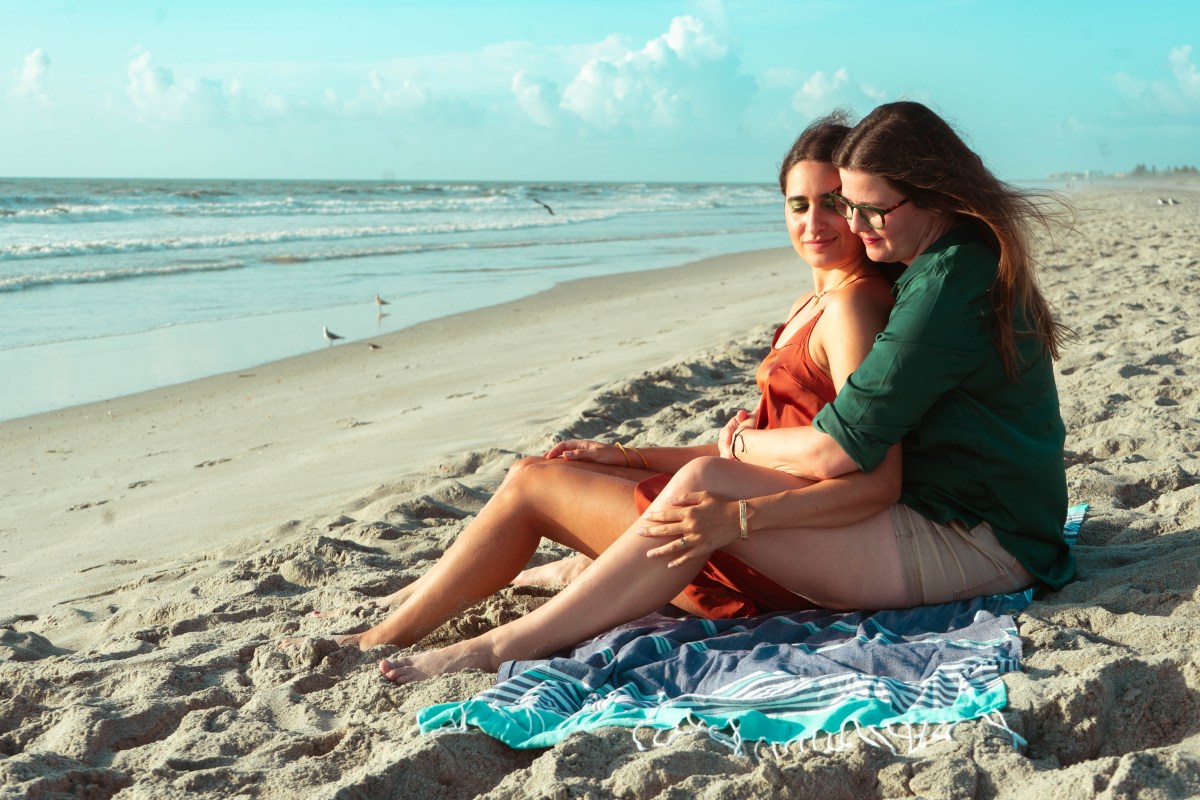
Kayla: So I figured to start, I feel like you have a decent amount of Barbie lore. So before we even get into gender and sexuality and that kind of stuff, what is your history with Barbie?
Kristen: I wrote an essay about this for BuzzFeed, but I was obsessed with Barbies. I loved dolls growing up. I thought baby dolls were fine — I liked them, but they weren’t my favorite. I loved Barbies. I liked how they moved. I liked all the different outfits and themes they had. I liked the accessories. I liked the idea that you could spend a literal hour putting together a scenario, setting up a scene between two Barbies and put together what that bedroom would look like, or a kitchen or something. Sometimes I would do that and that would take me two hours, and then I’d be exhausted and I’d be like, well, I can’t even act the scene out now because I’m tired from setting up the scene.
So maybe that’s the writer in me, early writing brain being like, and here’s what’s going to happen in the scene. But we didn’t have any money either, so it’s like the dolls I had, I collected from different people on birthdays and Christmas. But I would use a shoebox as a bed and I would be like, oh, look, I can use the shoebox lid as a wall inside the place. I didn’t have stuff, using a Kleenex wadded up as a pillow and another Kleenex for a blanket, so it’d be trying to set stuff up with the things I had. It was very fun. The accessory stuff felt very creative, but I also liked the Barbies just because I thought that they were pretty. They were always older seeming than me, because when I had them, they were fully fleshed out in form.
Kayla: Boobs.
Kristen: They had boobs and asses, and they looked like adults. I liked that they looked like adults.
“i wanted to have a barbie that represented the babysitter’s club”
Kayla: Did you have favorite ones?
Kristen: Yes, but especially when I was in the fifth grade, I was obsessed with The Babysitter’s Club, and so I wanted to have a Barbie that represented what I thought was each member of the Babysitters Club. I’d set up the room where they would be at somebody’s house, at Claudia Kishi’s house, taking the meeting. She’s the only one with the phone line.
Kayla: Yeah. I said yeah, but I actually know very little about The Babysitter’s Club.
Kristen: Come on, Kayla.
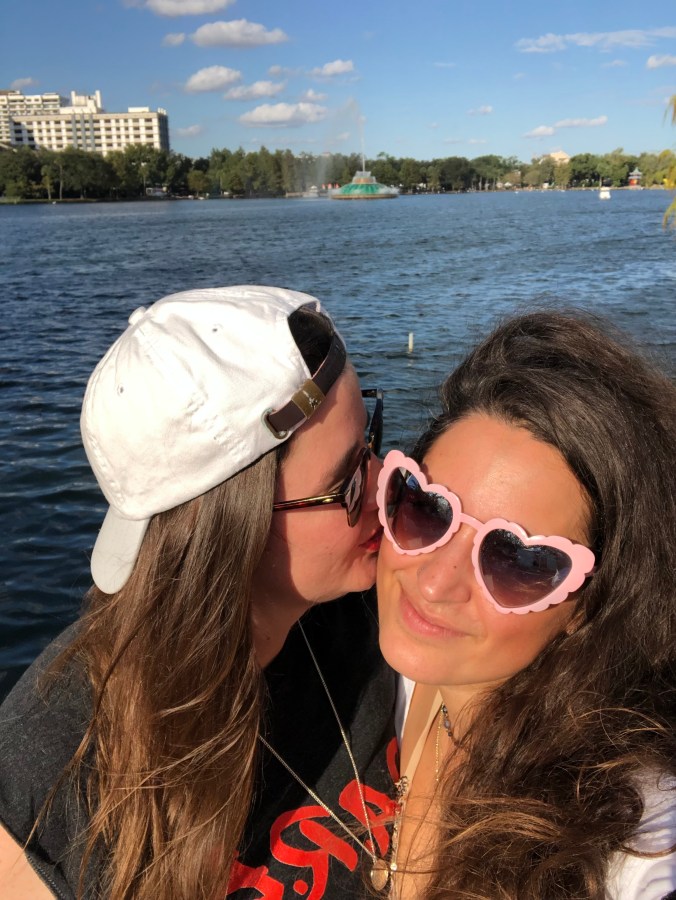
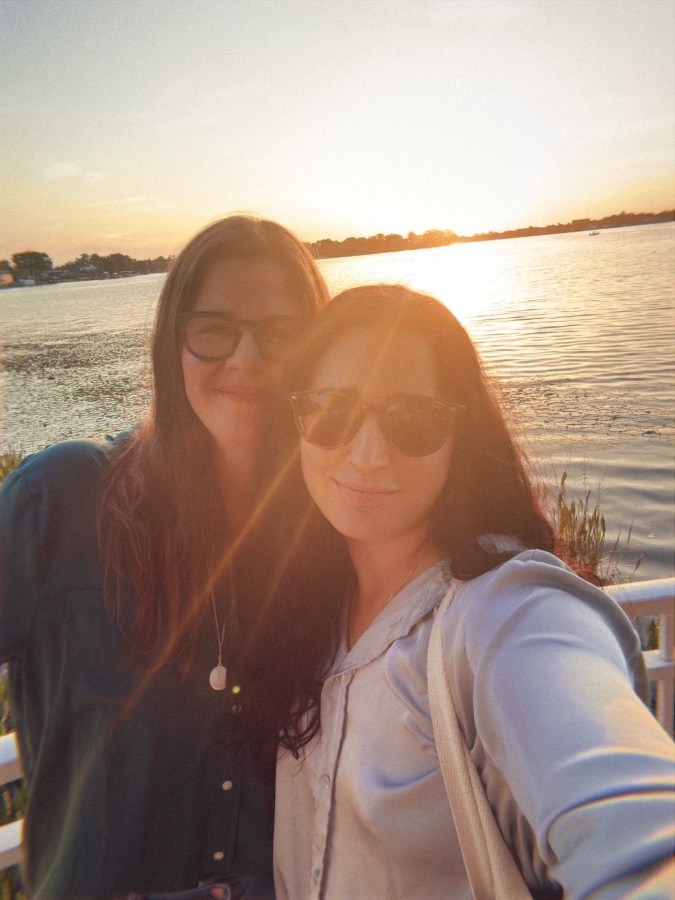
Kristen: So I had different Barbies that represented each of those members of The Babysitter’s Club. I thought I did a great job with them. My California Fun Barbie was Dawn because she was from California. So I’m like, aha, perfect. Because Ann M. Martin’s always writing her as dressing like she’s from California, whatever the fuck that means.
There were these dolls that weren’t Barbies, but were popular for a period of time called Maxie Dolls, and they were like Barbies, except I think at the time they were proto-feminist, so the boobs were a more normal size, the waist was—
Kayla: Smaller boobed Barbies?
Kristen: Yes.
Kayla: Like flat-chested Barbie?
Kristen: Not flat-chested, but a reasonable sized proportion. Her feet were flat.
Kayla: Oh, she didn’t have the perpetual heel.
Kristen: She wore a flat shoe, but she, to me, looked really sophisticated, so I made her Stacey, who was from New York.
Kayla: Got you.
Kristen: And then, I mean, Kristy, who was the tomboy, I made her Skipper.
Kayla: So she was the tomboy? I mean, that’s what I was going to get into.
Kristen: Skipper’s also a little kid, kind of.
Kayla: I think when I was playing with Barbies, Skipper went through a few rebrands and they aged her up eventually. She was still a teen. I had a skateboard Skipper that I think was supposed to be a little older.
Kristen: Then they came out with Kelly, who was supposed to be in elementary school.
Kayla: Yes, Kelly was the little one. With the exception of that one Skipper — which is also funny because Skipper was not that much of a tomboy.
Kristen: I think my brain chose her as that, because I was like…
Kayla: You were mostly playing with very high femme, classic Barbie dolls.
Kristen: Right. I had outfits for all of them. I wasn’t as interested in the gowns on Barbie. Don’t get me wrong. I had some, but it was like whatever people gave me, I kept. I had a shit ton of clothes, but my favorites were little slutty outfits.
Kayla: Like Club Barbie.
Kristen: Club Barbie. I had this white leather mini skirt with a purple velvet belt with glitter in it, and I thought that was a hot look. I loved crop tops, little tank tops or a little shrug, leotard, any aerobics clothes. I’d like them to look sexy. Somebody gave me a wedding with accessories, but those were not as fun to me. The fun stuff was more like, Rocker Chick Barbie.
“tomboy barbies were a subconsciously accessible form of queer expression”
Kayla: Well, that’s funny to me because I feel like Barbies are for us, like they are for a lot of queer people, part of our original queer lore, but in these interesting ways where you were playing with super, super femme Barbies, but now you’re more butch, more masc. I was playing with the “tomboy” barbies, which weren’t like,MascBarbie, but I was playing with Skipper—
Kristen: There was Ken, Kayla.
Kayla: There was Ken. I did not like Ken. I was like, that was too masc. But I liked Skipper. There was a line called The Generation Girls, something like that, and I had one who was a tomboy. She skateboarded and had these baggy metallic pants and a boombox. And also, I had a Mary Kate [of the Olsen Twins] Barbie, which was the tomboy one. She had a horse-riding outfit — khakis and a blazer, pretty masc for Barbie.Equestrian attire, basically masc.
So I was very drawn to that. And now I’m so femme and high-femme myself, but it also took me a while to get to that high-femme place. I think that those tomboy Barbies were almost like a subconsciously accessible form of queer expression or queer gender expression for me at a super young age, before I ever would’ve put words to that or really understood it. But then I think for you, it was the opposite. This idea of being able to dress up and manipulate these slutty, femme Barbies.
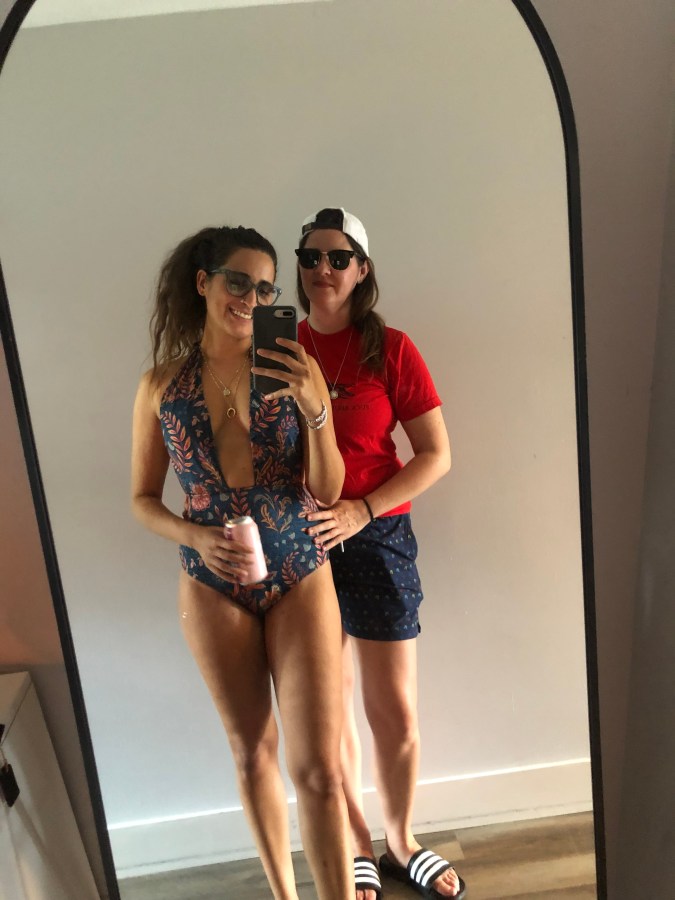
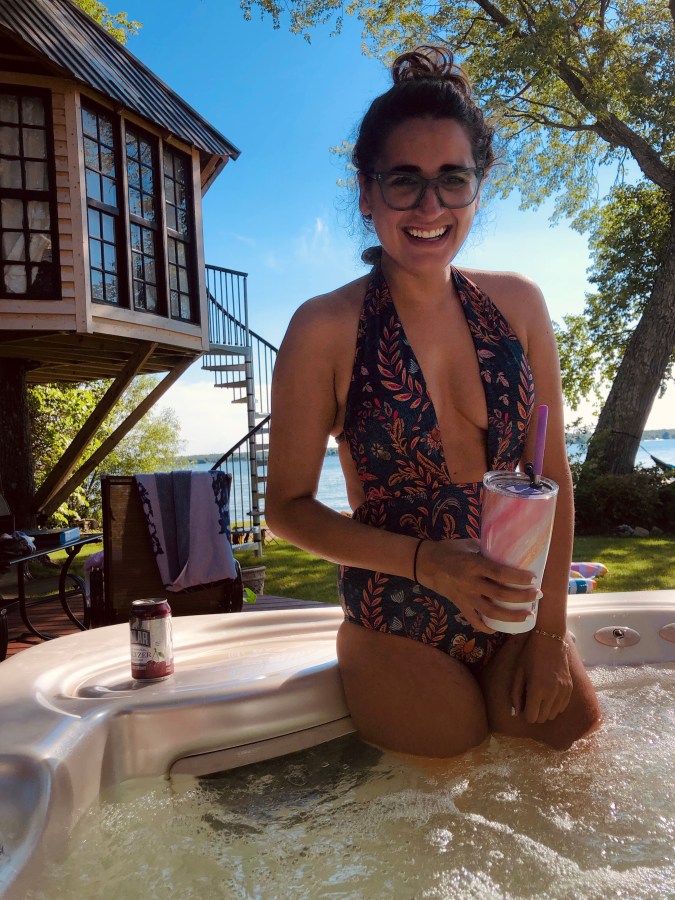
Kristen: I would’ve spent all day playing with Barbies, and I played with my Barbies way longer than other people I knew.
Kayla: Me too. We both have younger sisters, I will say.
Kristen: I used that quite often as an excuse to be able to play with them. But I didn’t like playing with my sister with them. I liked that my sister got stuff, and then I got to play with it myself. Because my sister’s eight and a half years younger than me. And my closest sibling was my brother, and he and I were less than two years apart, and he was not wanting to play with Barbies. There was a period of time when I had a friend from church who’d sometimes want to play Barbies, but mostly I’d play Barbies by myself. Just for hours, alone, putting together my scenarios. I was very specific about my Barbies and didn’t want people touching them or messing with them. I got very angry if my sister tried to do things to them ’cause I didn’t trust other people to take care of them the way I wanted to.
Kayla: Because those were your girlfriends.
Kristen: Those were my girlfriends.
Kayla: Those were literally your girlfriends. And if anybody was mistreating them, you were going to fight them.
Kristen: Well, I think because too, I was so careful how I put their clothes on, keeping all their stuff together, their hair. I wanted their hair to look like it had when they were in the box. You couldn’t have paid me money to cut off my Barbie’s hair, which I know some people did. I loved their hair! It was the most beautiful, long, gorgeous hair, and I was like, I really want to keep it looking nice.
Kayla: Did you ever have any of the brunette dolls, though, because you don’t love a blonde?
Kristen: I did have some, yeah. I had—
Kayla: Teresa, mayhaps? Was she around?
Kristen: Yes, I think she was my Mary Anne.
Kayla: I love Teresa.
Kristen: She was my Mary Anne in my situation. And my Claudia doll was Asian American, and she had beautiful hair. And I just wanted them to stay looking pristine and perfect. And the jewelry — like sometimes they came with earrings you could put on them.
Kayla: Yeah, I remember because I ripped some out of mine.
Kristen: Oh my God. Oh, that was a thing that happened too. I had an unholy fit once because it was either my brother or my sister chewed on the hands and feet of my Barbies and ruined them.
Kayla: A lot of people have oral fixation with Barbie limbs.
Kristen: I get it, but it ruined them — their hands were all crimped up! I wanted to maintain how they looked, which wasn’t something I felt for myself. I didn’t even brush my own hair most of the time. I was always dirty, my clothes never fit right. Dressing for church made me deeply physically uncomfortable.Not even like, oh, I feel uncomfortable with gender. I did feel uncomfortable about clothes. Most of the time, I just wore them. I had to start wearing heels and pantyhose and lipstick to church by the time I was in sixth grade, and I didn’t like that, but I knew that I had to. But I loved that stuff on Barbies.
“i like things that are shiny”
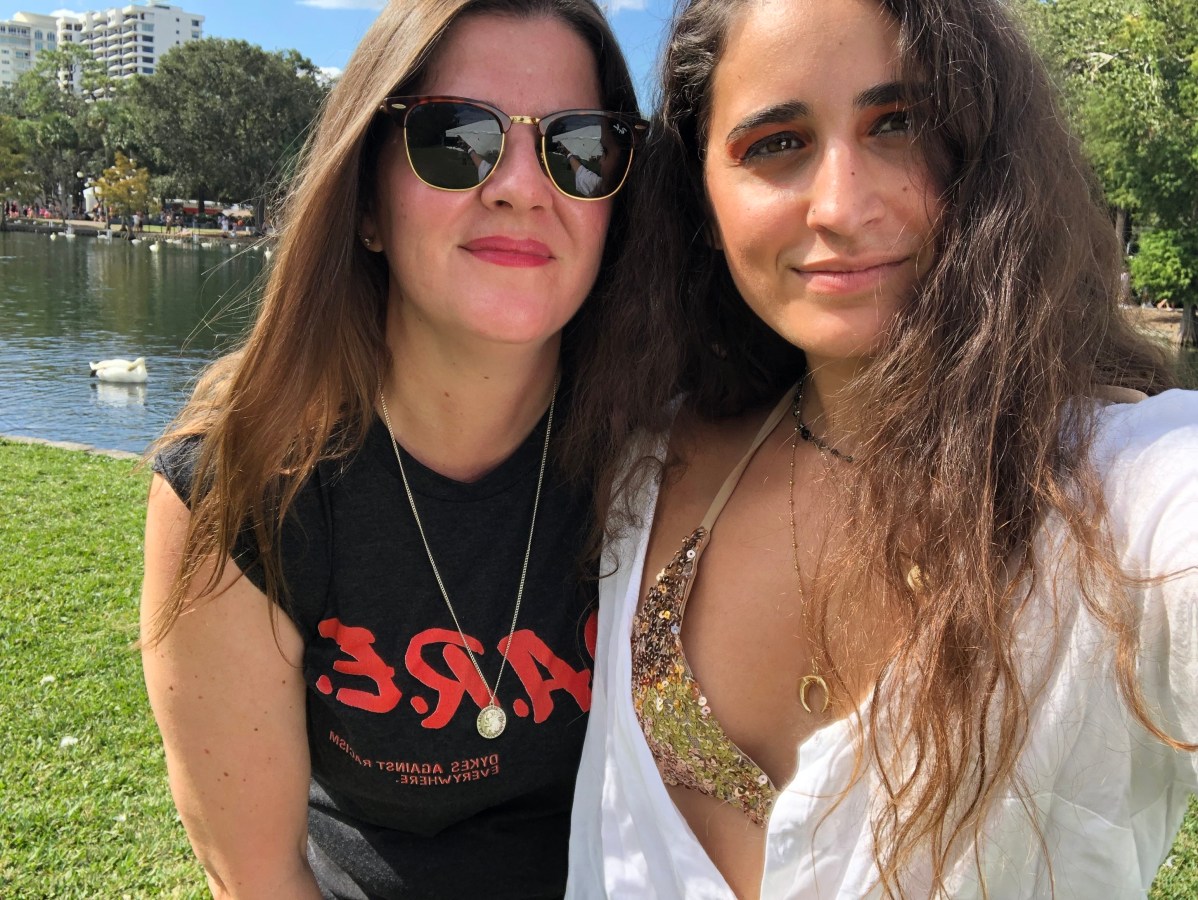
Kayla: So, from even very early on in our relationship, you bought me a lot of jewelry and clothes.
Kristen: Well, okay, for myself — the things I wear jewelry-wise are just the things I’ve worn for basically my whole life.
Kayla: Yeah. It’s very permanent. And It’s very masculine of center, I would say.
Kristen: It’s pretty minimal, and I don’t take it off ever, except my watch that I put on and take off every day. I don’t take any of it off.
Kayla: Yeah. Even in the shower.
Kristen: Even in the shower, to sleep.
Kayla: But you like femme jewelry. You just like it on me.
Kristen: I like to look at it. A huge part of what I liked about Barbie was that I could look at Barbie and be like, what do I think looks good on her? What do I think makes her look good? And so you could look at her and be like, she has this color hair. She looks this way. She comes with this makeup on. You could see what coloring that was, and then choose something to go with it.
I was also limited, because we didn’t have any money. My mom would sew clothes or I had some clothes that were hers from when she was young from her Barbie. So it’s these retro 1960s, 1970s stuff, which was really pretty fun. But yeah, buying clothes and jewelry for you felt actually so much easier than buying it for myself. Because when I was wearing stuff like skirts or jewelry, wearing makeup, I could buy it, but I’d never know what would fit on me or look right.
Kayla: Meanwhile, pretty much literally since the second we got together, you’ve bought me jewelry, at least one piece of jewelry for every single gift giving holiday that we’ve ever celebrated together — Christmas, my birthday, our anniversary, whatever. It’s very rarely something I would’ve picked for myself. It’s one of those things where you know what looks good on me better than I do. You’re also not going off of trends or anything. You’re not buying me the thing that you see that every girl is wearing on Instagram or something like that. You buy me something that’s so perfect on me. And my mom, early on, was always very shocked by that. She would compliment me on something I was wearing, like jewelry or clothes, and I was like, “Yeah, Kristen got that for me.” And she was like, “What?!”
Kristen: Well, some of it is that I feel like, in buying jewelry for you, what I usually try and think about is, because you do wear a lot of jewelry…
Kayla: I do. I love jewelry and I love to change it out too.
Kristen: You mix and match and wear a lot of different things. So usually I think about what things you are interested in, and I also think about the stuff you’ve been into…because you go through, I feel like, spurts of wearing more rings at one time or wearing more necklaces.
Kayla: More silver sometimes, more gold.
Kristen: Yeah. And so I go based off of that, but also I like to see if I can find something that you don’t have already. Is it something that looks like something that you would wear with the clothes and fashion you’re into right now?
Kayla: I always get compliments on pretty much all the jewelry I wear from you.
Kristen: I think jewelry — It has to have a personality. I try and get you something that looks like it has its own personality. But it’s fun to buy you jewelry because then you wear it, and then I get to look at you wear it. And that is better than if I put it on myself because, I used to get jewelry for myself but never wore it.
Kayla: You just liked looking at it.
Kristen: I like things that are shiny.
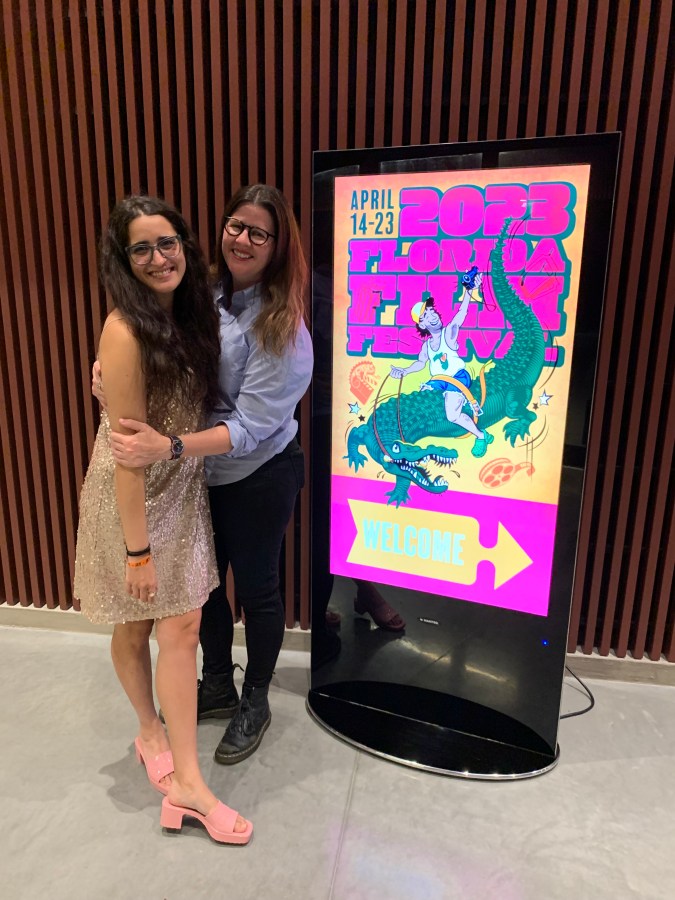
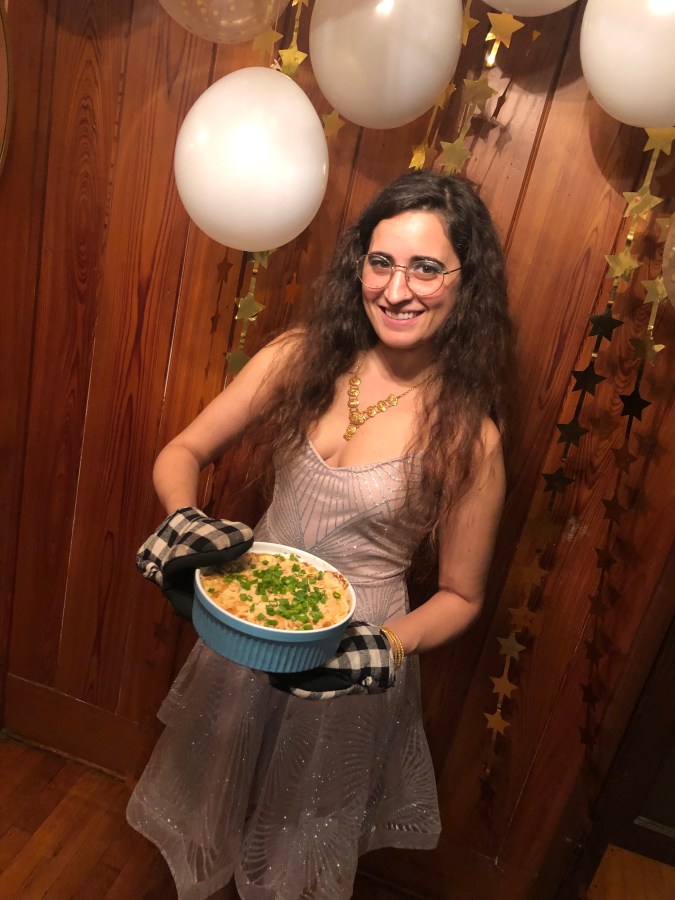
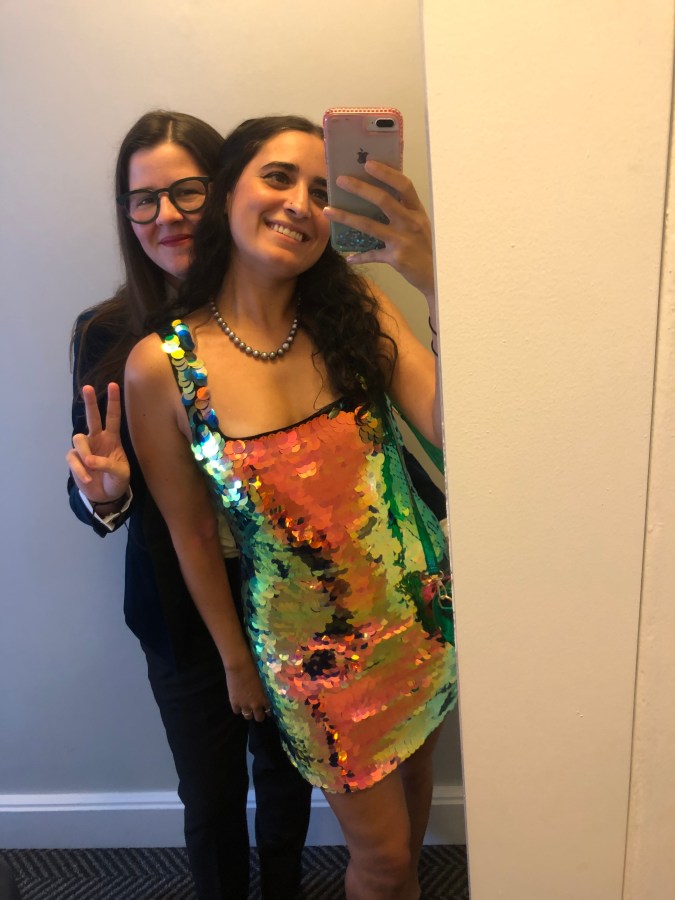
Kayla: You love things that are glittery, shiny, all of that. Which I think people don’t always associate first with butchness or masculinity or whatever.
Kristen: I love shimmer and glitter and sequins. Something shiny will catch my eye. I’m like a crow.
Kayla: You are. It can be the tackiest dress I’ve ever seen, but if it’s sparkly, you’re like, “That’s so cute.” Not that you’ve ever bought me something tacky. That’s not what I mean. I mean on reality television or something like that.
Kristen: Well, I know that I like looking at things that are shiny, but also, and I’ve bought you some things that are shiny, but I only try and buy you things that I think are something you will actually wear, first of all.
“this is the last time I’m wearing a dress”
Kayla: You also buy me clothes. And I think you approach buying me clothes in a similar way to how you’re dressing those Barbies, which is you are drawn to how these cuts of clothes look, but obviously you just don’t want to wear them. You want to admire them in proximity to you.
Kristen: Especially when I was working in libraries, I’d have to be dressed for work all the time — heels, pencil skirts, dresses or rights or whatever. I had a closet full of clothes ’cause I was interested in the idea of different patterns and looking at things. I had so many floral dresses and I’d just be looking at myself thinking okay, this is wearing me, instead of I was wearing that thing. And there were certain things I found that I liked better. Things that were more tailored, that had a certain something that made me wear them longer.
Kayla: Yeah, I mean, I think that anyone who knows you or is even a little bit familiar with you would be surprised to hear that one of the last times you wore a dress was as recently as earlier in our relationship. We went to a wedding together, and you wore a dress.
Kristen: And I remember being there, being like this is the last time I’m wearing a dress.
Kayla: And it was! Well, when you decide you’re done with something, it’s very definitive.
Kristen: Yeah, that is absolutely true. But I was looking around and I was like I’m at a gay wedding right now. Why am I in this outfit that I don’t want to be wearing?
Kayla: I think when you were working in libraries, you felt like you had to perform for the workplace, but at in a space like a queer wedding, that bubble was suddenly popped.
Kristen: I was really unhappy. I was unhappy that I had worn it, honestly. So I was like, that’s just the last time I’m doing that.
Kayla: I wore a full sequin dress because I knew you would love it.
Kristen: It was shiny. You looked like a mermaid.
“you’re holding it down for the long-haired butches”
Kayla: By the point of that wedding, you had been out as queer, as gay for a long time, but I think close to that wedding and the beginning of our relationship — even when we were just fucking around or whatever — you were still coming into butchness a little bit.
Kristen: Well, some of it is that I’ve always been really particular about what I like for myself, and when I do find something I like, I really keep that. I’ve had the same haircut since 100 years ago.
Kayla: You’re holding it down for the long-haired butches.
Kristen: I like long hair.
Kayla: You’re holding it down for the butches who sometimes wear lipstick, too.
Kristen: The lipstick I wear happens to be red, but it’s actually this balm that’s more of a chapstick-lipstick that’s minty. But I just like my hair long.
Kayla: I don’t think that changes my perception of you as butch or anything. I know that we have actually written or done these interviews for Autostraddle before, where we’ll get the weird response of “Kristen Arnett, she’s not a butch.” There’s been random troll-y comments like that, and I’m like, what are you talking about? Because she has long hair, because she wears lipstick? That just doesn’t click for me, but I think there’s still people even within our community that are so biased in the way that they perceive masc identity or butch identity.
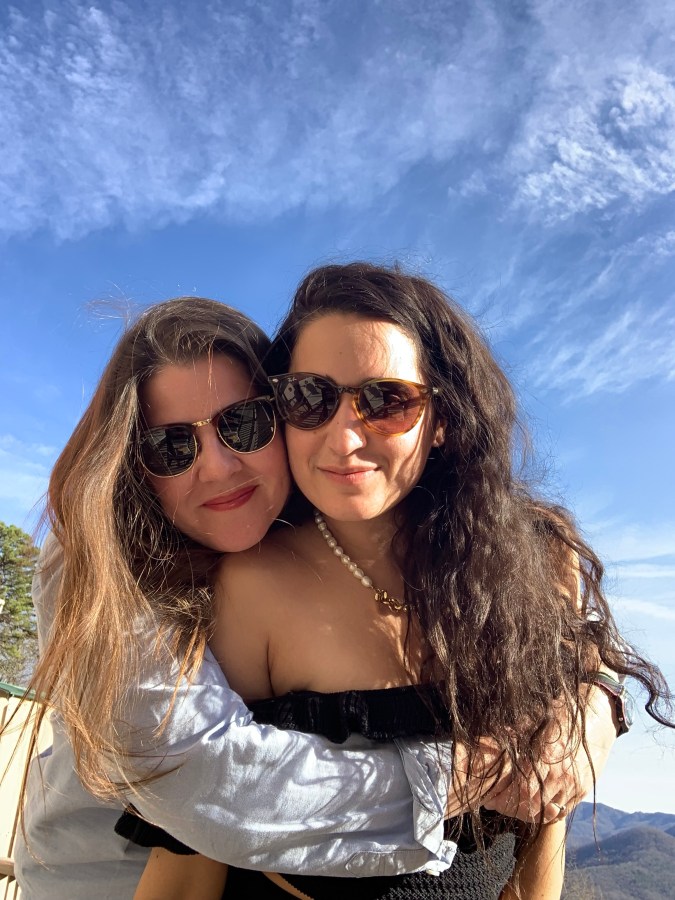
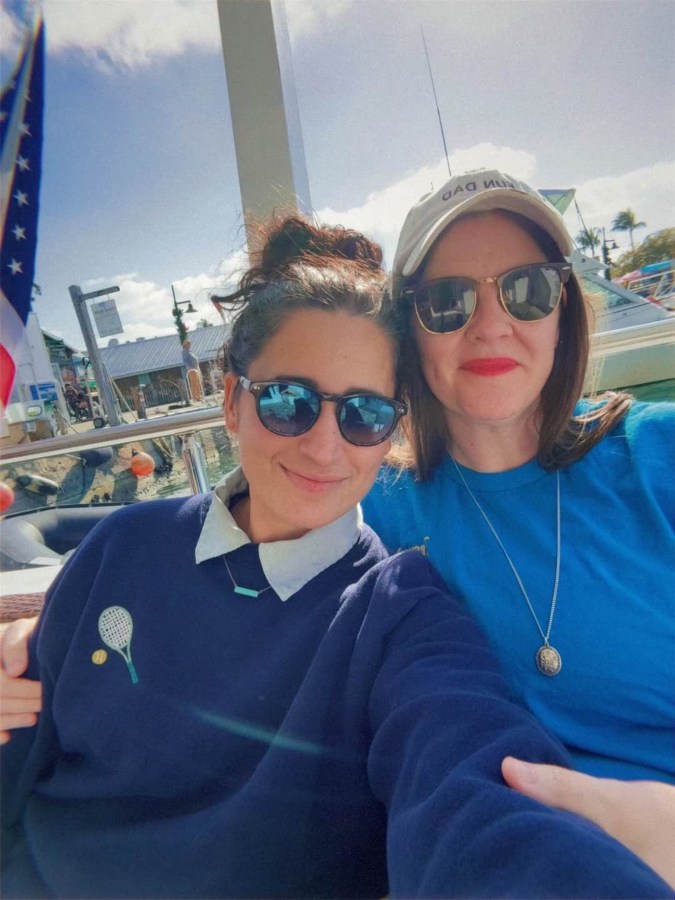
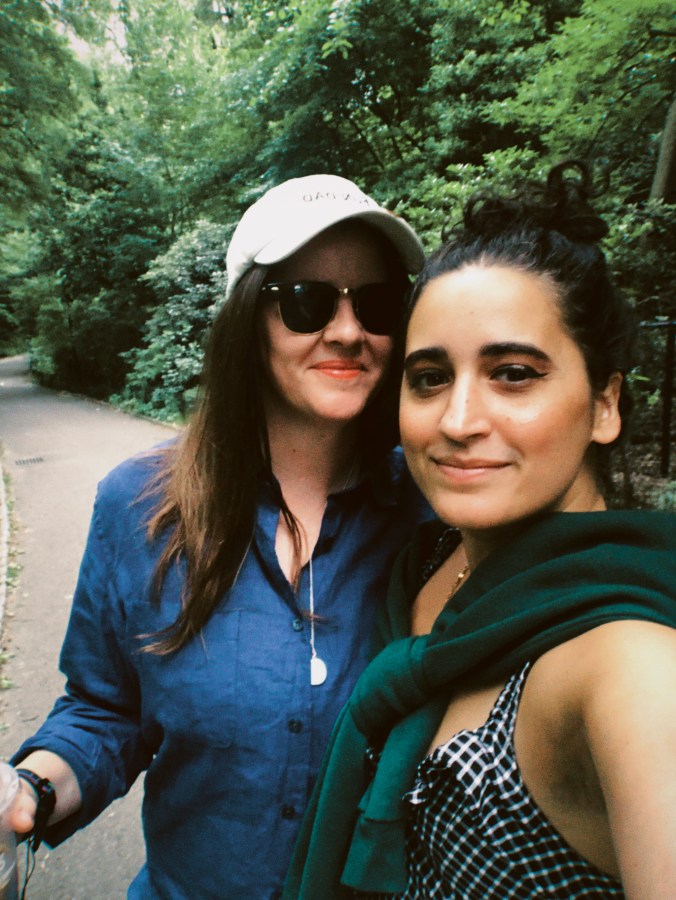
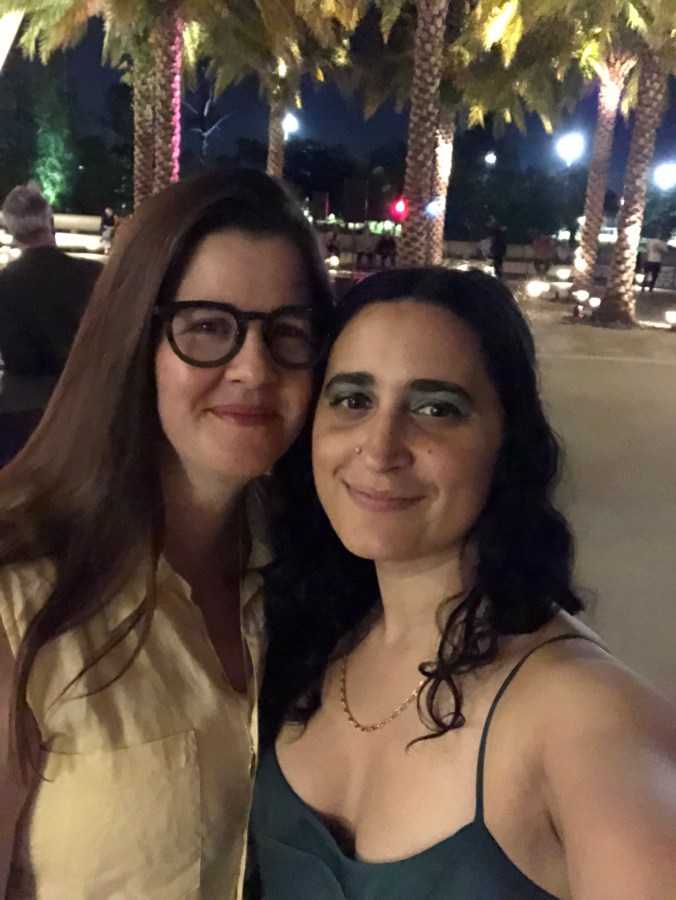
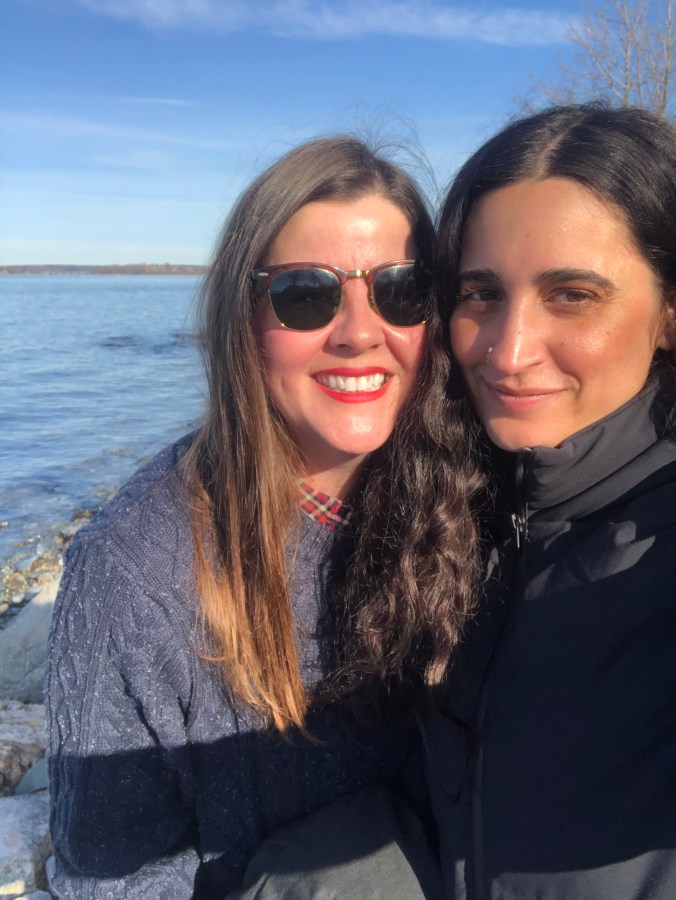
Kristen: I also think too, everything is so much on a sliding scale and whatever. There’s been times recently where I’m like, “I don’t really want to wear lipstick right now.” But then there’s still days I get up and then I’m like, I really want to wear a lot of it. And I think that’s just how you change how you think about yourself.
Kayla: Yeah, I mean you were wearing blush for a while when you were still very much already expressing butch-ness.
Kristen: There’s noprogrammed guide to be like, here’s how you perform any of this stuff.
Kayla: I think for either side of it, femme, butch, any of it.
Kristen: It’s all just movable on a scale, I think. I mean, some of it is here’s what I like right now, and that can include any number of things. I own the same pair of shorts in five different colors because I was like, I like these shorts because I like how they fit.
Kayla: You like what you like.
Kristen: I like what I like.
Kayla: But there’s a difference for you about what you like on you versus what you like to admire on me.
Kristen: I’m so particular and have such a narrow set of things I like for myself. But for you, it’s so expansive.
It’s like how I was for those Barbies, where I view it as an open palette. So it’s like, are we dressing you for summer? Are we going to New York for the weekend? What do those clothes look like, or that makeup? Are we going to the beach? Are we going on vacation? Are we going to the mountains?
“i got your femme hand-me-downs”
Kayla: When we moved in together, I always say, I got your femme hand-me-downs. You were getting rid of a bunch of stuff when we were moving and you were like,let me go through all my dresses and my heels. Tell me what you want. And I took a lot of it.
Kristen: You did.
Kayla: And I still wear a lot of it, like the pencil skirts from librarian days. And it’s interesting because people like my family, they really got to know you once you were a little more butch and more comfortable in that space too, so that’s how they know you. So every time my mom compliments me on a skirt and I say that it used to be yours, her mind is blown.
Kristen: I mean, some of that too is as soon as I got to leave the day work of library work to become a writer full-time, I got torelease a certain way of behaving or moving through the world.
Kayla: I think a lot of people who have worked service jobs can probably relate to that, having to perform.
Kristen: It basically was like, here’s all this uniform that I don’t need anymore. Because the only place I wore that stuff was at work. If I’m not doing this job anymore, I don’t have to wear this kind of “uniform” anymore. Jewelry, makeup, dresses, skirts, shoes, I just let it all go. It was very freeing. But then when you were trying it on, I was like, “oh that looks great on you!” Like those platforms I had that were getting older, and not gonna last much longer, I gave to you.
Kayla: Oh yeah. I wore those wedges to that Ilana Glazer show and the heel completely broke off.
Kristen: Yeah.
Kayla: I’m just walking around on mismatched heels at Gramps in Miami.
Kristen: But I liked them so much on you and you liked them so much, I just got you new ones.
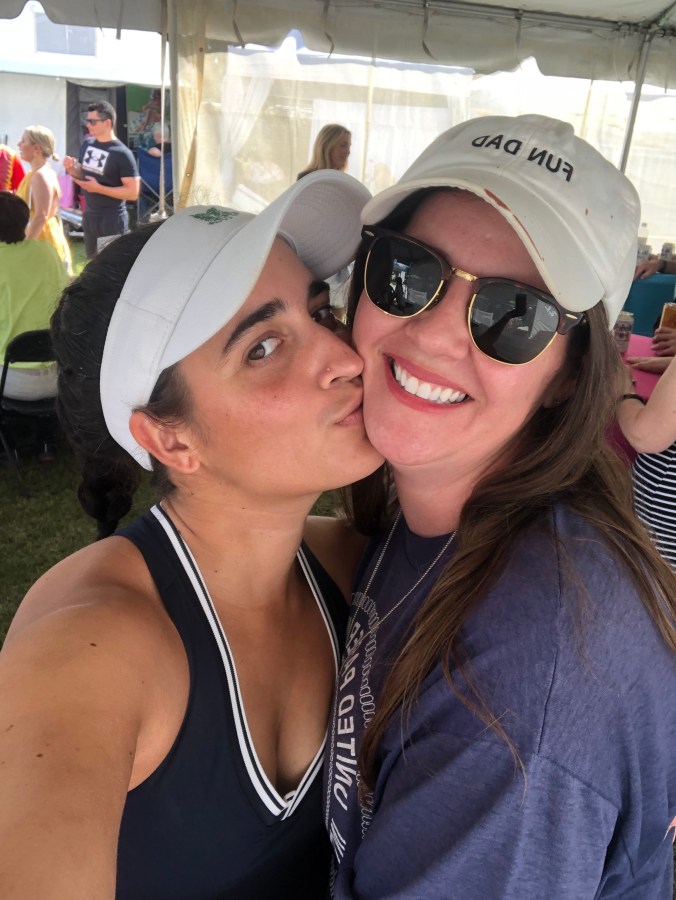
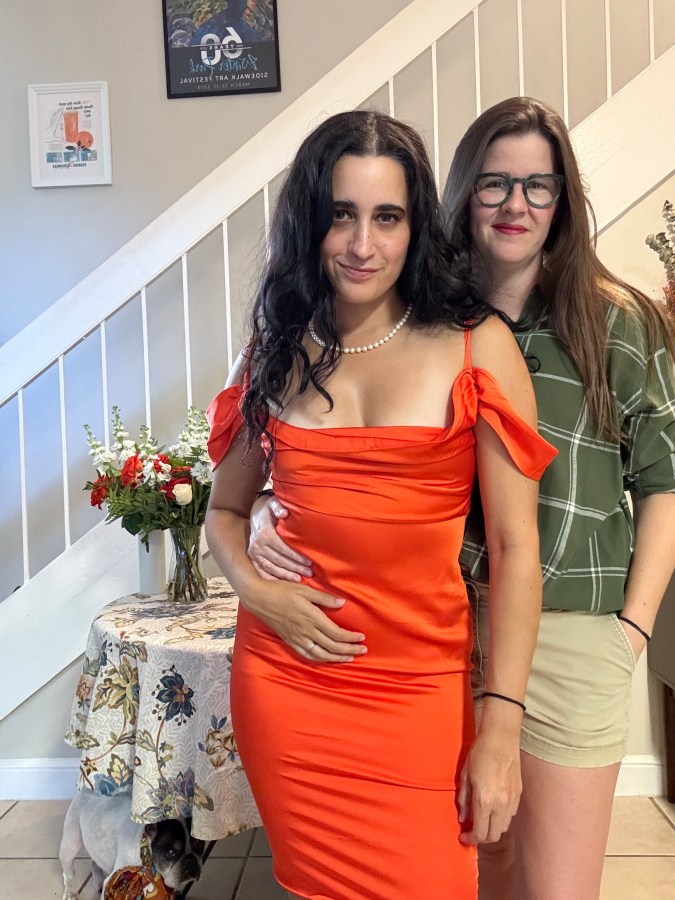
Kayla: Do you think it was solely the job that kept you holding onto those high femme parts of your clothing and wardrobe and stuff? Or was it also that when you were in your twenties, you hadn’t quite figured out that really liking that stuff actually meant you would like it on somebody else? Do you think you held onto it a little bit for that reason, before figuring that out?
Kristen: In my twenties, absolutely yes. But once I was in my thirties, and … some of it too was having a child and having to be in front of people who were judging me because of my age and because of my sexuality. I dressed up in those situations too, because it was basically also a uniform. I need you to take me seriously as a parent.
Kayla: Because those other parents were already biased against you.
Kristen: Yes.
Kayla: So to be too butch in that space would make that worse.
Kristen: Or just not even look serious. I couldn’t be wearing shorts or a t-shirt. I had to look so put together, at the very least like I was business-oriented, like I’m coming from a job, I’m serious. But in my thirties I only wore that stuff at work. Then I’d come home, and especially when I got divorced and I was dating and stuff, I only wore the same pair of ripped jeans and the same pair of Docs I’ve had since forever. Oxfords, like button-ups or tank tops or t-shirts, like V-necks and things.
My best friend Maria came to my Halloween party at the house, and I thought she’d just not worn a costume, but I thought she looked so hot. She was dressed as me! She was wearing those same stupid loafers I own and my ripped jeans and a white V-neck and the necklace that I wear every single day and my same glasses, holding a beer. And I was like, she looks amazing.
Kayla: And she was literally dressed as you.
Kristen: She was dressed like me. There’s just a way in which I like to look. And I knew that, kind of. I know I like to look like that. I still like to look like that. My fashion sense hasn’t changed. But dressing you is fun. I don’t do your makeup or anything, but I love when you sit down and put on a full face of makeup.
Kayla: And you have opinions, when I ask for them.
Kristen: When you ask. I would never try and tell you my opinion about how you should do your makeup.
“when we first started dating, we were on different gender expression journeys that ended up complementing each other really well.”
Kayla: I do think it’s really interesting because I feel like when we first started dating, you and I were both on very different gender expression journeys that then ended up complementing each other really well. We were both able to get to the point where we are now, I think, a lot faster than if we had not had that, not charged off of each other. Because for me, our first date, I showed up in a very … not masc outfit, but I was doing David Rose from Schitt’s Creek. drag. I was in a long black T-shirt.
Kristen: It was more like androgynous.
Kayla: Yeah, with these black cargo pants, really, oversized cargo pants, the long black shirt, some chains and some rings, sure, but I was definitely doing David Rose.
Kristen: It was just a lot of black eye makeup too, and not really anything else.
Kayla: Yeah. Not what has become my signature look now, I would say.
Kristen: Your New York era.
Kayla: That’s my New York era. No, but what it was, I mean, even when you and I started dating and that first date, I was coming off of at least a year, maybe longer, of not wearing dresses or skirts.And I think part of that was just my gender expression within dykeness, within being a lesbian, has really gone all over the place a lot. I had the awkward baby butch era, when I was first coming out and got an undercut. I still really liked makeup though, so it was heavy makeup, but a lot of button-downs and very fitted outfits that I thought lesbians wore.
And then I got a little comfortable with my queerness, went back to my wardrobe and fashion sense from before of long skirts and things like that, pretty femme or whatever. And then something that happened in my long-term relationship before our relationship just really threw me off. I became very insecure about a lot of things. I started wearing very baggy clothes, wearing the same things all the time. And then after that bad breakup, I was like, yeah, I don’t even know, going through something. I mean, even before the breakup, I got the Timothée Chalamet haircut.
I was almost back to square one with the confused baby butchness, a lot of eye makeup, oversized Calvin Klein t-shirts I’d buy from thrifts, big pants. It had been at least a year since I’d worn a skirt or dress when we went on our first date.
I think it was around that time of just getting out of that last relationship and then especially when I moved out of that apartment with that person, I was rediscovering myself and really realizing how much I love to be a femme. And then the fact that that was something too that you really enjoyed and you also were buying me these things, maybe buying me things that I wouldn’t have been buying for myself at the time — but wanted. It’s like you knew.
Kristen: Sure, yeah.
Kayla: Especially clothes. Yeah, sparkly clothes and things like that.
Kristen: I feel like it does sound the way I’m describing it. I buy things like toddler clothes for you.
Kayla: Not toddler! But they are something that a toddler would love. When I wear a dress that you bought me, I get so many compliments from my five-year-old niece.
Kristen: Oh my god.
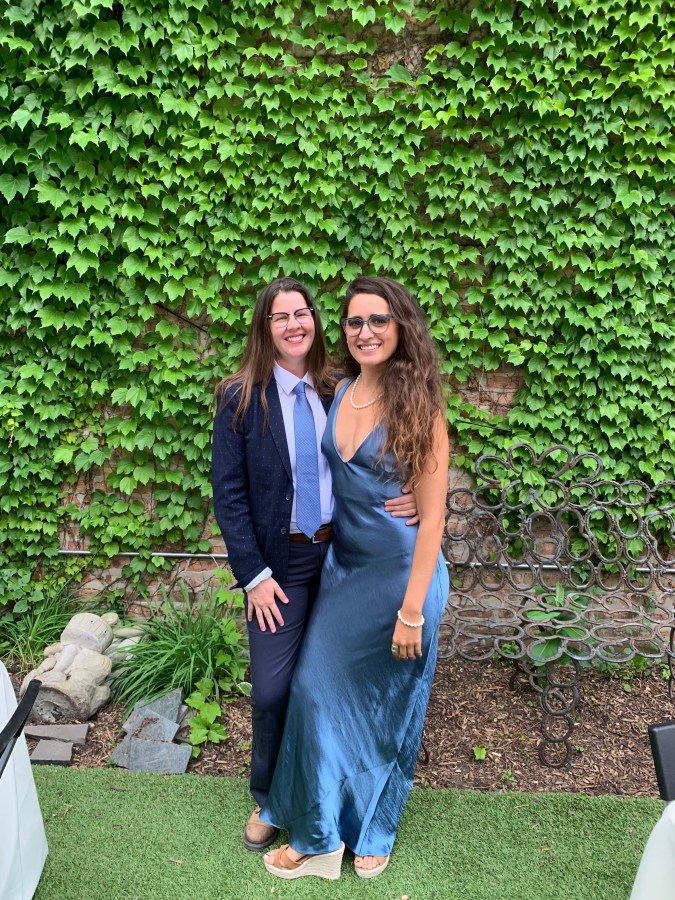
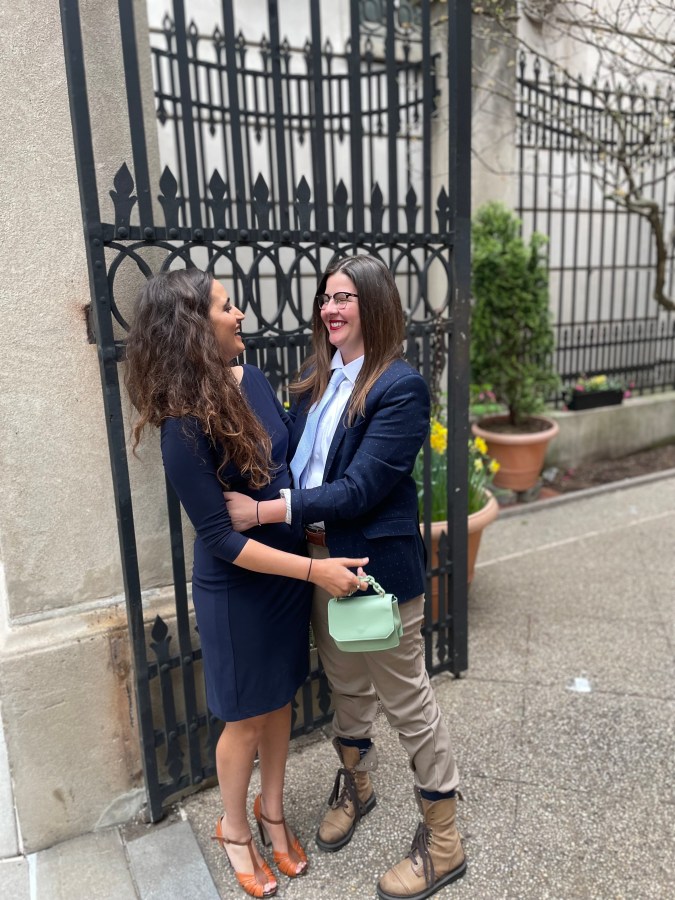
Kayla: But yeah, it was interesting because I think it was this dual thing happening for both of us at the same time, and I think that helped both of us too with that journey. When I bought that dress for that wedding, I knew you were really gonna like it. Itwas emerald green, head to toe, long sequined gown, super low cut. I loved it But I remember buying it because I was like, oh yeah, Kristen would really like this too. It was not the type of thing I would’ve bought myself for a long time, and I felt amazing in it, so good. So then the fact that you were at that wedding too in an outfit that you did not feel good in—
Kristen: I felt deeply uncomfortable in what I was wearing, but it was good for me because—
Kayla: I think we both had really good realizations at that wedding.
Kristen: After the wedding was over, our friends Ryan and Chelsea were there and they were like, “Do you guys want to go get drinks afterwards?” And I was like, “Yes, but we’ve got to go back to the hotel.”
Kayla: And change, that’s right.
Kristen: I was like, “I need to change clothes.”
Kayla: That’s right.
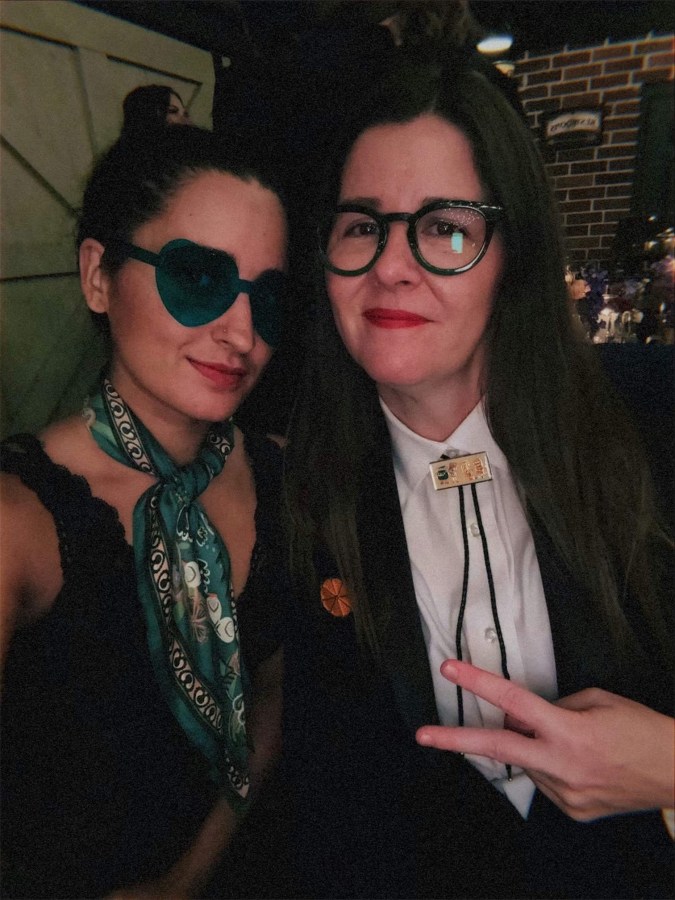
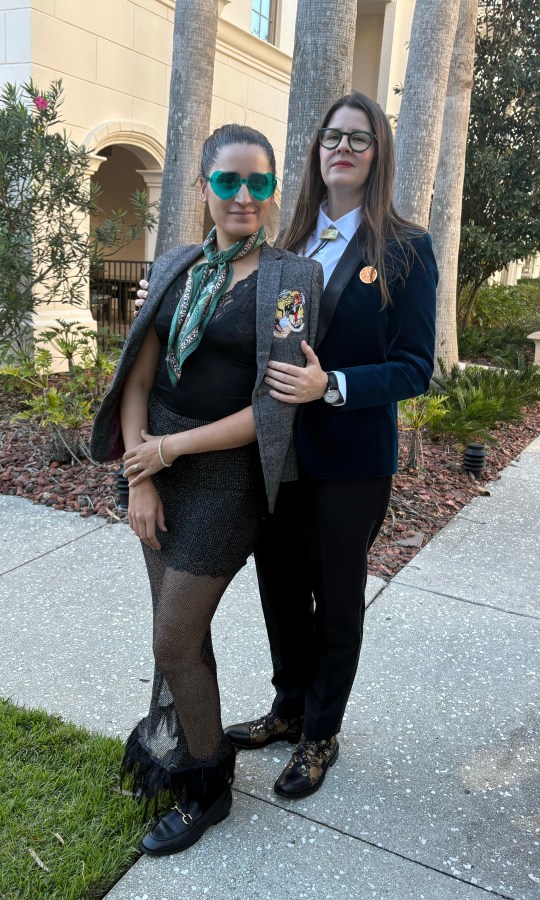
Kristen: So I got to put on normal clothes, and it was a relief, first of all. That physical relief I’ve always felt with getting to take off stuff like that. But then, because I also was wearing a dress that required a strapless bra.
Kayla: That’s crazy to think about, too.
Kristen: And I was like, why did I do this to myself? It was very funny to me because I feel like it was the last hurrah of trying that out, where I knew going into the situation I was going to be wearing a lot of things that made me really uncomfortable. The shoes I had were really pointy toe, black, almost stiletto heels.
Kayla: Yeah. You changed into your Docs for the bar.
Kristen: I changed into my Docs. And I was like, this is great. I’m never going to need to do this again. And I was like, if I’m going to go to another event, it’s going to be not in a dress anymore. And that was very helpful to me.
Kayla: Meanwhile, I left the floor-length sequin dress on for the dive bar. I only changed my shoes. But I was likeI’m leaving the dress on!
“you treat me like a Barbie doll because you do my hair”
Kayla: So I mean, I think we used to joke about you treating me like a Barbie with the jewelry and clothes and all of that, but recently it has become even more apparent that you treat me like a Barbie doll because you do my hair.
Kristen: Yes. I mean, I don’t do very intricate hairstyles or anything because I think a lot of times when people hear “do a person’s hair,” they’re thinking about some braiding or updo or—
Kayla: Blowout or something.
Kristen: And that’s not what’s happening. It’s more like hair care.
Kayla: Yeah, you’re doing my hair the way you did Barbie’s. In the way that you wanted to preserve how Barbie’s hair looked out of the box, you’re doing mine just as it’s naturally worn,which is honestly what I like, I mean, except for when I went through phases in high school, middle school and stuff where I was straightening my hair, as most curly girls did at some point. But for the most part, I like my hair to be very natural. At the most, when I’m doing my own hair, I diffuse it. But even for our wedding, I wanted a very natural look for my makeup and for my hair. I wanted it to look like the way I always do my makeup and hair, but just elevated. And so you do my hair just to make it look the way it’s naturally supposed to look. Natural curl pattern, all that stuff. You’re taking care of my hair.
Kristen: Yeah, I do. I would say I do hair care for you. I haven’t dyed my own hair since probably 2012, but I dye yours for you.
Kayla: Oh yeah, you do it and you do it so fast.
Kristen: It takes three boxes of dye to do your hair.
Kayla: I have a lot of hair! And I’ve always box dyed my hair, and I tried different colors throughout my youth and my mom would do it, or do it with my sister, sometimes. I think I’ve only had my hair professionally dyed once, and I was like, “this is dumb, I don’t have to pay for this.” But then then I said something about it and you were like, “I could do that.”
Kristen: It’s easy.
Kayla: You did an amazing job, so then you became my colorist. We do it in the backyard.
Kristen: Sometimes I make you a spritz.
Kayla: Yeah, exactly. It feels like the full salon experience.
Kristen: There’s usually a bird or something in the birdbath.
Kayla: We call it Daddy’s Salon.
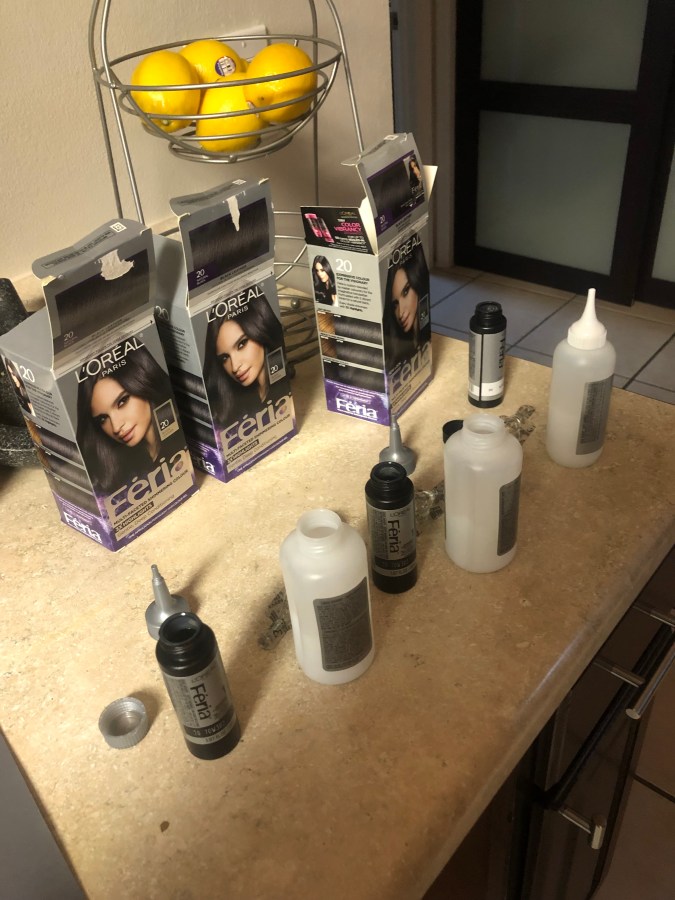
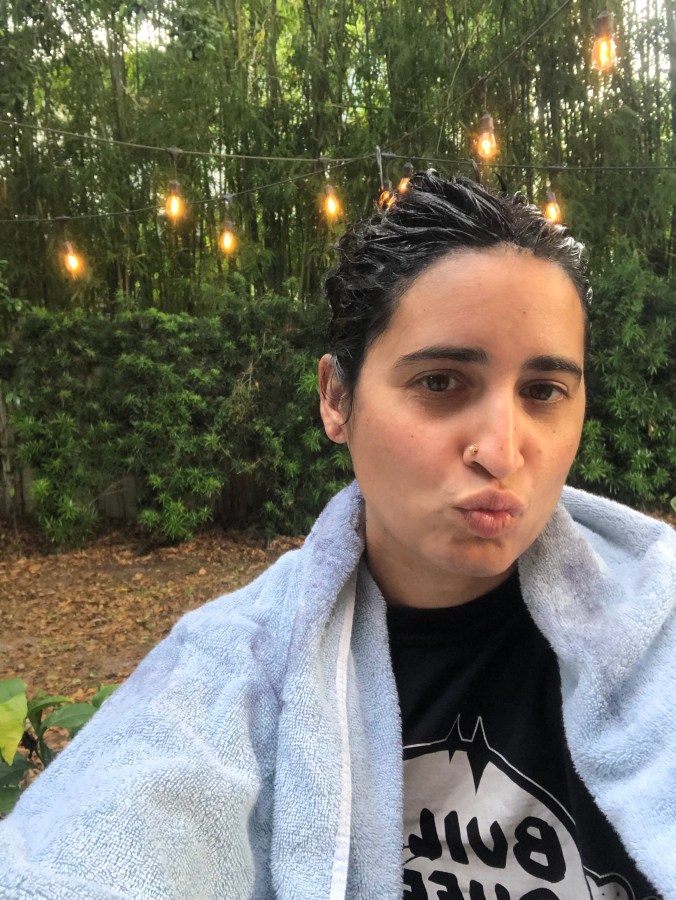
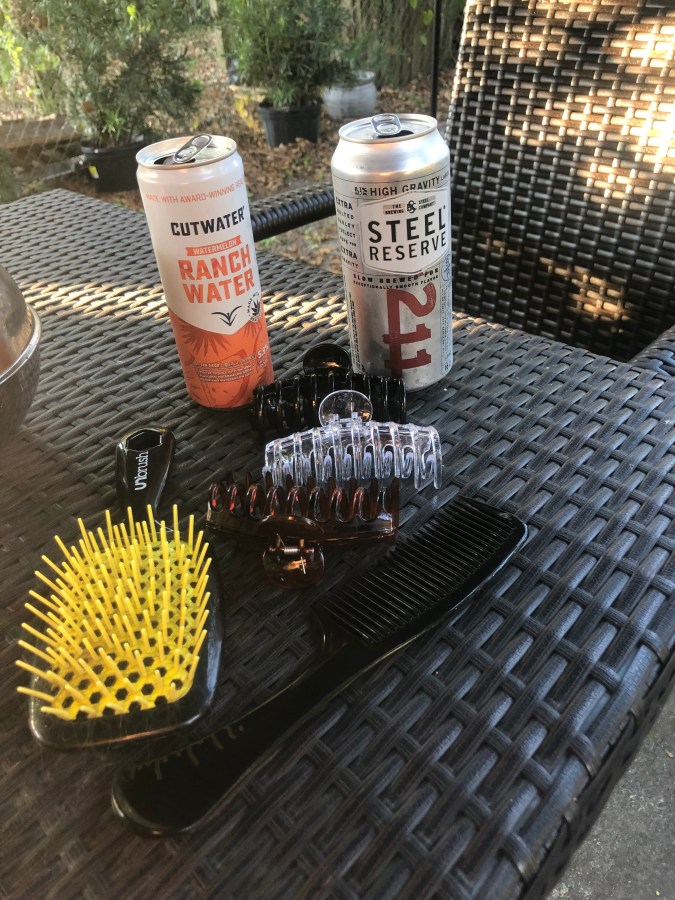
Kristen: So I dye your hair, but also I’ve started doing a thing where, I’ve always looked to give you a scalp massage or scratch at your scalp for you. And then now, because your hair is getting really long right now because your hair grows really fast, I’ve been detangling it for you.
Kayla: Yeah. Every other day, you detangle my hair. We sit on the couch and you detangle my hair.
Kristen: And then sometimes I’ll put coconut oil in it.
Kayla: You’ve bought me hair products and told me how to use them. This all sounds crazy, you teaching me about hair, because it’s yeah, you’re a white person with straight hair and I’m half Indian and have this curly textured hair. But I think the context for this is no one ever really taught me how to do my hair.
I feel very sensitive about my hair because of the way that my mother was about my hair growing up. Also, for a little background context,my sister, who I’m very close with, does not have any hair. And I think that created a dynamic growing up where my parents, for a long time, thought we’re going to keep Kayla’s hair really short because Alex doesn’t have hair. We don’t want to make her jealous.
Anyways, my sister’s a very strong person. She has alopecia. She never felt any type of way, but my parents basically kept my hair really short. I think part of it was also my mom not really wanting to deal with it because any time it did get long, she didn’t really seemingly know how to deal with it at all. And my hair is not that curly and it’s not that textured, but it’s just different enough from what she was used to that she, to this day, doesn’t really understand. She’s like, “Well, why does your hair get tangled?” Or whatever. And I’m like, because texture. Because it’s thick. Because there’s a lot of it.
Kristen: Your mom also has never had long hair either. Your mom always has had a very short haircut.
Kayla: She has thick hair, but it’s just different than mine. And there was never a real understanding about that. She wanted to brush my hair out all the time. My hair looked really bad when it was brushed out. My family made fun of my hair a lot growing up, compared me to Ugly Betty.
Kristen: Oh my god.
Kayla: And I was like in middle school when that show came out. But that was mean! I do love America Ferrera. Actually, that’s a Barbie connection.
Kristen: Yeah it is!
Kayla: But also if my hair looked like Ugly Betty’s, it’s because my mom was brushing it out and just making it into a bushy mess.
Kristen: A big part about taking care of your hair for me has been being really patient. And so sometimes the only times I’ve gotten on your case about it is because you can occasionally be impatient with your hair and you’ll maybe yank it if there’s knots or anything. So it’s like, why don’t you let me do it, because I will sit and I’ll be patient with it. If your jewelry gets tangled, I’ll sit and unknot it. I can do the same thing with your hair. I don’t mind sitting and being patient and we can watch a show or do something.
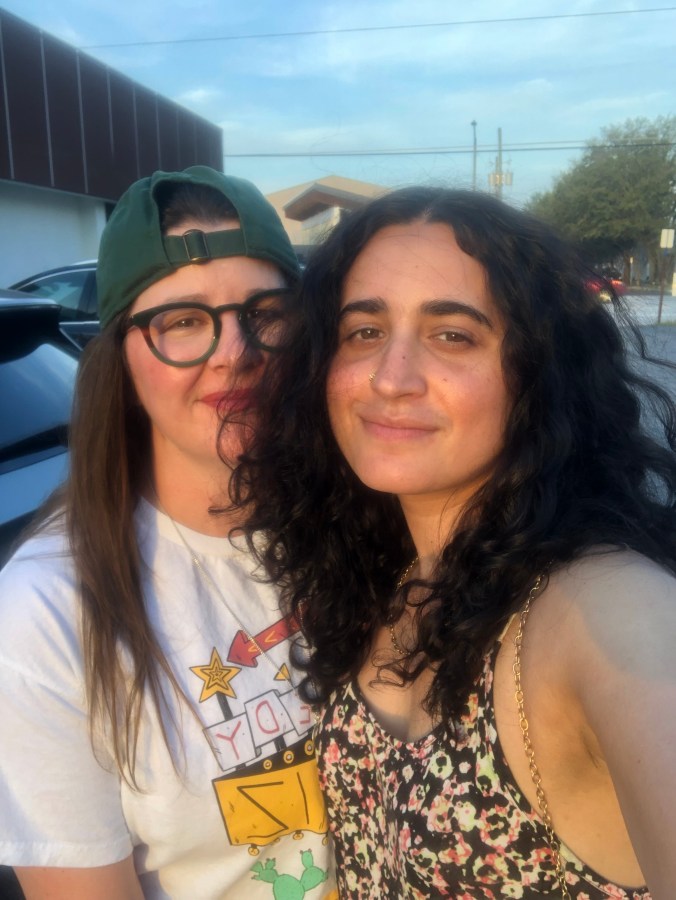
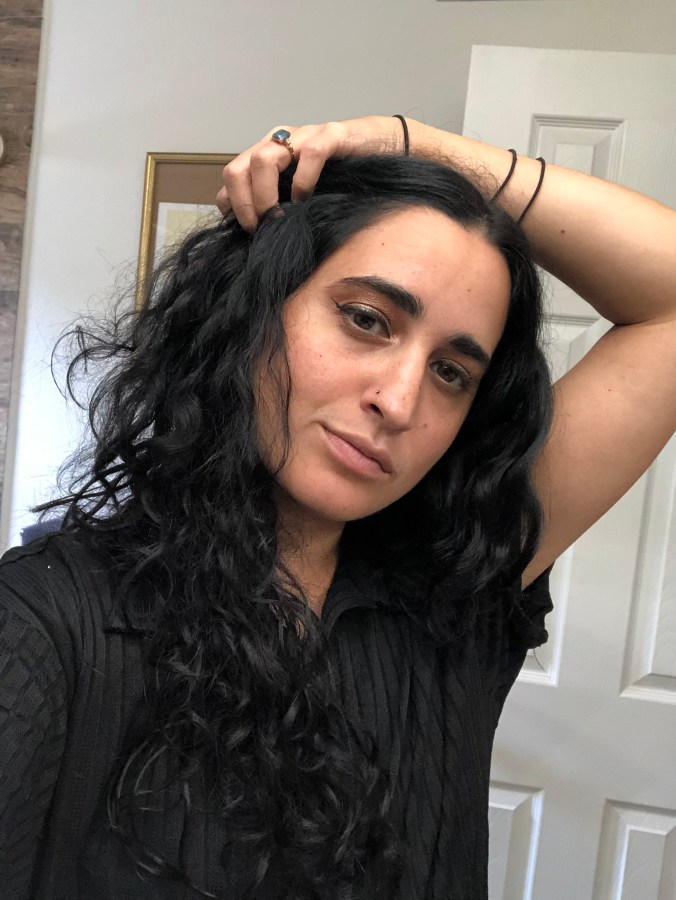
Kayla: Oh yeah. The first few times you detangled my hair, we were watching Severance.
Kristen: We were.
Kayla: We would pop Severance on and you’re just going to town, detangling my hair, being so gentle with it. No one has ever treated my hair with the care you do — not even me!
And yeah, ever since, I’ve had less breakage. My hair has been growing even faster than it usually does, which is already pretty fast. You’ve introduced me to new products, told me how to use them. I think that was something that super surprised me because I was like, you take care of your hair, for sure, but you have such different hair than I do, and we don’t use the same products. You’re washing your hair way more than I wash my hair.
Kristen: I just have different hair than you and so I do have to wash it way more often. I like taking care of your hair, I like taking care of you. I’ll lotion you or give you hand massage or foot massage.
“i think i have to go to the store and get nail polish remover because i can’t handle this.”
Kayla: I mean, you definitely did this during lockdown, but still now you will do my nails. You’re great at painting nails. That’s another thing that you’re very good at.
Kristen: And I’ve never done that for me, ever.
Kayla: And I remember there was a time where you did both of our toenails? And you did your own because you were like, “I’m going to try it out.”
Kristen: And I hated it.
Kayla: You were so upset.
Kristen: We didn’t have any nail polish remover, and I was like, “I think I have to go to the store and get nail polish remover because I can’t handle this.”
Kayla: That was one of the most dysphoric times I think I’ve ever seen you.
Kristen: It felt bad.
Kayla: Yeah. It was red, so it was bold. But yeah, you were like, “I have to get this off of my toes.”
Kristen: It was strange because I didn’t anticipate that happening.
But I love painting your nails. I always think they look really pretty. You can’t really go do it anymore because you’re doing a lot of tennis, but you were going and getting manicures and I thought that always looked really nice. You have really nice hands.
Kayla: Thank you. Very gay of you to say.
“you know what’s going to look good on me, also what’s going to make me feel good”
Kayla: I do think it’s interesting because I love dressing up, I love being high femme and doing my makeup and having my nails done and all this stuff, but I don’t really like doing it myself.
I don’t like making choices all the time. We’ve given this piece a very over-the-top headline, but I think there’s something empowering about me being like, you know what?You see me better than I could ever see myself in a lot of literal ways. You’re looking at my face more than I ever look at my own face, but also you love me and you see me in the best possible light. You know what’s going to look good on me, also what’s going to make me feel good. You’re never going to buy me a dress that I feel uncomfortable in.
Kristen: I don’t buy you something purely because I like the way it looks. I buy it because I think that you’ll enjoy wearing it.
Kayla: Yes. You’ve never bought me something uncomfortable. I think there’s something almost empowering about the fact that I can rely on you to make these choices for me and treat me in these ways. Because then it results in I look my best and I don’t have to think about it or do it myself.
Kristen: Yeah. I mean, I always just want you to feel good.
Kayla: I know.
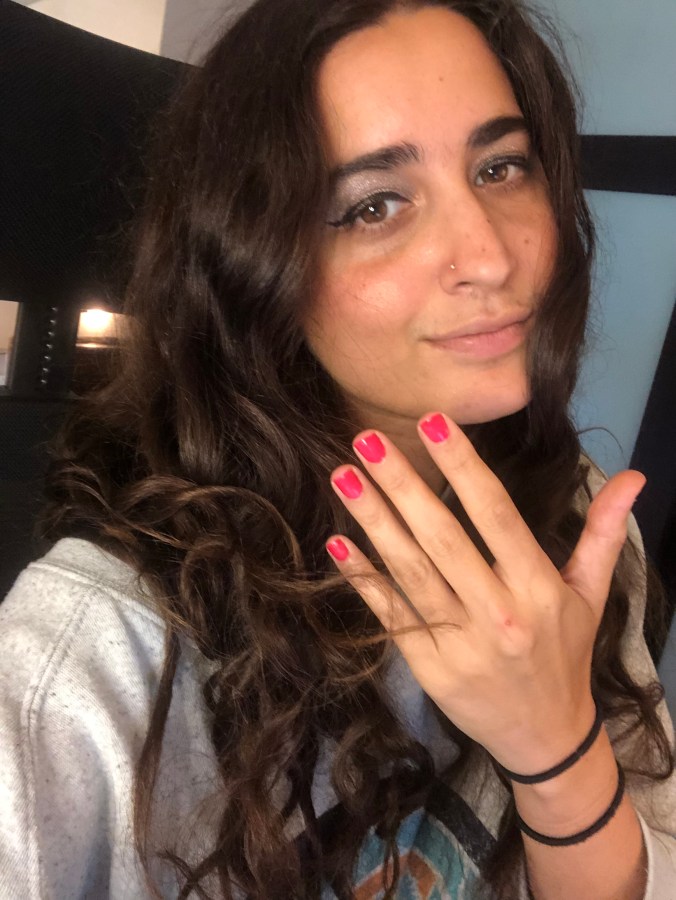
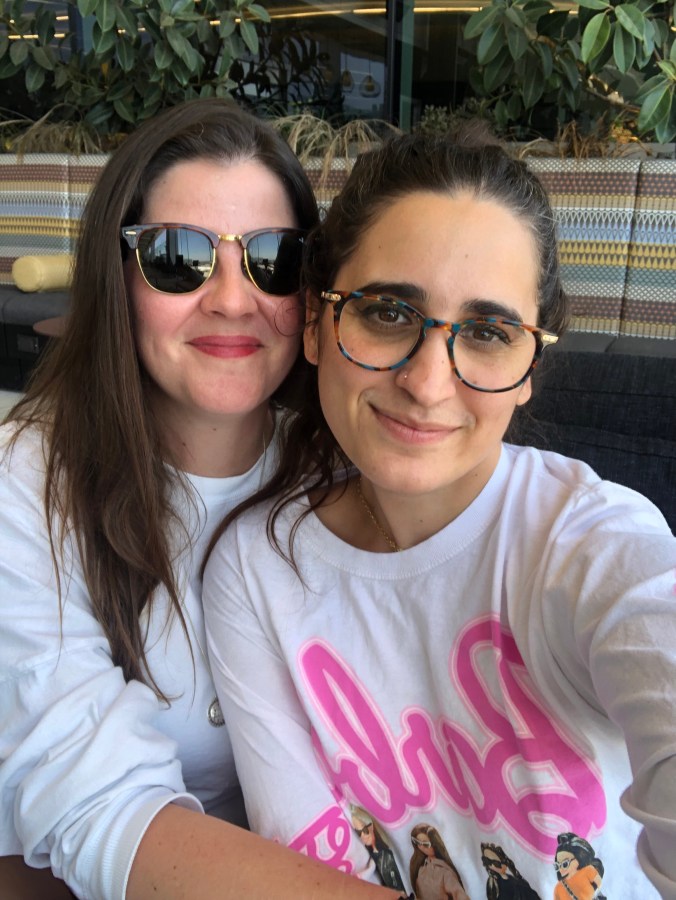
Kristen: I also do think it’s funny because you love to be pampered or have a spa treatment or something like that, which I never want. I don’t even go get my own hair cut. I hate it that much.
Kayla: Yeah. Please tell the folks at home how your hair gets cut.
Kristen: I’ve never felt more seen than watching New Girl and seeing Nick Miller say, “Getting a haircut is too intimate,” because I’ve said that for years.
Kayla: For years.
Kristen: For years, getting a haircut is too intimate. What I do is I trim the ends of my own hair, and that is what happens. I don’t want to go do that. My best friend is a massage therapist and she has never given me a massage because I was like, I definitely do not want that, but I massage you all the time and I’ll do your hair and do different stuff. I like watching videos of people getting facial treatments and having their hair done.
Kayla: See, I can’t do that. I have this weird tactile jealousy where if I watch someone else being massaged, I want to be massaged. I can’t watch it because I’m like, why is that not happening to me right now?
Kristen: So I think it ends up working out in that way — I love the idea of it, and I like doing it to you, but would never want someone to do that to me.And it makes me happy because, much like our sex life, I very much enjoy watching you be happy and pleased.
Kayla: Yeah, I mean, I guess this all just does go back to top/bottom dynamics. That’s all it is. An 8,000 word interview just to land on: I guess we’re just a top and a bottom!
Kristen: The classic scenario.
A Queer History of the Muppets
This past June 7th, queer content creator Thomas Sanders posted a video explaining which Muppets are gay. He specifically highlighted Sweetums as a burgeoning drag queen still trying to get her proportions right along with Gonzo, a canonically gender expansive character — he full on labelled himself as a “whatever” — who previously dressed in drag as Gonzo-rella in Disney’s Muppet Babies series. Gonzo has long been a queer fashion icon for his seemingly thrifted, brightly patterned button up tops and dapper clothing.
Miss Piggy herself has long been called a drag queen, appearing as a guest on RuPaul’s Drag Race, and content creator @rachleahx posted on X January 2024 that Chappell Ronan’s clothing appears to give some pretty explicit call outs to Miss Piggy. In a follow up video on TikTok, she breaks down how Chappell Roan’s Muppet Easter Eggs not only include Miss Piggy but also Constantine, an evil altar of Kermit, and others.
It’s not a new phenomenon. In the early days of the Muppets, Kermit the Frog even had a drag persona named Kermeena, donning a blonde wig to sing songs by Keely Smith and Rosemary Clooney. Sometimes Muppets would even be recycled from one into another, sometimes a Muppet of another gender — if we commit to the idea that Muppets even have a gender. And most recently in a kiki with fellow drag queen Trixie Mattel, drag queen Bosco celebrated Miss Piggy and Kermit as a t4t couple.
It’s also emblematic of the extremely queer history of the Muppets themselves.
The Muppets were always queer
A central tenet of The Muppets is accepting diversity within their communities and overcoming obstacles. Back in 1981, the song “We All Sing with the Same Voice” on Sesame Street not only sought to promote empathy and coexistence but also subtly hinted at LGBTQ+ families with the lyric, “I’ve got one daddy, I’ve got two.” While Sesame Street could not feature as much adult (queer characters and relationships being unfortunately coded as adult at the time) despite Bert and Ernie’s relationship being openly confirmed by a former Sesame Street writer as reflecting his own, The Muppet Show represented the culmination of Henson’s work to return to subversive content.
Matt Baume highlighted how back in the 1970s, Richard Hunt — a performer on The Muppet Show and gay man who created many of the characters that Muppet fans love, including Beaker and Scooter, was pivotal in incorporating queer content into the early runs of The Muppet Show. As Baume reminisces, Muppets like Statler joked about dating Lionel Barrymore and Bunsen and Beaker’s relationships while the show featured LGBTQ+ performers — Joel Grey, Liberace, Elton John, and Vincent Price. Like Sesame Street, The Muppet Show became a place of acceptance and humor for everyone.
And The Muppets never stopped being a group that openly welcomed LGBTQ+ creatives and uplifted queer characters. In 2005, when approaching Sam the Eagle at the gates of the Emerald City in The Muppets’ Wizard of Oz (2005), Fozzie Bear (as The Cowardly Lion) identifies himself, along with The Scarecrow (Kermit), Tin Thing (Gonzo) and Toto (Pepe the Prawn) as “friends of Dorothy!” a euphemism for a gay man.
Miss Piggy in particular has been a vocal advocate, giving a “snout-out to the gays” in a 2011 issue of Out magazine. The third point she shared was a not-so-subtle call for LGBTQ+ marriage equality, reading “Pigs + frogs. Interspecies marriage. The time has come.” It would be another four years before the US would see federal marriage equality. That same year, Miss Piggy walked the red carpet at OUT100 and was featured at a fundraising event for The Trevor Project. There, she said that on behalf of herself, Kermit, and all of the Muppets, “we support you.”
The publicity spoke to the root of Muppet philosophy while raising awareness for their 2011 film The Muppets. The Muppets plot even resonates today as in the film, the fabric puppets attempt to save their studio from an evil oil baron. It’s a not so subtle nod to anti-capitalism, and a premonition of what would come over ten years later when President Trump cut funding for public media, including funding for PBS and further Sesame Street. Netflix stepped in to purchase Sesame Street while providing funding for it to continue for free on PBS.
The Muppets (2011)
In The Muppets (2011), Walter — the fabric brother of Jason Segel — struggles with his identity: is he a man or a muppet in the aptly named ballad. Which community should he be part of and does he have to choose? In the end, he discovers that he’s a muppet, and his brother Gary accepts and loves this for him. He also discovers that he can exist partially in both and doesn’t have to give up anything about himself to be a Muppet. Heck, Walter’s human form is even played by gay actor Jim Parsons.
The spinoff 2015 television series after The Muppets even returned to Henson’s adult humor roots, where in “Hostile Makeover”, Pepe the Praun commented that he too is attracted to Josh Groban. “What?” he says, “He’s a handsome man, and gender is fluid.”
And as far-right anti-LGBTQ+ hostility grew in the early 2020s and increases today, the Muppets stayed true to their roots. Kermit appeared in the “Can’t Cancel Pride” streamed special during the COVID-19 pandemic, and in a 2021 interview with Kryss Shane, long-time Muppets performer Bill Barretta explained that the well-loved Muppet Howard Tubman is gay and that he based the character on his real-life LGBTQ+ friends in order to avoid making him a stereotype, which some have argued is best represented by Uncle Deadly. Unfortunately, the Muppet Studios shot down the idea of making Uncle Deadly explicitly gay in the 2015 sitcom, despite several writers forwarding the idea.
Despite Sesame Street’s continued official stance that Bert and Ernie are “just friends,” the show has consistently celebrated Pride Month since 2017, and shared posts on their Instagram, X, and Facebook accounts that celebrate how “Sesame Street is proud to support families of all shapes, sizes, and colors.” And The Jim Henson Company has even sold Pride collections, including the Fraggle Rock Pride-themed tees and hoodies. Fraggle Rock, a creation of Henson and Hunt, even features an episode titled “Gone But Not Forgotten” in its final season where Wembley makes a new friend he news will die soon. It paralleled, as Baume explained, Hunt’s own life who lost his partner to AIDS shortly before the episode was filmed.
The queer Muppet fandom and Muppetcore culture online
But the queer Muppet online fandom is much older than 2011’s The Muppets. For years, queer Muppetcore has flourished on the Internet and social media channels. Queer muppet fan Kieran Moore argued that Kermit’s songs like “Rainbow Connection” and “Bein’ Green” have resonated with queer people for decades. Frequent contributor to the Muppet fan blog Tough Pigs, Moore highlighted how behind the camera, the Muppets have also put their money where their fabric mouths are in terms of cutting ties with homophobic corporations like Chick-Fil-A.
And their fan base has remained loyal. Silly Lily Arts, an account run by queer artist Lily Cronin, frequently shares LGBTQ+ Muppet content, including a new Pride design this past May of Janice, the lead guitar player in The Electric Mayhem, alongside the words “Protect the Dolls.” The phrase originates from Black and Latina trans women in 1980s ballroom culture but has become a call for solidarity with and protecting trans women of color. It was recently popularized again when designer Conner Ives wore a t-shirt with the phrase after a runway show.
In the same vein, Gay Muppets, an account on Instagram, has 11,400 followers and claims openly in its title that “all the muppets are gay.” For the account’s owner, “it’s always nice to reimagine and rediscover queerness, seeing myself in my childhood favorites is so empowering.” The Internet helped them find niche communities, specifically other LGBTQ+ people who love and see themselves in the Muppets, and they fully plan to walk down the aisle to Kermit’s Rainbow Connection at their queer wedding.
Some of their most recent posts foreground Bert and Ernie, roommates from Sesame Street that are notoriously queer coded. Former Sesame Street writer Mark Saltzman claimed back in 2018 that their relationship was modeled after his own with his partner Arnold Glassman, whereas Sesame Street countered that they are “best friends” (as straight historians would say).
It’s been the best known secret of The Muppets. A 2013 cover of The New Yorker after the historic United States v. Windsor Supreme Court case pictured Bert and Ernie hugging while watching a television lit with a photo of the justices. Similarly, in 2019, Jazzelle (known as Uglyworldwide) transformed herself into the Muppets, confirming the queer nature of Henson’s puppets depicting herself and another as Bert and Ernie learning in for a kiss.
All Muppets are queer
In fact the Muppet community itself, inclusive of Muppets of different gender and species, is inherently queer. The idea that Muppets have a gender is complex. With their ability to speak for themselves (with the help of a skilled puppeteer), they tell people how they identify and how they would like to be addressed, such as Gonzo clarifying after backlash to him wearing drag on Muppet Babies that he is a “whatever.”
It’s not about what genitalia they have — they are made of fabric; it’s about how the Muppets affirm and celebrate who they choose to be. The difference between flesh and blood and fabric actors in Classic Muppet films like The Muppet Christmas Carol and Muppet Treasure Island did not exist then and does not exist now, even on the Muppets child-oriented counterpart Sesame Street.
At a time when the United States is facing record anti-LGBTQ+ legislation aimed at erasing representation of queer people in classrooms, books, and television shows and outright denying our existence and survival, the Muppets show how queer representation has been part of children’s public television and film history since the beginning.
For many queer and trans adults, like myself, the Muppets were a huge part of our childhoods and were some of the first groups to love and affirm us as we truly are, allowing us to share how we identify rather than making assumptions or placing expectations on us. As a result, whether explicit or not, the Muppets’ lessons of acceptance and kindness helped many queer people (like me) come out of the closet when we were in a safe place and served as our chosen family when we were alone.
It only makes sense that queer people have remained loyal to a fandom that refuses to abandon the queer children that these Muppets raised.
2 Comments
-
This is a lovely piece. I do feel compelled to encourage everyone to watch “Kermit and Fozzie on Parkinson, BBC, 1978” on youtube and experience the expression, recoil and look to the camera of Kermit the frog when the interviewer tells him he’s “a heterosexual frog”.
-
Fascinating!
The History of LGBTQ+ Reality TV Dating Shows From ‘NeXT’ to ‘The Ultimatum: Queer Love’
The Ultimatum: Queer Love is perhaps the highest-profile reality dating show focused on queer women and non-binary people of all time — and it’s also one of the only ones. Historically, reality dating shows have focused on heterosexuals, despite the fact that gathering a bunch of horny bisexuals in one party house and plying them with alcohol while demanding constant, private confessionals is TV gold, as proven by Are You The One? Season Eight. While Love is Blind has co-opted lesbian dating rituals to create its bizarre reality TV experiment, dating shows rarely feature actual lesbians, and are historically bastions of traditional heterosexual courtship.
But over the years, a few brave shows have ventured into the murky waters of reality television dating shows for queer, lesbian and bisexual women and/or trans people of all genders. Let’s talk about some of them!
Date My Mom
MTV // 2004 – 2006
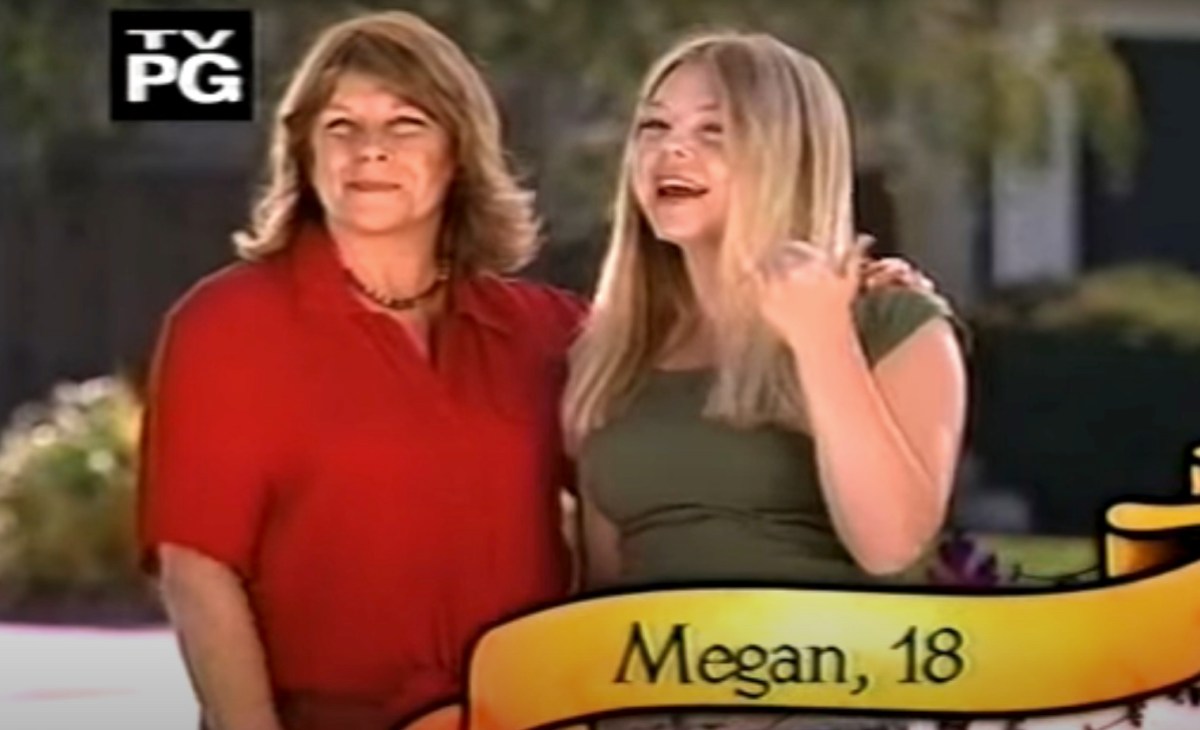
The triumphant mating call of, “I’m here, I’m queer and I’m ready to Mom Date!!” can be heard echoing through the generations from this entry in MTV’s 2000s Dating Show Frenzy in which the Mom of a teenager meets their potential dates and decides who’s best for her child. Although usually focused on heterosexuals, Date My Mom had a five gay or lesbian episodes per season quota, thus offering its viewers something we rarely received on television back then: a parent so supportive of their daughter’s sexual orientation that they wanted to help her find a girlfriend. “To the moms who did it with their daughters, we let them know that this is awesome that you’re stepping up for your child,” a casting director told The Village Voice in an interview about the challenges of casting its LGBT episodes. “To this day, we still all appreciate those parents.”
NeXt
MTV // 2005-2008
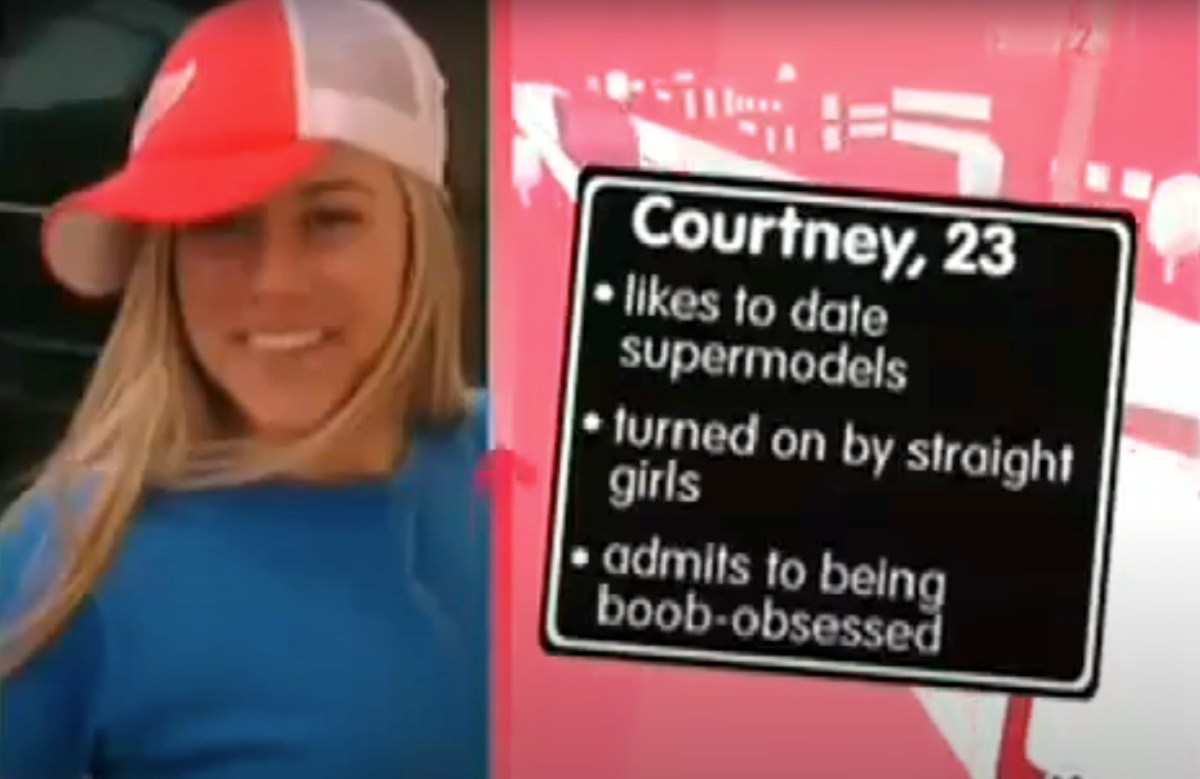
Many MTV shows of the 2000s that are impossible to track down online would feature a few lesbian contestants across their runs, including Parental Control, Dismissed, Exposed and Room Raiders, but NeXt has maintained the most prevalent spot in the public imagination. NeXt wasn’t a queer dating show specifically, but it was immediately inclusive of gay and lesbian daters, including 13 lesbian segments across its six-season run. Contestants went on five dates and were permitted to declare “Next!” to start over with someone new as soon as their present date lost their luster. The daters earned cash for every minute of dating they survived, and whomsever made it to the end could choose a second date or their accumulated lump of cash. Like many MTV dating shows of the era, NeXT was mostly cast with actors and often scripted. The series remains iconic for its stilted intros in which contestants delivered attempts at sassy pick-up lines and three horrifying bullet-pointed facts about themselves. An added delight of the queer episodes was the thirsty twentysomethings on the bus being able to flirt with each other while waiting for their big moment.
A Shot at Love With Tila Tequila
MTV // 2007 + 2008
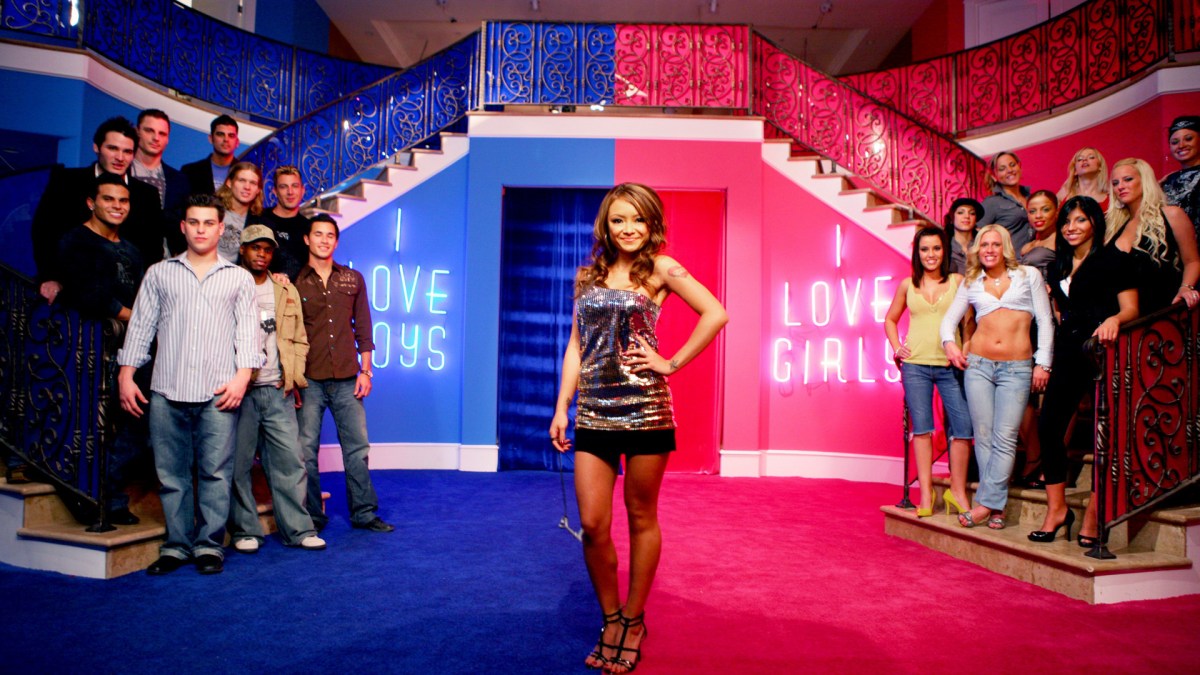
The depiction of bisexuality in this absolute trash reality show haunts us to this day, beginning with the absolute horror of the premise, in which 16 lesbians and 16 men aren’t told ’til the end of the first episode that Tila is bisexual and will be choosing from the lot of them. Before dating Courtenay Semel or marrying Casey Johnson or becoming a Neo-Nazi who claimed to have only been “gay for pay,” Tila Tequila was a MySpace queen often spotted in Maxim and Playboy, and when this show debuted in 2007, we were all compelled by forces larger than ourselves to tune in. Personally, I shut it off after ten minutes because I was too offended to go on… but then I happened to catch the rest of the episode at the gym and…I got sucked in. Everybody got drunk and sloppy. Tila and many of her female suitors endorsed an unchecked butchphobia popular in mainstream and queer media at the time, which made it incredibly satisfying that she ended up with hot-as-fuck butch firefighter Dani Campbell as her final girl. In the end, though, she chose the male suitor, although they obviously didn’t last, and Tila returned for a second season.
A Double Shot at Love with the Ikki Twins
MTV // 2009
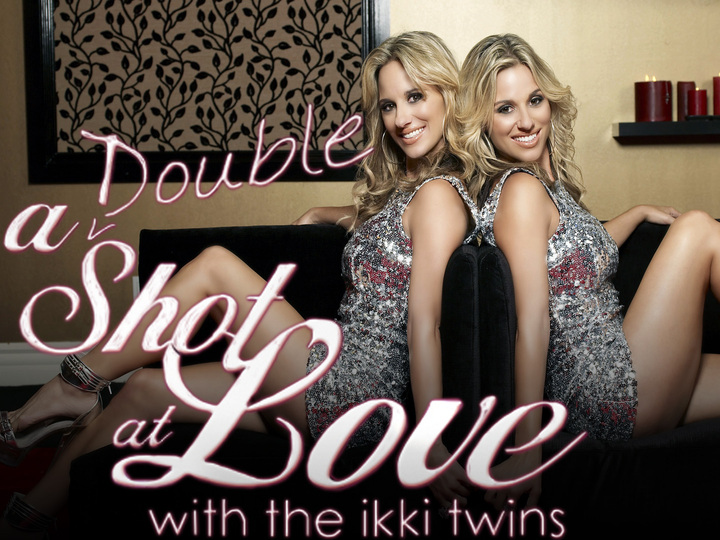
Tila Tequila was the host of this spinoff that again found 12 heterosexual men and 12 lesbians competing for a shot at love, this time with bisexual twins Rikki (Erica Mongeon) and Vikki (Victoria Mongeon), models who’d appeared in Playboy and a Hooters calendar, among other similar gigs. After this season, MTV canned the concept in favor of having a bunch of girls compete for a date with the Jersey Shore boys.
Naked Attraction
Channel 4 (UK) // 2016 – present // watch on Channel 4
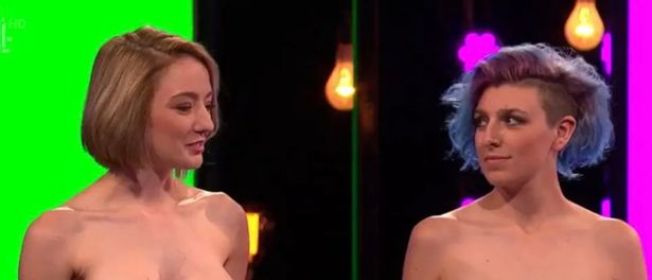
From the very first episode of Naked Attraction, this British show was inclusive of bisexual, pansexual, trans and/or queer contestants, who narrow down their group of potential dates to a handful of winners by seeing portions of their naked body, from bottom to top.
The Bi Life
E! (UK) // 2018 // Watch on Hayu

Courtney Act hosted “the UK’s first ever bisexual dating show” that featured bisexual people living together in a Spanish villa, exploring the dating scene of Barcelona and supporting each other through it all.
Ex on the Beach
MTV // 2018 – 2023 // Stream on Paramount+
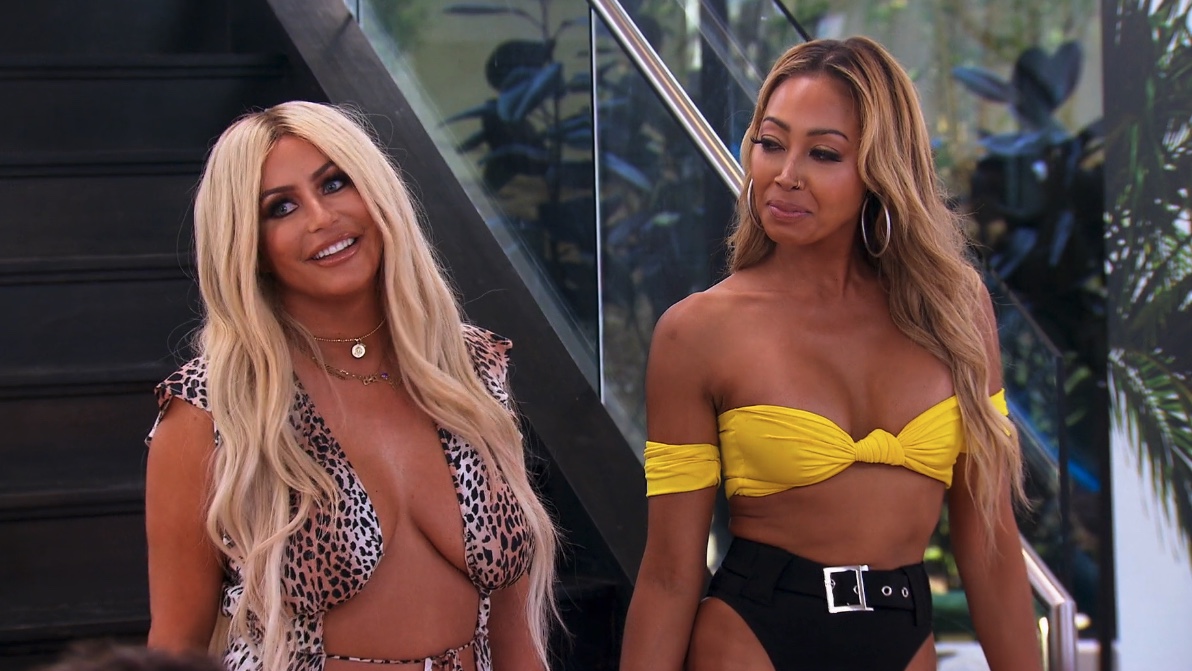
A group of single social media and reality TV stars gather in a luxurious Malibu villa for a dating show with a twist they somehow do not expect, even in latter seasons: their exes are gonna creep out of the ocean. Everyone wears designer swimwear, gets drunk, participates in challenges, digs into each other’s secrets, hooks up and votes each other off the show. Queer women started showing up in Season Three with bisexual reality TV / pop music entrepreneur Aubrey O’Day. Season Four — which eschews a tropical locale for winter in New Zealand — features noted lesbian Staten Island firefighter and Challenge contestant Nicole and a parade of her exes in a environment already queered by a drag queen, a bicurious former Nickelodeon actress, a trans beauty influencer and a bisexual Real World guy.
Game of Clones
MTV // 2019
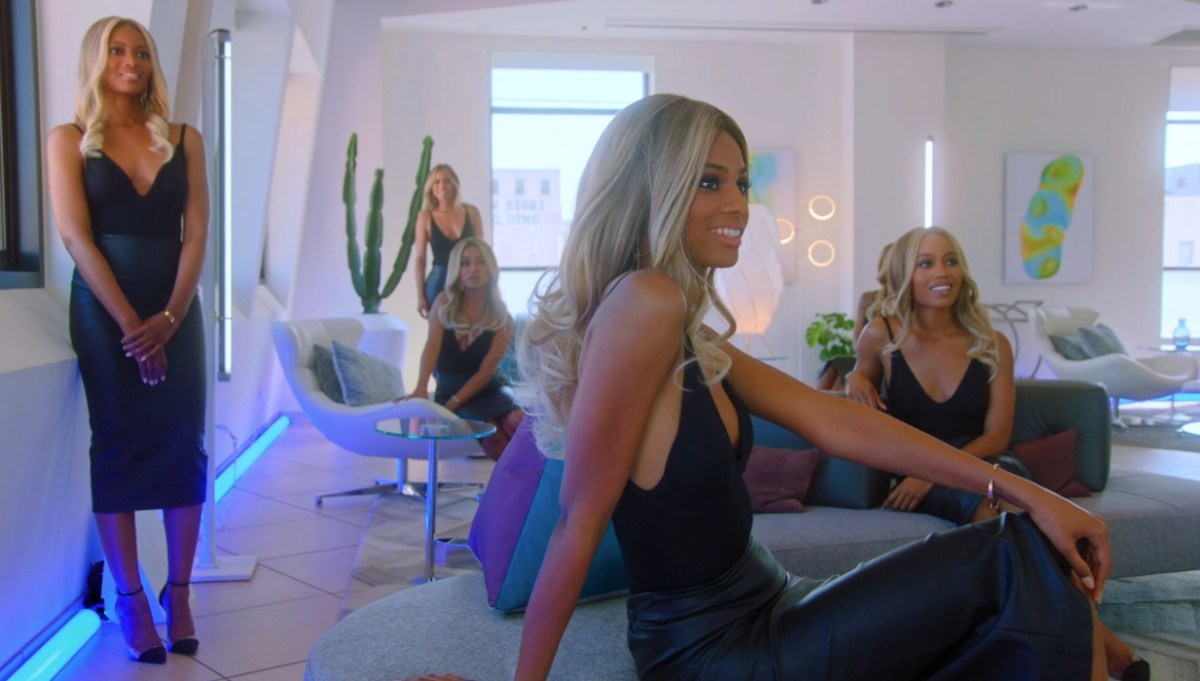
In Clone Wars, reality television stars are given the rare and fascinating opportunity to date clones of their celebrity crushes, and amongst them are some lesbians. Nicole of The Challenge and Ex on the Beach is presented with seven Ciara clones and will date them all to determine which clone will win her commitment-phobic heart forever.
Are You The One? Season 8
MTV // 2019 // Stream on Hulu or Paramount+
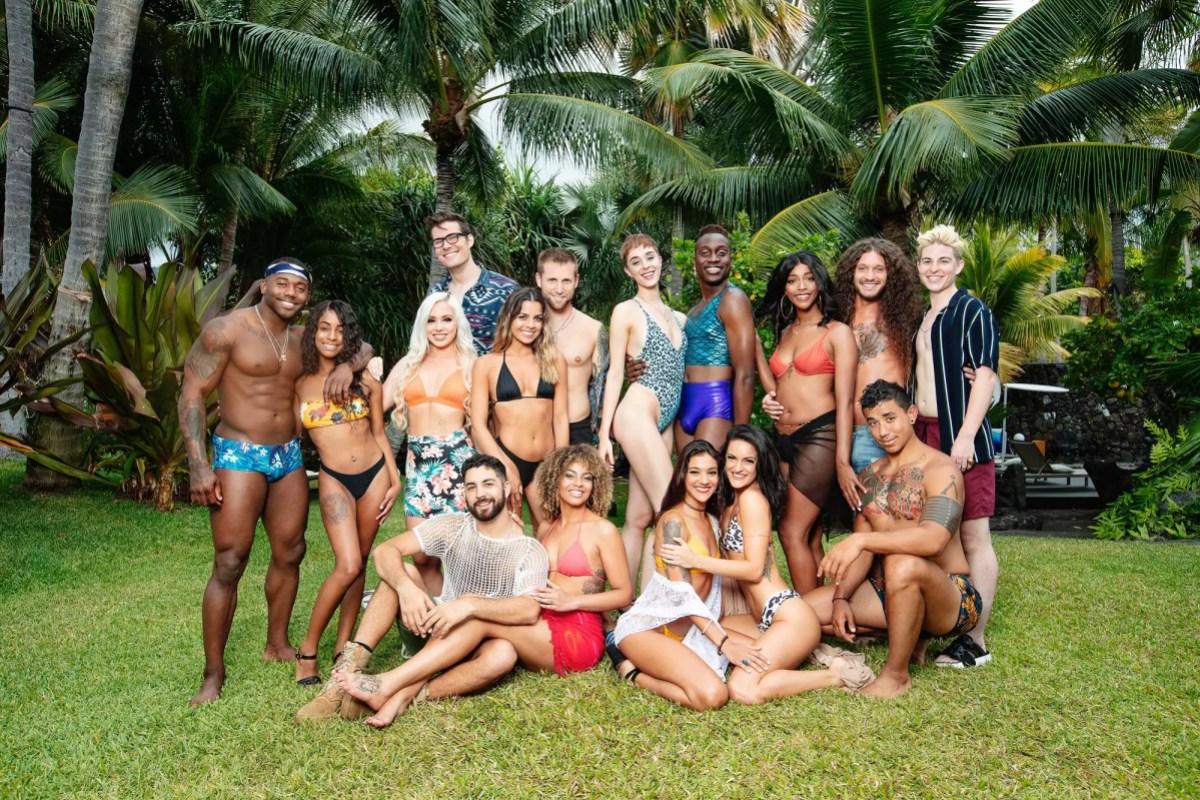
The absolute apex of queer reality television, Are You The One? mashed up 16 singles in an alcohol-infused house and through games and socials, challenged them to determine whomst amongst the other singles had been determined by a mysterious overlord to be their soulmate. Guessing correctly as a team wins some kind of money. But in Season 8 of this successful MTV program they decided to improve the show’s quality tenfold by casting an entirely bisexual group of singles. Every man, woman and non-binary person in the house could potentially match with anyone else in the house. It was a beautiful moment in television history that I for one will never forget.
Singled Out 3.0
Roku // 2020 – 2021
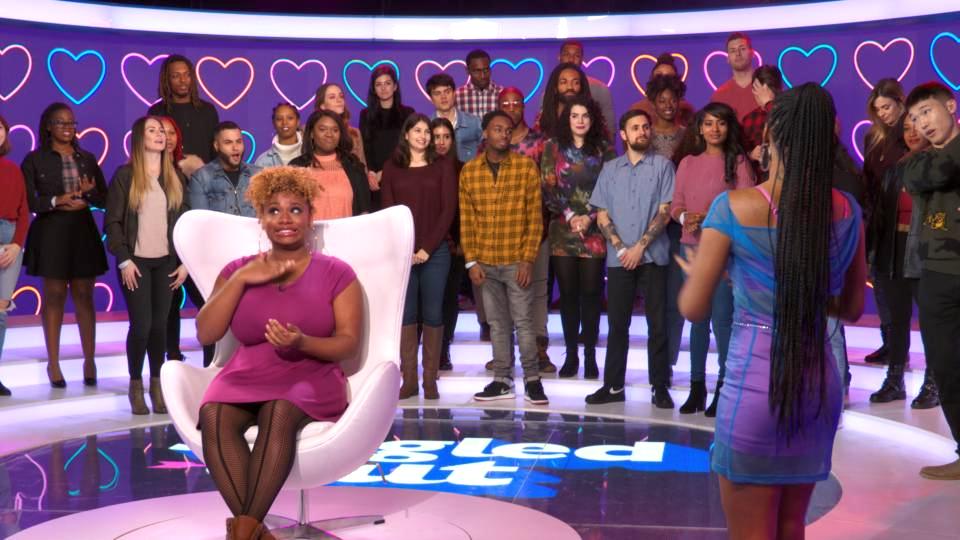
The original Singled Out was an absolute mainstay of every ’90s sleepover and an irresistible late-night double-billing on MTV with Loveline. The Singled Out gameshow put Playboy model Jenny McCarthy (now a notorious anti-vaxxer) and Chris Hardwick (of The Nerdist) on the map as hosts guiding a lucky girl or boy through weeding out 50 potential dates without seeing them, the pool decreasing as the picker cycled through their preferences amongst presented funny categories. The show was rebooted as a YouTube series in 2018 with an “urban contemporary hip-hop theme” that involved a whole thing with Catfishes. Then, finally, a third reboot arrived in 2020, produced by MTV for the Roku Channel. Hosted by KeKe Palmer and Joel Kim Booster and presented in mini-episodes by the Roku Channel, this new iteration featured bisexual and lesbian contestants in its two seasons of minisodes — even once featuring a lesbian couple looking for a third to join their relationship!
Dating Around
Netflix // 2019 – 2020 // Stream on Netflix
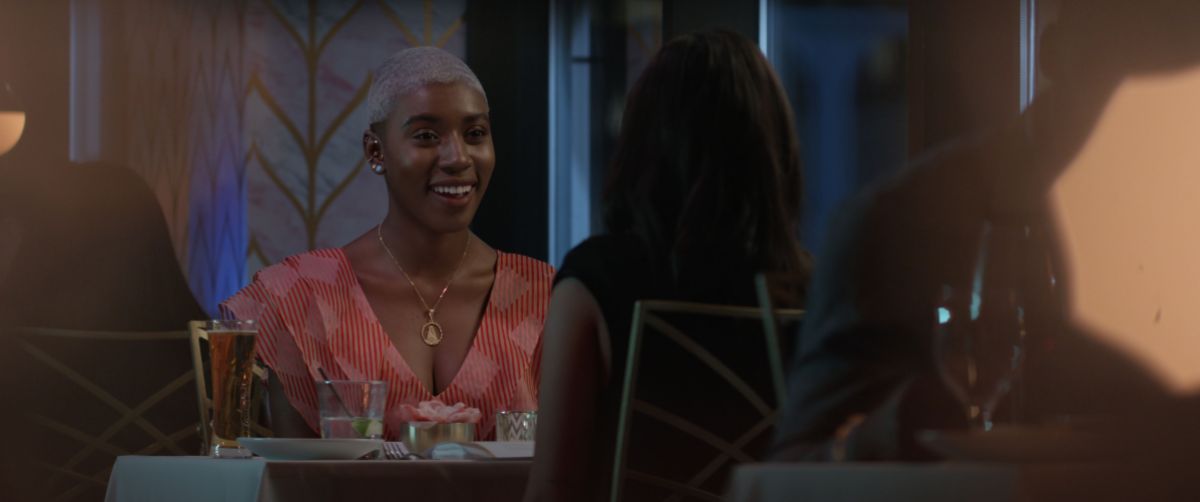
The producers of this Netflix show wanted a queer-inclusive cast of folks who wouldn’t ordinarily be on reality TV — people of all ages who could portray a realistic look at what dating is like in the age of apps and all that. “It is a little window into many people’s lives, of many different backgrounds and orientations, as they go on many first dates,” wrote Vulture in “Netflix’s Dating Around is a Secretly Great Reality Show.” Episode 6 featured Mila, who met five women for drinks, dinner and dessert.
12 Dates of Christmas
HBO Max // 2020 – 2021

Tragically wiped from HBO Max’s platform, 12 Dates of Christmas invited contestants to a romantic holiday-prepped chalet in the snowy mountains of somewhere to face a rotating cast of suitors with whom leads enjoyed dates like sledding, building gingerbread houses, riding horses through the snow and cuddling in bedazzled glamping tents. The winner gets to accompany the lead on a trip home to meet the family for Christmas, except it’s also definitely not Christmas, it’s March, and everybody is just pretending that it’s Christmas. Season Two featured three leads: a gay man, a lesbian (the stunningly beautiful Amanda Grace Jenkins) and a straight man.
Love Trip: Paris
Freeform // 2023 // Buy on Prime
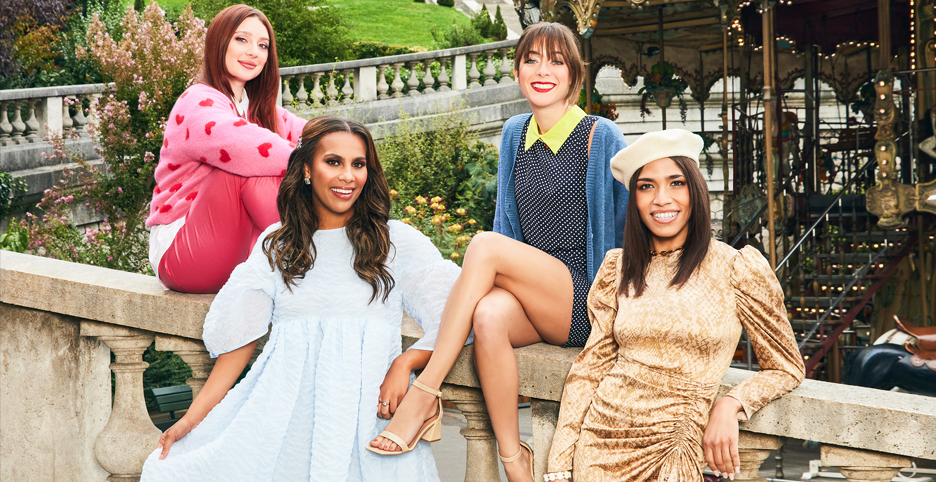
Caroline, Rose, Lacy and Josielyn
On a surface-level Freeform’s Love Trip: Paris seems like just another heterosexual dating show: four twentysomethings who’ve been unlucky in love move to Paris where love is somehow truer and they’re given the opportunity to meet and date a rotating roster of local men… and women, because three of the four contestants are queer. We’ve got: 29-year-old Lacy; a chatty, sexually fluid “mental health podcaster” who loves crystals, open-hearted 26-year-old Mexican-American bisexual trans woman model Josielyn and finally Caroline, a bubbly 26-year-old genderqueer personal trainer from New York who proudly asserts “my best friend is my cat.” This show has been highly overlooked and I highly recommend it!
The Ultimatum: Queer Love
Netflix // 2023 — // Stream on Netflix

The Ultimatum: Queer Love is notable for many things, including introducing the world to Mal, who is a king and deserves the world. Six couples who are facing an ultimatum — one person is ready to marry and the other isn’t — gather together to try out dating each other, rather than the person they came with. After a three week “trial marriage” they’re able to trial marriage with their original partner and then at this point they are obviously 100% ready to decide on the next steps of their relationship. I love television!
Love Allways
Paramount+ // 2023 // Stream on Paramount+
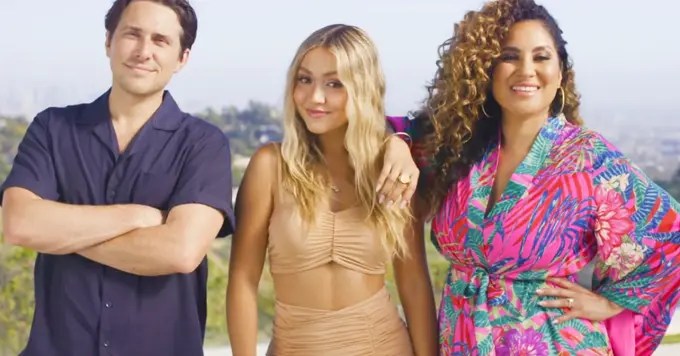
Truly breaking the mold with a cast of Gen Zers, this program sees two ‘dating coaches’ employed to help singles of all genders in their pursuit of Lexi, the show’s bachelorette. The dating coaches are vaguely competing against each other to see which coach’s “team” wins Lexi over? It’s sort of like watching a bunch of TikTok drafts from a 21-year-old, or like a loosely organized pool party. But it’s fascinating to see what a dating show looks like when most of the contestants are too young to drink!
Couple to Throuple
Peacock // 2024 // Stream on Peacock

Four couples explore non-monogamy by spending a month in a tropical resort, meeting and dating potential thirds to bring into their relationship, and then at the end they can decide if they wanna be threes forever or remain a twosome. It wasn’t always the best show when it came to poly representation, but it had its moments.
I Kissed a Girl
BBC // 2024 // Stream on Hulu

The first British reality show exclusively featuring lesbian and bisexual women matched up ten single sapphics, forced to meet for the first time by kissing each other directly on the mouth, then living together in the “Masseria,” a beautiful italian country house. Sally appreciated the show’s respectable masc-to-femme ratio and contestants coming from small towns as well as the big cities. “Everyone on I Kissed a Girl just seems so good natured about it all,” she wrote. “They joke about wife swapping! They fess up quickly to their current partner when they like someone else! They celebrate each others’ sluttiness! There’s also a decent amount of people opening up and getting vulnerable about all kinds of aspects of their queerness and intersectionality, which is excellent to see on TV. As one of the girls so articulately puts it: “Being here is quite good for that being gay thing.”
19 Comments
-
wow does anyone remember that LOGO dating show, “can’t get a date”? that was so good!
-
I came here to say this! I always enjoyed the dry humor of the voiceover person talking to the dateless people.
-
-
I was very disappointed by the first few episodes of Love Allways and don’t think I can keep watching it, a) because it’s sooooo cis girls vs cis boys and b) because while all the women are queer, only one of the guys seems to be.
So essentially, they put a bunch of straight cis guys and queer, pan, bi and lesbian cis women into one house, without telling/warning the women before. Yawn.
-
it’s not a dating show but i wish Hoochie Daddies was on here!
-
First Dates (UK, there was also an Aussie one, not sure about US?) was also great, very chill and had decent queer representation!
-
There was a dating show in the 90s called The Third Wheel or The Fifth Wheel or something. It was on very late at night, and the premise was that 2 dudes and 3 women or 2 women and 3 dudes go on a date all together and then each of them chooses which person they like best and usually there would be obvious pairing up and one person left out. Which obviously sucks and is mean. But one time, TWO OF THE GIRLS CHOSE EACH OTHER, and this repressed Midwestern closeted baby gay nearly lost her damn mind because I thought, for the first time ever, that maybe someday a girl could pick me too. So, I guess thank you to this mean, accidentally one time kinda queer dating show for inadvertently giving teenage me a little hope?
-
Obligatory comment about Princess Charming (Germany)
Would be fun to see Autostraddle spotlight some of the more obscure web dating shows too.
On ‘King of Drag’ Nothing Is Scarier Than Trauma
As someone whose favorite genre is horror, it pains me to say that I think most contemporary horror is really bad. Instead of being fun and having depth, so much of it wants to seem important without actually having anything to say at all. There are exceptions — especially among indie and international films — but I’m tired of empty films that claim to be about trauma. Want a great horror film about trauma? Watch Slumber Party Massacre II, a surreal fever dream where the killer is a retro rocker with a drill attached to his guitar. It’s smarter than anything Ari Aster has ever done.
I’m thinking about the state of modern horror, because episode three of King of Drag is all about the genre. But Murray’s fun bits at the beginning of the episode quickly give way to an episode of television that earns its trigger warnings — due to the lived experiences of the kings rather than their horror craft.
When the theme is announced reactions vary. Henlo has spent eight years working at haunts and is thrilled to get the opportunity to show what he can do. Perka is another king known for horror, a fact that makes him anxious to live up to reputation. Other kings like Big D go into the week feeling less confident.
Sasha comes to the Man Cave for the weenie challenge: a makeup look that’s half glamour/half monster. As I said last week, Sasha is such a great presence on this show. She’s the best kind of strict teacher, one who knows the kindest thing she can do is to push her students to be better.
As the kings get ready, Big D jokes that he has never done a half and half makeup look and arguably has never done a look period. Pressure K then talks about being inspired to do drag after Perka Sexxx, a very nice moment given Perka’s self-deprecation and anxiety. Then Charles talks about his history with attempted suicide.
The makeup looks are revealed and I really wish we got more time to look at each of them! This is inevitable with a first season of this kind of show, but production feels as rushed with these challenges as the kings. But based on what we see Perka is a deserving winner.
The beefy challenge is to create a look and performance inspired by what scares the kings the most. As the kings start to get ready, it quickly becomes clear that none of these fellas are afraid of ghosts or spiders. Instead the concepts range from Alexander the Great’s fear of fast fashion-induced climate disaster to Pressure K’s fear of the evil he has encountered in his personal life.
I often joke that RuPaul’s Drag Race dabbles in being RuPaul’s Trauma Race. On that show, moments where queens share their personal challenges often feel manufactured in a reality TV sort of way. There are big tonal shifts and these painful moments feel mined for reality TV tension. To its credit, King of Drag takes a different approach and really lives in the reality of what’s being shared. That said — and I fear it is callous of me to admit this — at some point in the episode I started to long for the whiplash of the reality TV approach. The pain on display here is so immense it results in a fairly brutal hour of television. It becomes less about how the trauma informs the drag and more about the trauma itself.
The judges this week are Sasha, Tenderoni, Liv Hewson, Vico Ortiz, and Dragula winner Landon Cider. It’s also revealed that this week will be a double elimination.
Perka starts off the performances with a number about being misgendered and having our rights getting taken away. He is a very talented king and he succeeds at creating something that’s genuinely uncomfortable and frightening, ending with him shouting the horrible words his mom said to him. Personally, I think it would have been even more effective with a dash of subtlety — did not need the trans and American flags — but there’s no denying its power.
Alexander then comes out in a cloak of different fabrics with a sales tag around his neck. It’s a cool look and I like the concept, but it does feel like it’s missing… something. Sasha leans over to another judge and says, I didn’t get it. Getting Alexander’s context in the man cave definitely helped.
Molasses continues to show he’s the best king in the competition with an abstract performance where he’s painted in all black and has a structured outfit that gives the illusion of four legs and a crystal void on his back. It’s by far the subtlest of the performances while still being so haunting. More of this please!
Big D also stands out as the only king who adds some humor to his take on horror. He’s a mad scientist with an enlarged brain saying, “I’m trapped in my own head.” Then his head explodes to reveal a miniature of him Ratatouille-ing it up in his head! Incredible! I was obsessed!
Pressure K comes out in a coat with “evil” words. He then throws off the coat and breaks off the chain around his neck. Earlier in the episode, he talks about being forced into femininity as a kid and the connection between that and using less makeup in his drag. The whole episode feels very transformational for K, but it doesn’t necessarily translate into the performance that feels a bit simple and rushed.
Dick’s performance also felt too simple to me. I really liked his grandfather clock outfit, but I needed more than the face reveal. Charles’ had the opposite problem with a look that was too simple, but a performance energy I really enjoyed.
We end with Henlo who had the biggest disappointment of the week. He looks so cool with wings of syringes and pus and blood oozing out of him. But then his final blood reveal doesn’t work! He seemed like a shoe-in for the top until he was unable to recover from that mishap.
Henlo ends up being safe along with Dick which seems fair given what he achieved and what went wrong. However, I do wish the judges spoken to him, because I think there was a lesson in there about what to do when things go wrong. If you commit to a performance, you can make anything work!
Throughout the judging, the kings share more details about their trauma and it’s all a lot! Again, queer and trans people have a lot of trauma and I do think there’s a value to giving those experiences the weight they deserve. I think it’s maybe a question of casting? The group leans very sincere and open and these moments might work better if a few more of the queens brought a slightly different energy. Or maybe everyone else is loving this and I’m just a cold-hearted Capricorn! Open to that possibility!
My biggest frustration with this episode is the way it tries to manufacture tension around the bottom three. It’s clear that Perka, Molasses, and Big D are the top, but because Big D is critiqued for wearing sneakers, there’s faux tension about whether he’s actually in the bottom. Last episode, there was also a fake out about who was going to be safe and who was tops/bottoms, and that kind of Tyra Banks/RuPaul reality TV phrasing feels very counter to the rest of the show’s tone. Also if Big D had been in the bottom I would’ve rioted.
Perka wins! This choice makes sense to me! I did enjoy Big D’s performance more, but I understand the sneakers being an issue.
The final thrust this week is the Blair Butch Project where Charles, Alexander, and K have to record videos of them getting scared and killed in the man cave. Based on what we saw, I thought K was actually the best, but alas K and Alexander are eliminated. I do, ultimately, agree with this choice, because the episode felt like an end to an emotional chapter for K and he even sort of says he’s ready to go home.
I hope everyone in this cast has a good therapist!
Showbiz! Here are some random thoughts:
+ Thank you to the commenter who shared that the opening animation is by Erma Fiend aka drag king Sweaty Eddie!
+ During the intro, Murray says from Rocky Horror to I Saw the TV Glow, queer people love horror, and I did, in fact, yearn for Murray and the show to teach the children about actual classic horror. From Dracula’s Daughter to I Saw the TV Glow… From The Uninvited to I Saw the TV Glow… From Cat People to I Saw the TV Glow…
+ Perka saying he knows he’s a man because he couldn’t find his own g spot was very funny.
+ Henlo is, of course, a big Yellowjackets fan.
+ King I’m rooting for: Molasses
+ King I’m horniest for: Molasses
+ King I hope returns next week with newfound confidence: Perka


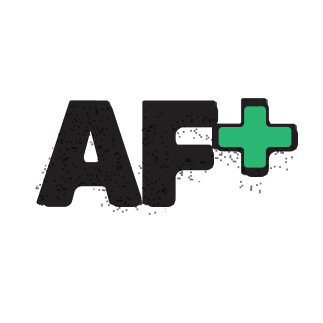

I am campanelle! I’ve actually never had this pasta shape so now I have a quest for next grocery run! It’d be super cute if it’d come with a recipe the shape was a great fit for